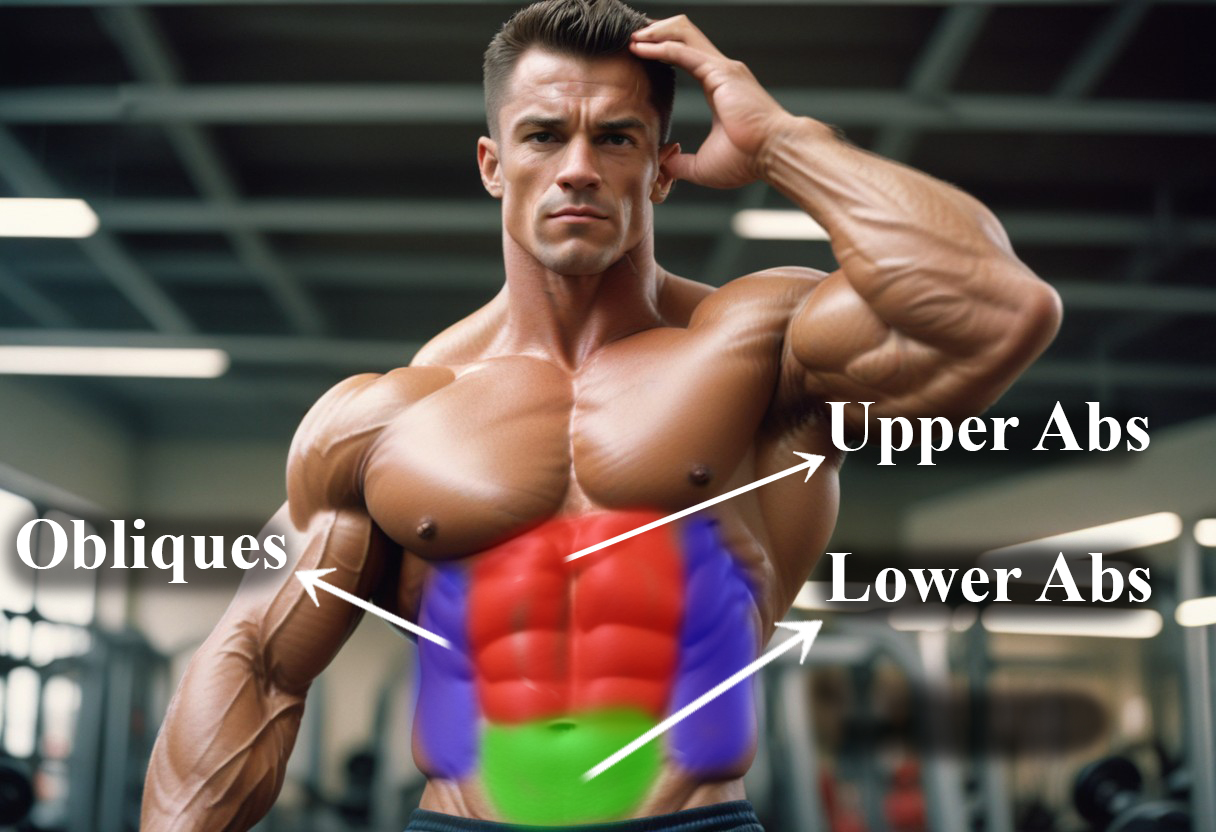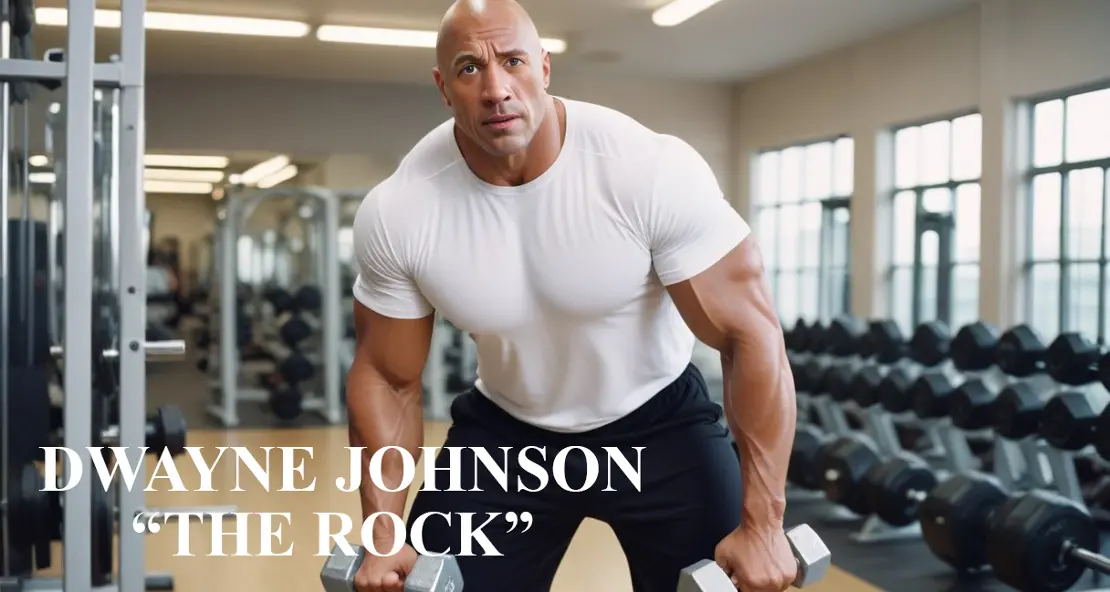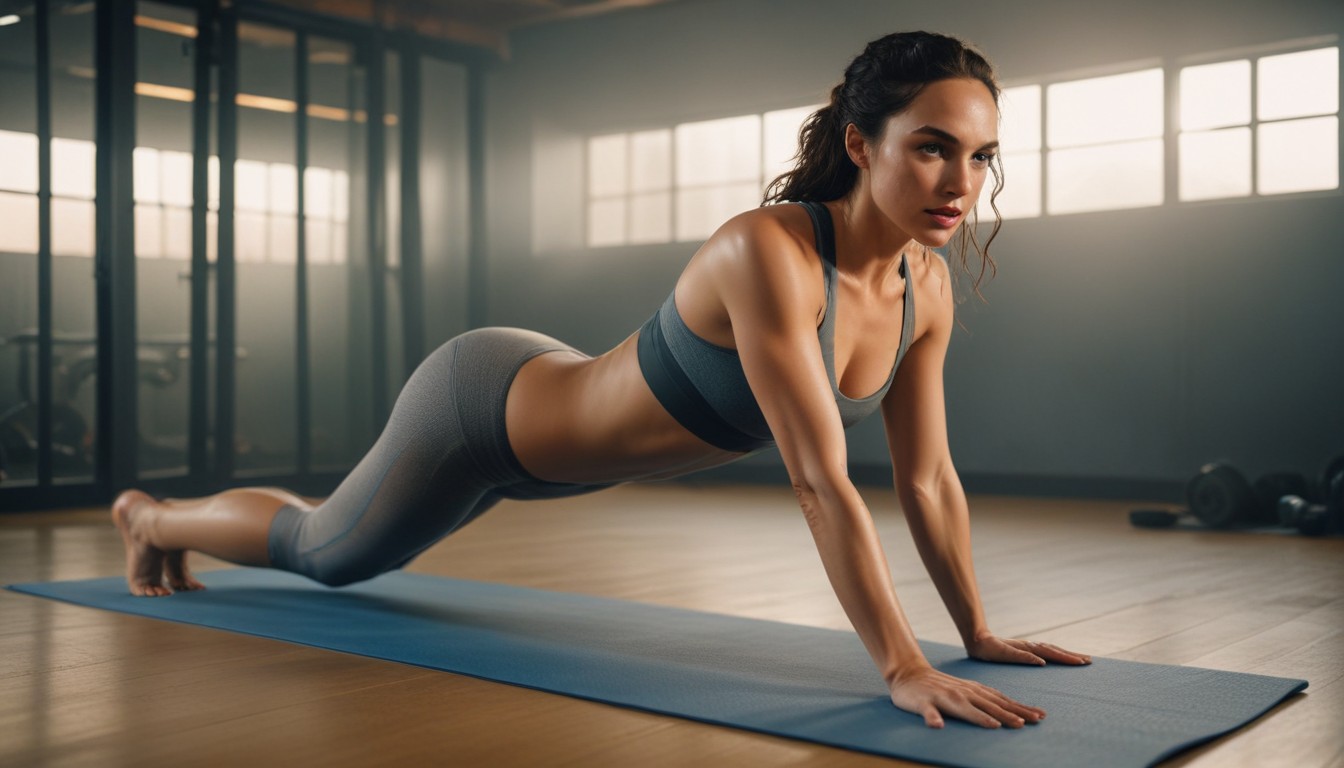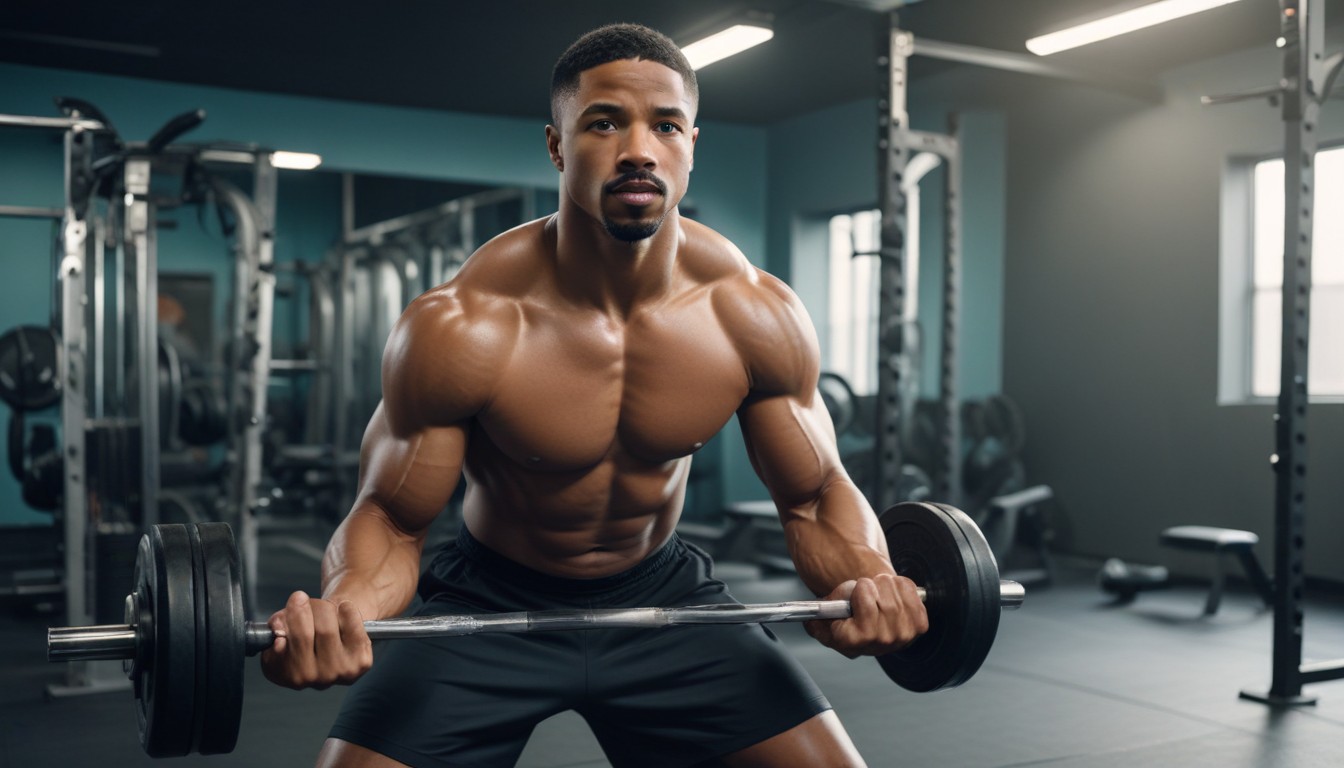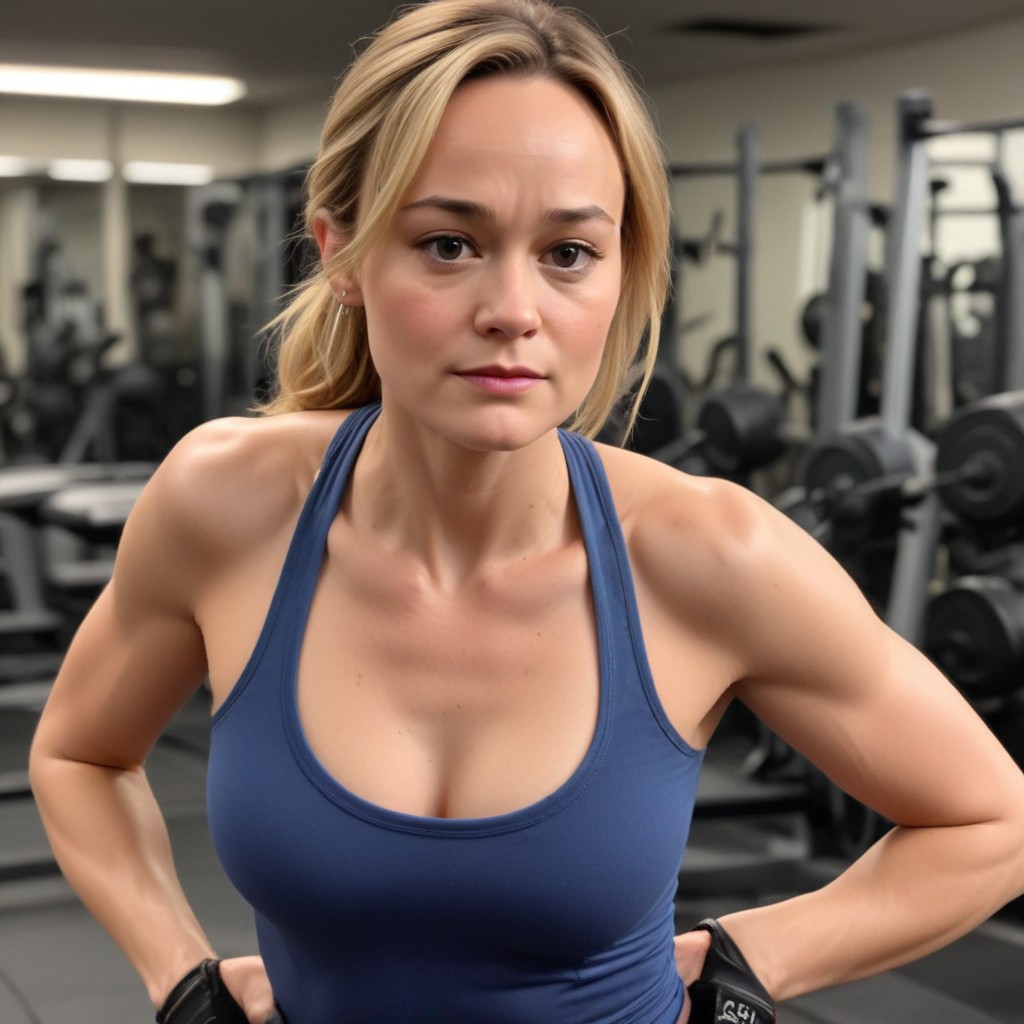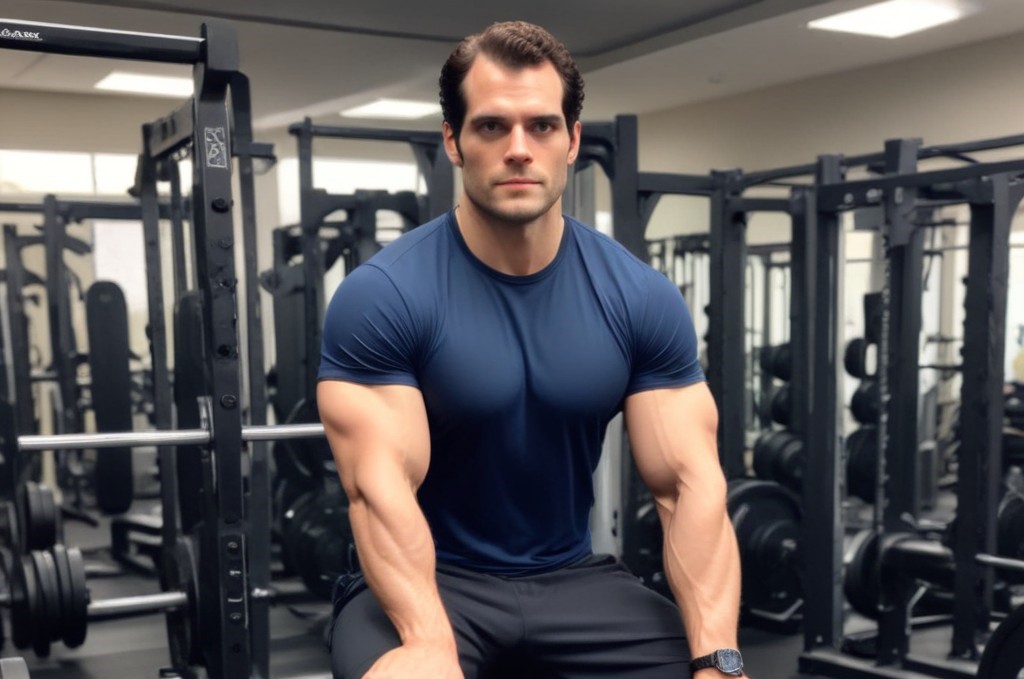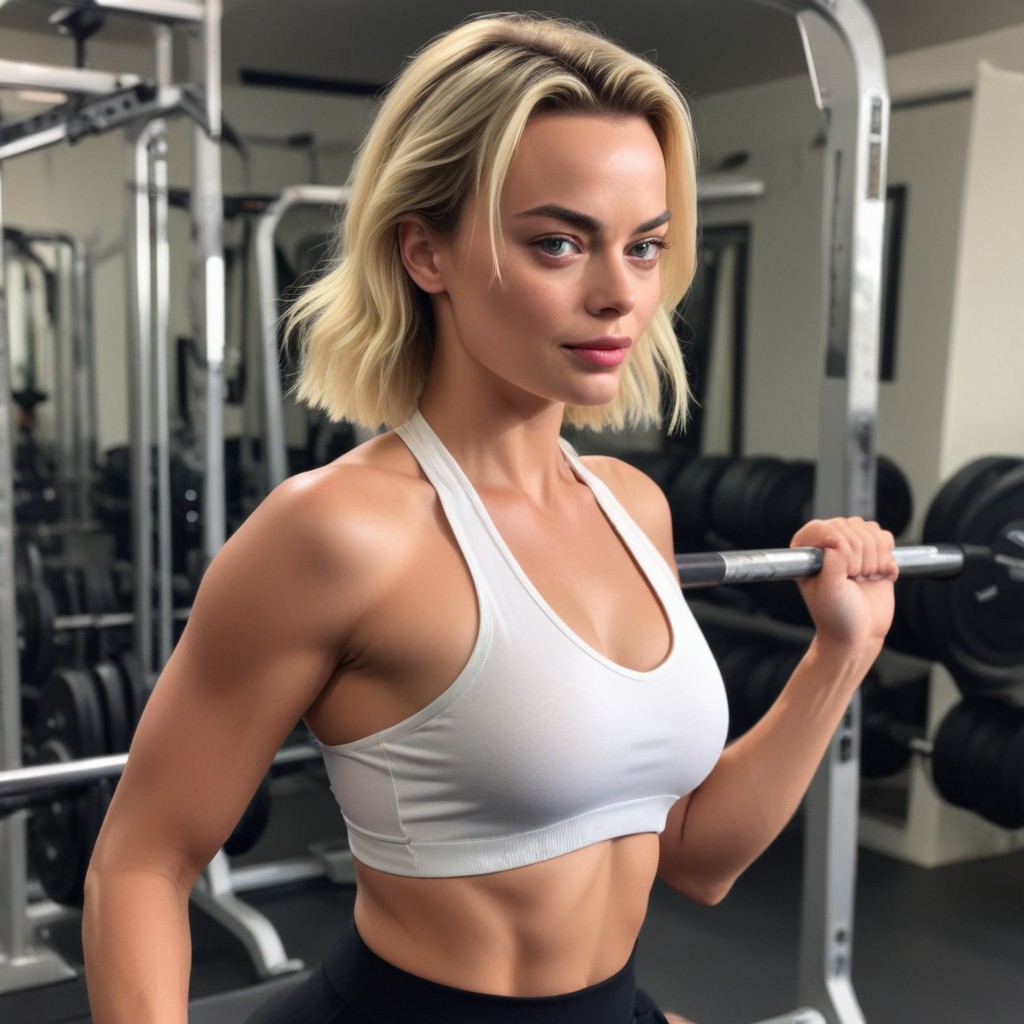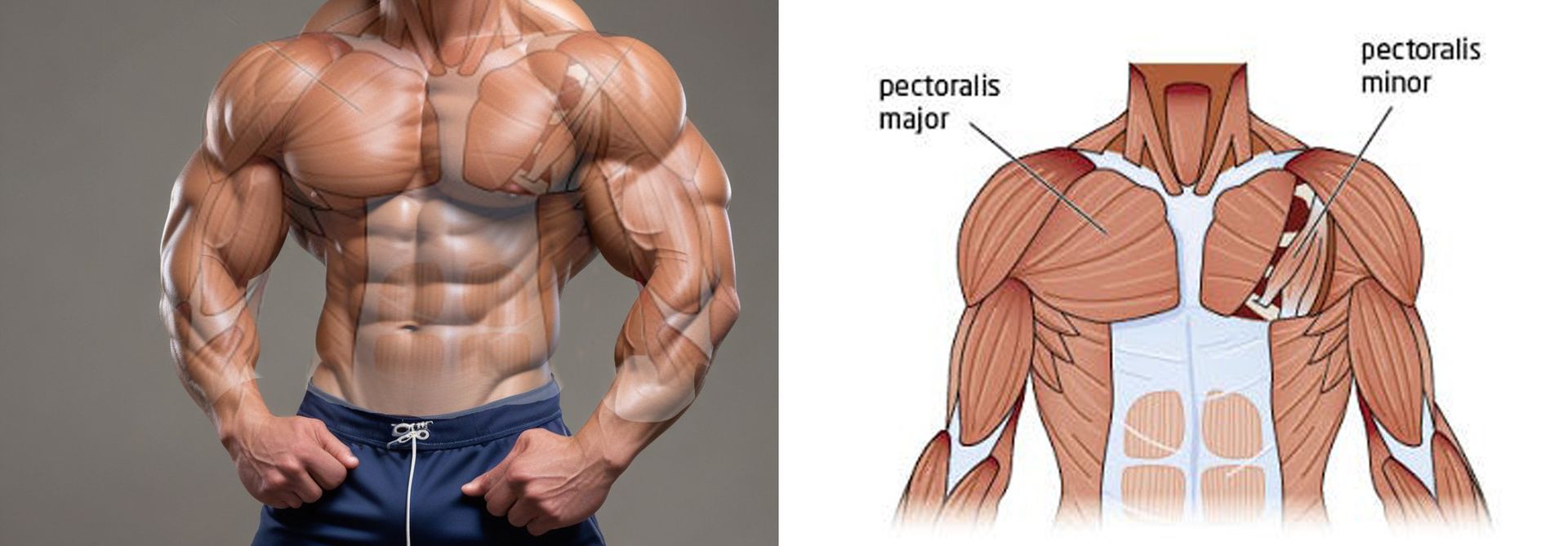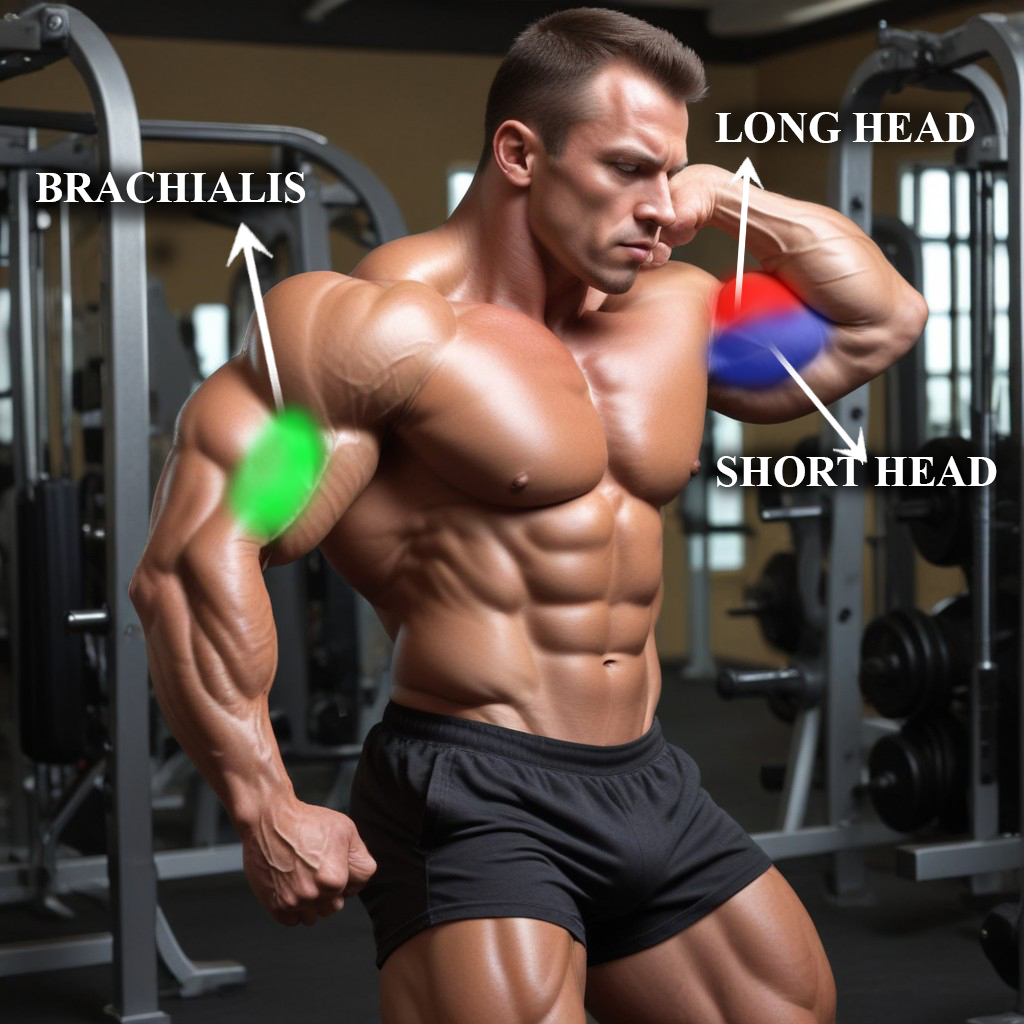Maximizing Your Fitness: Understanding and Implementing Effective Workout Routines
Read article below the category
Welcome to Activelifeline : Your Ultimate Guide to Fitness and Nutrition
Embark on a journey to transform your body and nourish your soul with FitFusion, your go-to destination for comprehensive workout plans and dietary guidance. Whether you're a seasoned gym-goer or a newcomer to the world of fitness, our blog is your trusted companion on the path to a healthier, happier you. Explore expertly crafted workout routines tailored to your goals and fitness level, complemented by nutritious meal plans and dietary tips to fuel your success. Join our community of like-minded individuals committed to living their best lives through exercise and wholesome nutrition. Let's ignite your passion for fitness and unlock your full potential together!
BELOW MORE..
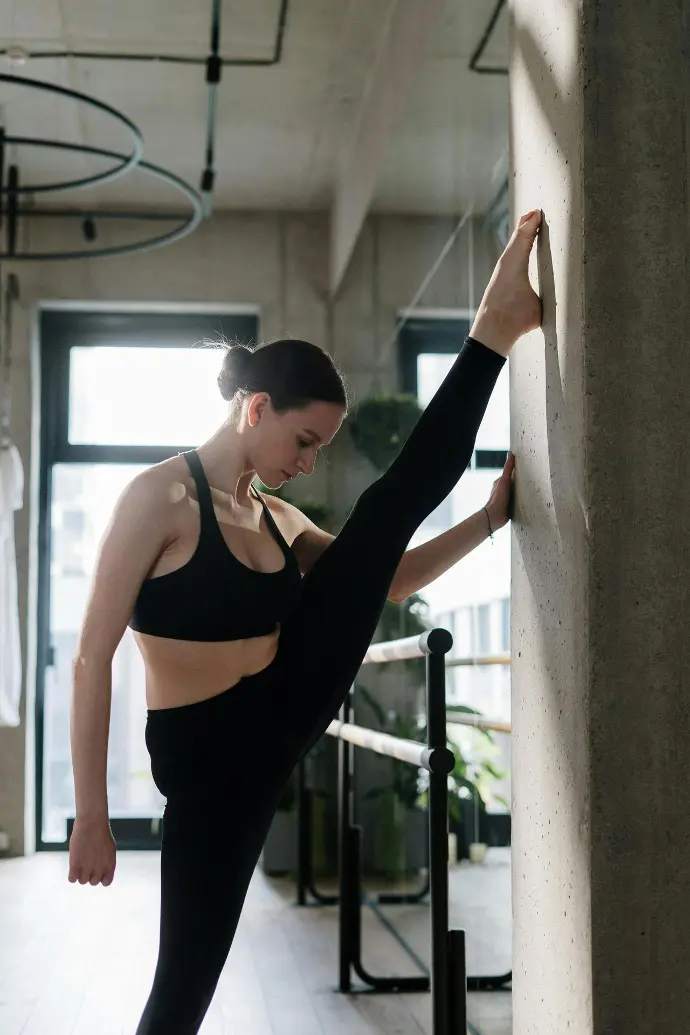

Men's fitness
Dive into tailored workouts designed to enhance strength, agility, and endurance, sculpting the physique you desire with targeted exercises and expert guidance.
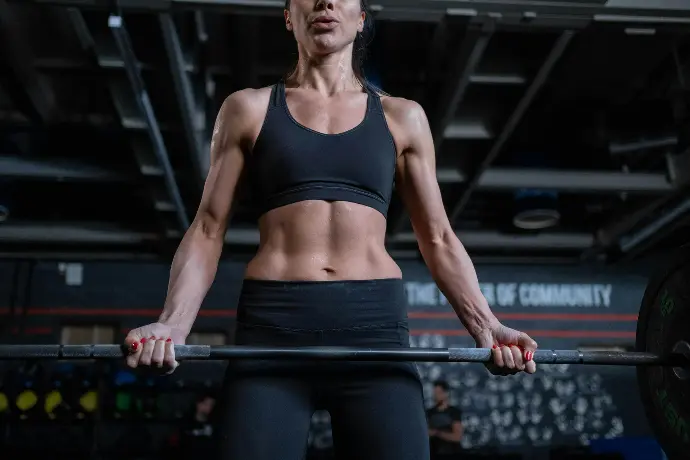
Women's Fitness Journey
Embark on a transformative path with workouts tailored to women's bodies, empowering every step of your fitness journey towards strength, confidence, and holistic well-being.

Muscle Mastery
Elevate your strength training game with advanced techniques and personalized routines aimed at maximizing muscle growth and performance.
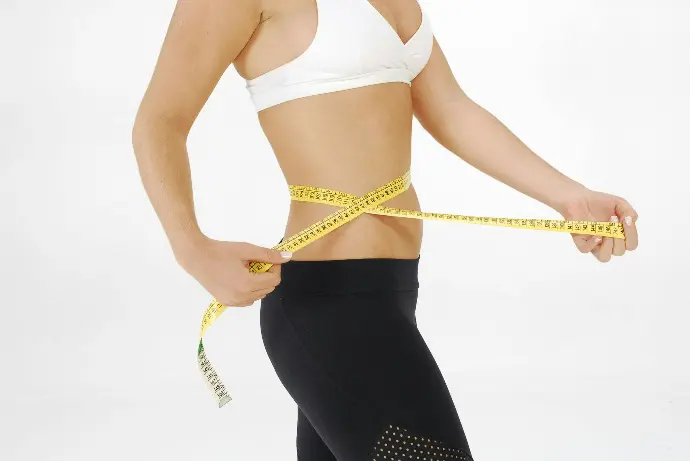
Trim and Tone
Sculpt and define your body with dynamic workouts focusing on burning fat, toning muscles, and achieving a lean, sculpted physique.

Strength Surge
Unleash your full potential with workouts designed to amplify raw power, build functional strength, and push your physical limits to new heights.
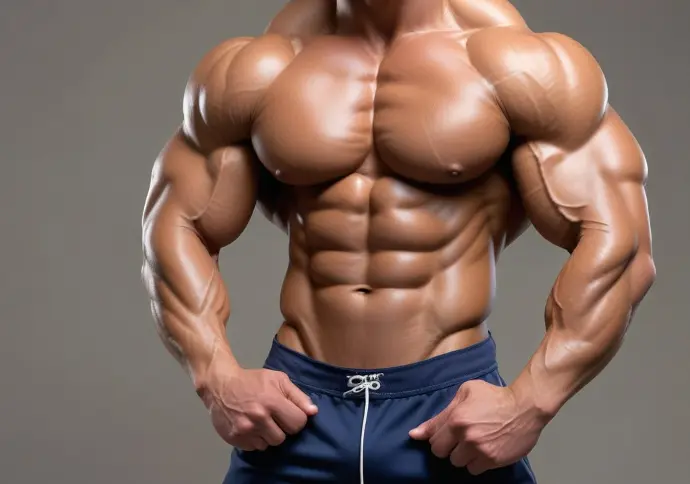
Core Sculpting Series
Carve out a rock-solid core with specialized exercises targeting all aspects of abdominal strength and definition for a strong, stable center.

Total Body Tune-Up
Experience a comprehensive fitness overhaul with workouts that engage every muscle group, enhancing flexibility, balance, and overall functional fitness.

Athletic Edge
Elevate your athletic performance with cutting-edge workouts focused on agility, speed, explosiveness, and sport-specific training techniques.
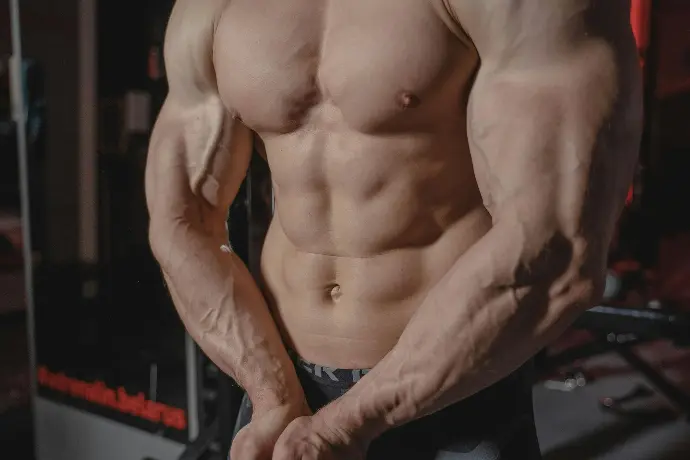
Bodyweight
Harness the power of your own body with equipment-free workouts that deliver exceptional results, perfect for anytime, anywhere fitness.

Starting Line - (Beginner)
Begin your fitness journey with confidence and clarity, as these beginner-friendly workouts provide the perfect foundation for a lifelong commitment to health and wellness.
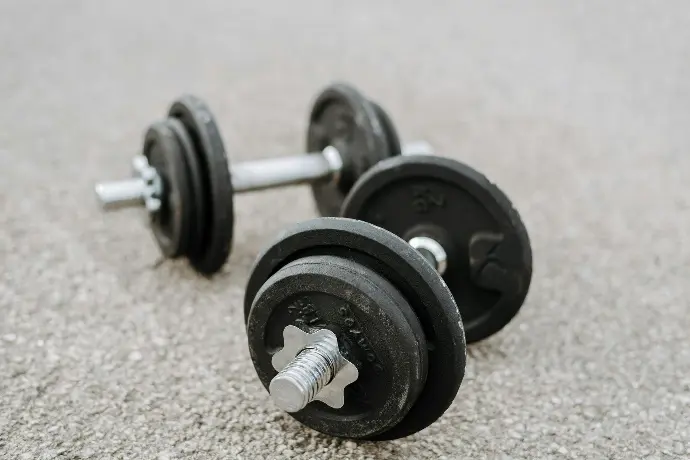
Homestyle Fitness
Achieve your fitness goals from the comfort of your own home with workouts designed to maximize results using minimal equipment and space

Unlock the Secrets: Celebrity Fitness Routines for a Sculpted Body
Discover how your favorite stars stay in top shape! Explore their exclusive workout regimens, nutrition plans, and fitness tips to achieve a Hollywood-worthy physique.

Heart Pump Revamp - (Cardio)
Ignite your cardiovascular system with high-energy workouts designed to boost endurance, burn calories, and improve heart health.

Chest Workout
Build a strong, chiseled chest with targeted exercises that sculpt and strengthen your pectoral muscles for a powerful upper body.

Back Builder Basics
Strengthen and sculpt your back with foundational exercises that enhance posture, stability, and overall upper body strength.

Bicep Workouts
Define and shape your arms with specialized exercises that target the biceps, delivering impressive results and sculpted arms.

Shoulder Shapers
Enhance your shoulder strength, stability, and aesthetics with workouts designed to sculpt and define this crucial muscle group.
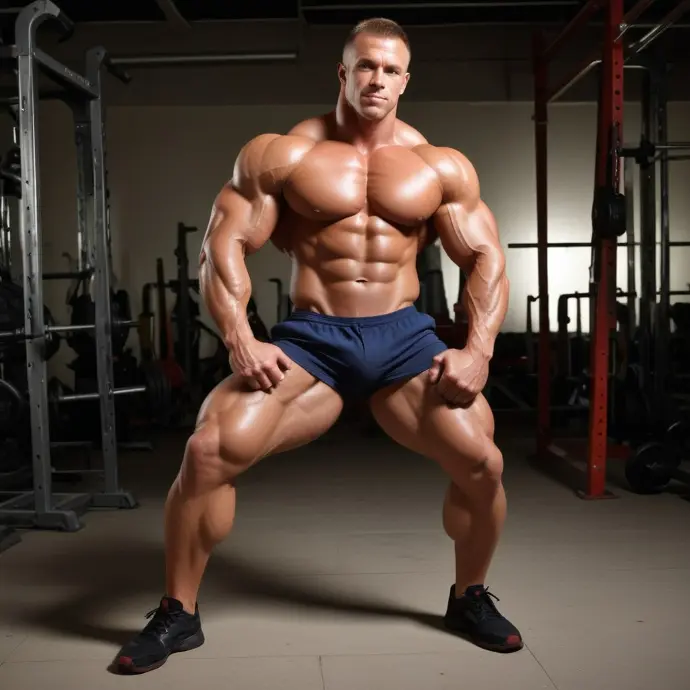
Leg Workouts
Develop powerful, well-defined legs with a variety of exercises targeting the quadriceps, hamstrings, glutes, and calves for functional strength and athletic performance
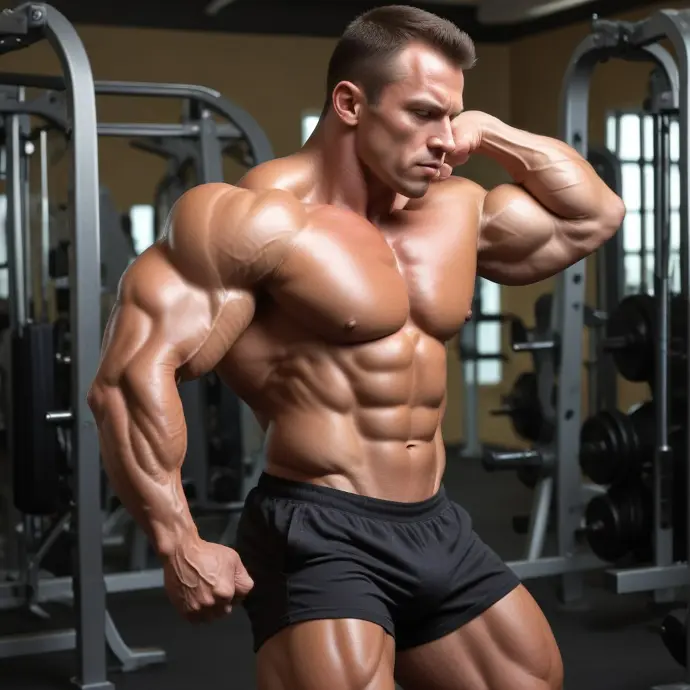
Triceps Toning
Sculpt and define the often-neglected triceps with targeted exercises that tone and strengthen the muscles of the upper arm.

Glutes Gains (female)
(Glutes Workouts): Build a strong, shapely posterior with workouts that target the glute muscles, enhancing strength, stability, and aesthetic appeal.

Strengthen Your Grip: Wrist Workout Essentials
Discover the key to wrist strength and mobility with our comprehensive guide to effective wrist workouts. Unlock new levels of performance and resilience in just a few moves
Activelifeline.com - Your Ultimate Health and Fitness Resource
Muscle Mastery: Elevate Your Strength Training Game
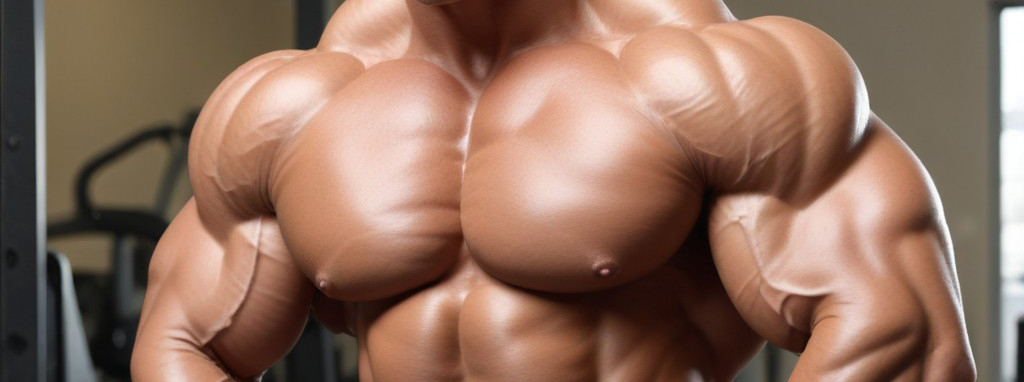
Welcome to Activelifeline.com, your premier destination for all things health and fitness. Today, we delve into the realm of muscle mastery, where we unlock the secrets to elevating your strength training game to unprecedented levels. Whether you're a seasoned athlete or just beginning your fitness journey, mastering strength training techniques is essential for achieving optimal muscle growth and performance.
Understanding Muscle Growth
Before we dive into advanced techniques, let's first understand the basics of muscle growth, scientifically known as hypertrophy. Muscles grow in response to stress placed upon them during strength training exercises. This stress leads to microscopic tears in muscle fibers, which then repair and grow stronger during rest periods. To maximize muscle growth, it's crucial to implement progressive overload, gradually increasing the weight or resistance used during exercises over time.
Advanced Training Techniques
Now, let's explore some advanced training techniques that will take your strength training to the next level:
- Progressive Overload: Progressive overload is the gradual increase in stress placed upon the body during exercise training. This can be achieved by increasing the intensity, volume, or complexity of your workouts over time. For example, you can increase the weight lifted, the number of repetitions performed, or the frequency of training sessions. This constant challenge encourages muscle adaptation and growth.
- Periodization: Periodization involves structuring your training program into specific cycles or phases, each focusing on different aspects of strength and muscle growth. These phases typically include hypertrophy (muscle growth), strength, and power. By varying the focus of your workouts throughout the training cycle, you can prevent plateaus and optimize performance.
- Supersets and Dropsets: Supersets involve performing two exercises back-to-back with minimal rest in between. This increases the intensity of your workout, maximizes muscle fatigue, and saves time. Dropsets involve performing a set of an exercise to failure, then immediately reducing the weight and continuing with another set to failure. This technique helps to push muscles beyond their limits and stimulate further growth.
- Isometric Holds: Isometric holds involve pausing at the midpoint or end range of motion during exercises, increasing time under tension without changing the length of the muscle. This helps to promote muscle growth and improve strength at specific joint angles.
- Negative Reps: Negative reps focus on the eccentric (lowering) phase of exercises, where the muscle lengthens under tension. By slowing down the descent and emphasizing muscle control, you induce greater muscle damage, which can lead to enhanced growth and strength gains.
30-Day Progressive Overload Workout Plan with Sample Diet & Tracking Chart
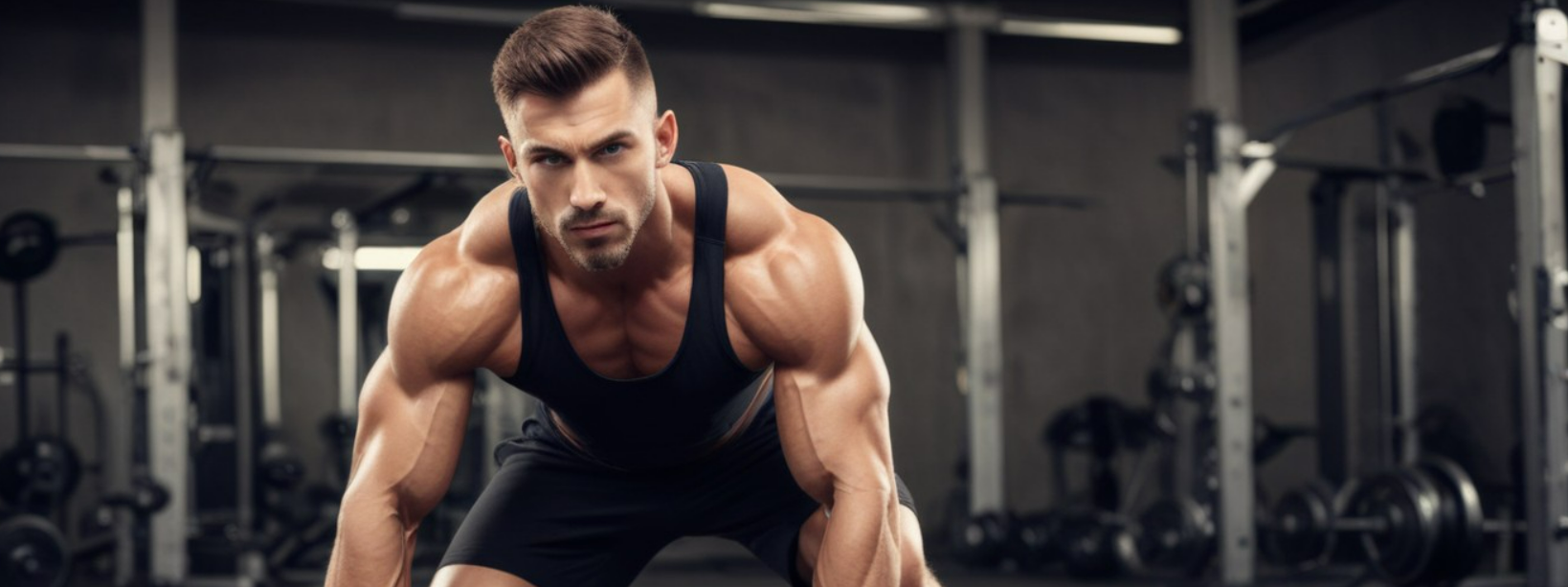
Disclaimer: This is a sample plan and may need adjustments based on your fitness level, goals, and any potential health limitations. It's recommended to consult a doctor before starting any new exercise program.
Workout Philosophy:
This plan focuses on a full-body split routine, training each muscle group 2-3 times per week with rest days in between for recovery. Progressive overload will be achieved through a combination of increasing weight, reps, or sets over the course of the month. It's crucial to listen to your body and adjust the intensity as needed.
Warm-Up and Cool-Down (Perform before each workout):
- 5-10 minutes light cardio (e.g., brisk walking, jumping jacks)
- Dynamic stretches (e.g., arm circles, leg swings)
Sample Diet Plan:
This is a general guideline; adjust portion sizes and macronutrients (carbs, protein, fat) based on your individual needs and calorie goals.
Focus on:
- Whole grains: brown rice, quinoa, whole-wheat bread
- Lean protein: chicken, fish, beans, lentils
- Healthy fats: avocados, nuts, olive oil
- Fruits and vegetables: aim for a variety of colors
Sample Meals:

- Breakfast: Oatmeal with berries and nuts, Greek yogurt with fruit and granola
- Lunch: Salad with grilled chicken or fish, whole-wheat wrap with lean protein and vegetables
- Dinner: Salmon with roasted vegetables, lentil soup with whole-grain bread
- Snacks: Fruits with nut butter, vegetable sticks with hummus, protein shake
30-Day Workout Chart:
Week 1 (Focus on proper form and moderate weight):
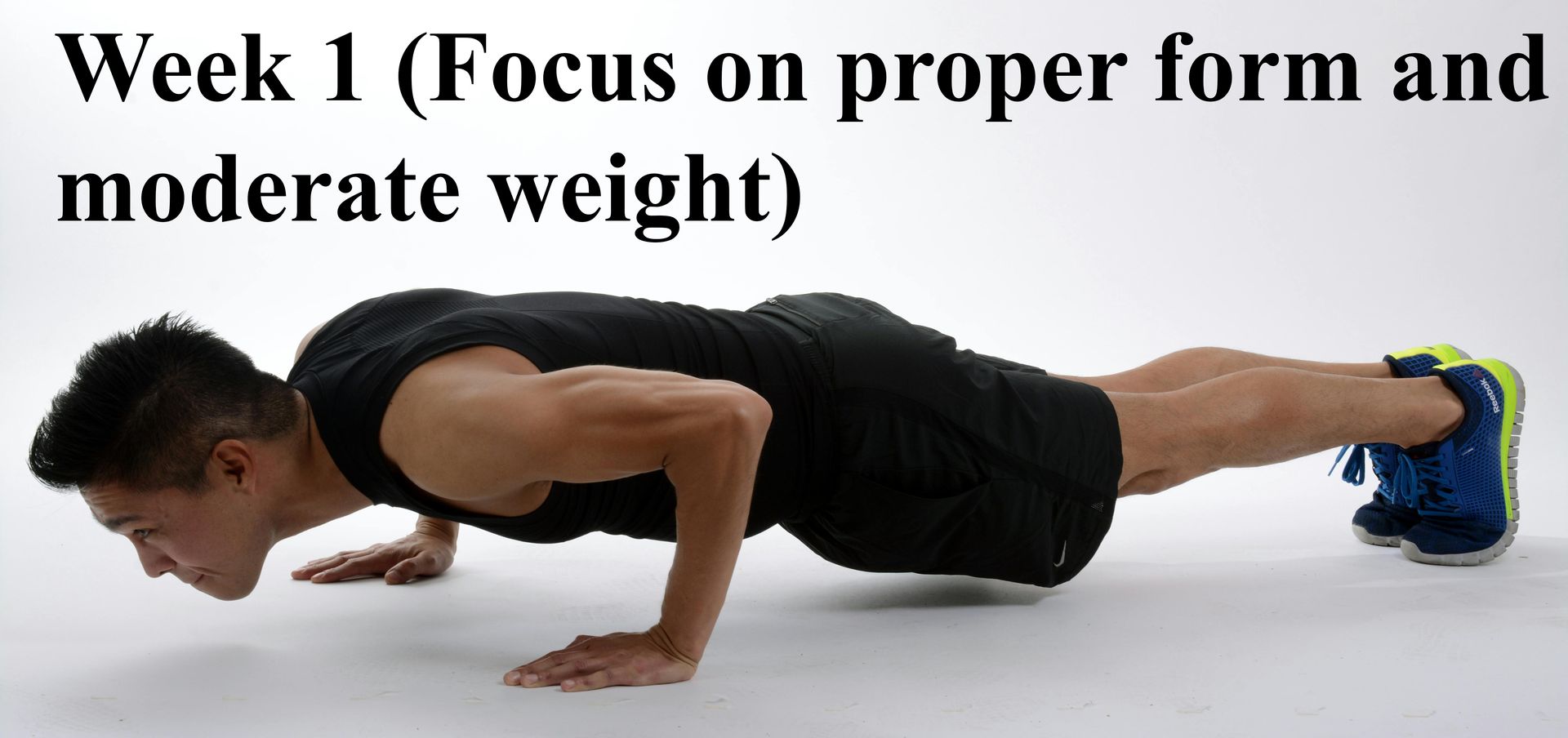
|
Day |
Muscle Group |
Exercises (3 sets of 8-12 reps) |
|
1 |
Full Body |
Squats, Push-Ups, Lunges, Rows (bodyweight or light weights), Plank |
|
2 |
Rest |
- |
|
3 |
Upper Body |
Chest Press (dumbbells or barbell), Shoulder Press (dumbbells), Bicep Curls, Tricep Extensions |
|
4 |
Rest |
- |
|
5 |
Lower Body |
Squats (weighted), Romanian Deadlifts, Calf Raises, Leg Press (machine) |
|
6 |
Rest |
- |
|
7 |
Core & Cardio |
Crunches, Russian Twists, Side Plank (each side), 30 minutes cardio (brisk walking, swimming) |
Week 2 (Increase weight slightly or add more reps):

|
Day |
Muscle Group |
Exercises (3 sets of 10-15 reps) |
|
8 |
Full Body |
Squats, Overhead Press (dumbbells or barbell), Lunges, Bent-Over Rows (dumbbells), Plank with shoulder taps |
|
9 |
Rest |
- |
|
10 |
Upper Body |
Incline Dumbbell Press, Lateral Raises, Hammer Curls, Skull Crushers |
|
11 |
Rest |
- |
|
12 |
Lower Body |
Bulgarian Split Squats (each leg), Glute Bridges, Calf Raises (weighted), Leg Press (increased weight) |
|
13 |
Rest |
- |
|
14 |
Core & Cardio |
Hanging Leg Raises, Bicycle Crunches, Hollow Hold, 30 minutes cardio (cycling, jogging) |
Week 3 & 4 (Increase weight further or add sets):

|
Day |
Muscle Group |
Exercises (4 sets of 8-12 reps or 3 sets of 12-15 reps) |
|
15 |
Full Body |
Goblet Squats (dumbbell), Dips (assisted or bodyweight), Walking Lunges, Pull-Ups (assisted or bodyweight), Side Plank (hold for longer) |
|
16 |
Rest |
- |
|
17 |
Upper Body |
Decline Dumbbell Press, Front Raises, Concentration Curls, Close-Grip Bench Press |
|
18 |
Rest |
- |
|
19 |
Lower Body |
Barbell Squats, Romanian Deadlifts (increased weight), Single-Leg Calf Raises (each leg), Leg Extensions (machine) |
|
20 |
Rest |
- |
|
21 |
Core & Cardio |
Ab Wheel Rollouts, V-Ups, Mountain Climbers, 30 minutes cardio (interval training) |
Week 5 (Deload Week - Reduce weight or reps by 20%):
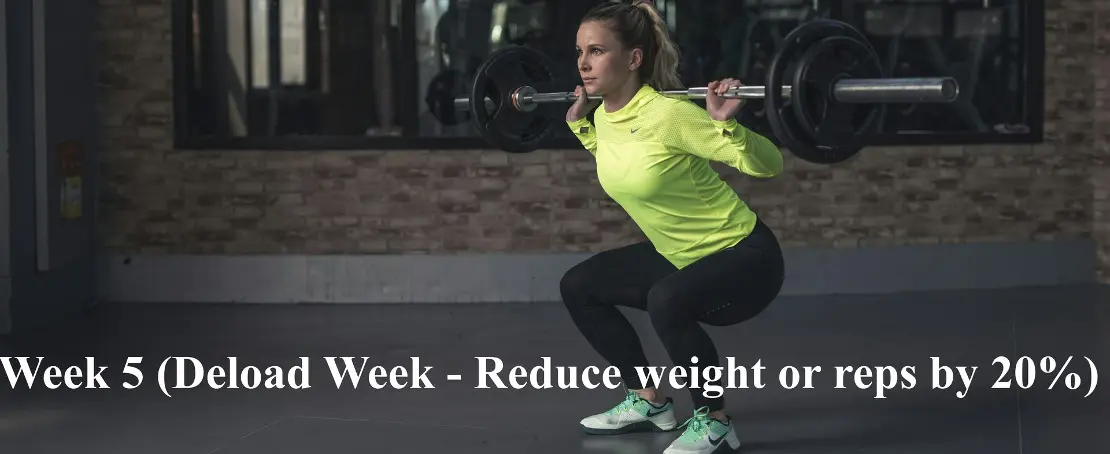
|
Day |
Muscle Group |
Exercises (2-3 sets of 8-12 reps) |
|
22 |
Full Body |
Squats, Push-Ups, Lunges, Rows, Plank |
|
23 |
Rest |
- |
|
24 |
Upper Body |
Chest Press, Shoulder Press, Bicep Curls, Tricep Extensions |
|
25 |
Rest |
- |
|
26 |
Lower Body |
Squats, Deadlifts (lighter weight), Calf Raises, Leg Press |
|
27 |
Rest |
- |
|
28 |
Core & Cardio |
Crunches, Russian Twists, Side Plank (each side), 20 minutes cardio (moderate intensity) |
Weeks 6-8 (Increase weight or reps progressively, introduce new exercises if desired):
The plan continues with a similar structure to Weeks 3 & 4, gradually increasing weight or reps as you get stronger. You can also introduce new exercises or variations to keep the workouts challenging and target different muscle groups.
Progression Tracking Chart:
Here's a template to track your progress throughout the program. Fill it out after each workout, noting the weight, reps, and sets completed for each exercise. This helps you visualize your progress and adjust the weight or reps accordingly.
|
Exercise |
Week 1 |
Week 2 |
Week 3 |
Week 4 |
Week 5 |
Week 6 |
Week 7 |
Week 8 |
|
Squats |
Weight, Reps, Sets |
Weight, Reps, Sets |
Weight, Reps, Sets |
Weight, Reps, Sets |
Weight, Reps, Sets |
Weight, Reps, Sets |
Weight, Reps, Sets |
Weight, Reps, Sets |
|
Push-Ups |
Reps, Sets |
Reps, Sets |
Reps, Sets |
Reps, Sets |
Reps, Sets |
Reps, Sets |
Reps, Sets |
Reps, Sets |
|
Lunges |
Weight (per leg), Reps, Sets |
Weight (per leg), Reps, Sets |
Weight (per leg), Reps, Sets |
Weight (per leg), Reps, Sets |
Weight (per leg), Reps, Sets |
Weight (per leg), Reps, Sets |
Weight (per leg), Reps, Sets |
Weight (per leg), Reps, Sets |
|
... |
... |
... |
... |
... |
... |
... |
... |
... |
Remember:
· This is a sample plan. Adjust the exercises, intensity, and rest periods based on your needs and preferences.
· Focus on proper form to prevent injuries.
· Listen to your body and take rest days when needed.
· Track your progress and celebrate your achievements!
· Consult a doctor or certified personal trainer for personalized guidance.
By following a progressive overload program, a healthy diet, and proper recovery, you can achieve significant improvements in strength, endurance, and overall fitness.
Personalized Routines for Optimal Results
At Activelifeline.com, we understand that one size does not fit all when it comes to strength training. That's why we offer personalized workout routines tailored to your individual goals, fitness level, and preferences. Whether you're aiming to build lean muscle, increase strength, or enhance athletic performance, our team of expert trainers will design a custom program to help you achieve your desired results efficiently and effectively.
The Importance of Nutrition
In addition to advanced training techniques, nutrition plays a pivotal role in maximizing muscle growth and performance. Consuming an adequate amount of protein, carbohydrates, and healthy fats is essential for providing your muscles with the fuel they need to repair and grow stronger. Our registered dietitians at Activelifeline.com can help you create a balanced meal plan that supports your fitness goals and promotes optimal muscle recovery and growth.
Join the Activelifeline Community
Ready to take your strength training game to new heights? Join the Activelifeline community today and gain access to exclusive workout plans, personalized coaching, expert nutrition advice, and a supportive community of like-minded individuals committed to living their healthiest, happiest lives. Together, let's unlock your full potential and achieve the strong, muscular physique you've always desired.
Conclusion
In conclusion, mastering strength training techniques is key to achieving maximum muscle growth and performance. By incorporating advanced training techniques, personalized workout routines, and proper nutrition into your fitness regimen, you can elevate your strength training game and unlock your full potential. Visit Activelifeline.com today to start your journey towards a stronger, healthier you.
Trim and Tone: Sculpt Your Body with Precision

Welcome to Activelifeline.com, your ultimate destination for achieving optimal health and fitness. Today, we're diving into the world of body sculpting with our topic: Trim and Tone. We'll explore the science-backed methods for burning fat, toning muscles, and sculpting a lean, defined physique.
Understanding Body Composition
Before we delve into the specifics of trimming and toning, let's understand the concept of body composition. Body composition refers to the proportion of fat, muscle, bone, and other tissues that make up your body. Achieving a lean, toned physique involves reducing body fat while preserving or increasing lean muscle mass.
Dynamic Workouts for Fat Loss
Effective fat loss requires a combination of cardiovascular exercise and strength training. Cardiovascular workouts such as running, cycling, or HIIT (High-Intensity Interval Training) are excellent for burning calories and shedding excess body fat. These workouts increase your heart rate, boost metabolism, and promote fat oxidation, leading to overall weight loss.
Key Components of Dynamic Workouts
- High-Intensity Interval Training (HIIT): HIIT involves alternating between short bursts of intense exercise and brief periods of rest or low-intensity activity. This approach maximizes calorie burn, improves cardiovascular fitness, and accelerates fat loss in a shorter amount of time compared to steady-state cardio.
- Compound Exercises: Compound exercises target multiple muscle groups simultaneously, making them highly efficient for fat loss. Examples include squats, lunges, burpees, push-ups, and kettlebell swings. These exercises elevate heart rate, increase calorie burn, and promote functional strength and mobility.
- Plyometric Training: Plyometric exercises involve explosive movements that require maximum force in a short amount of time, such as jump squats, box jumps, and plyometric push-ups. Incorporating plyometrics into your workouts enhances power, agility, and calorie burn, making it an effective tool for fat loss.
- Circuit Training: Circuit training involves performing a series of exercises consecutively with minimal rest between sets. This method keeps your heart rate elevated, maximizes calorie expenditure, and targets both strength and cardiovascular fitness.
Designing Your Dynamic Workout
When designing a dynamic workout for fat loss, aim for a combination of high-intensity exercises that target different muscle groups. Incorporate a variety of movements to keep your workouts challenging and engaging. Remember to prioritize proper form and technique to prevent injury and maximize effectiveness.
30-Day Weight Loss and Trim & Tone
Workout Plan with Diet Guide
|
Day |
Diet Plan |
|
Monday |
Focus on whole foods (fruits, vegetables, lean proteins, whole grains). Stay hydrated by drinking plenty of water throughout the day. Limit processed foods, sugary snacks, and refined carbohydrates. |
|
Tuesday |
Focus on whole foods (fruits, vegetables, lean proteins, whole grains). Stay hydrated by drinking plenty of water throughout the day. Limit processed foods, sugary snacks, and refined carbohydrates. |
|
Wednesday |
Focus on whole foods (fruits, vegetables, lean proteins, whole grains). Stay hydrated by drinking plenty of water throughout the day. Limit processed foods, sugary snacks, and refined carbohydrates. |
|
Thursday |
Focus on whole foods (fruits, vegetables, lean proteins, whole grains). Stay hydrated by drinking plenty of water throughout the day. Limit processed foods, sugary snacks, and refined carbohydrates. |
|
Friday |
Focus on whole foods (fruits, vegetables, lean proteins, whole grains). Stay hydrated by drinking plenty of water throughout the day. Limit processed foods, sugary snacks, and refined carbohydrates. |
ActiveLifeline 30-Day Trim and Tone Workout Plan
|
Week |
Description |
|
Week 1: Foundation Building |
Focuses on building a foundation for your workouts with bodyweight exercises and cardio. |
|
Week 2: Intensifying Workouts |
Introduces upper and lower body strength training along with HIIT cardio. |
|
Week 3: Accelerating Fat Loss |
Increases cardio duration and incorporates plyometric exercises and circuit training. |
|
Week 4: Fine-Tuning and Maintenance |
Emphasizes maintaining a balance of cardio, strength training, and flexibility while gradually increasing intensity. |
Week 1: Foundation Building
|
Day |
Workout Routine |
|
Monday |
30 min brisk walking/jogging |
|
Tuesday |
Full-body strength training (3 sets squats, lunges, push-ups, planks) |
|
Wednesday |
20 min HIIT cardio (alternate 30 sec intense exercise with 30 sec rest) |
|
Thursday |
Yoga or Pilates |
|
Friday |
Rest or light activity (stretching, walking) |
Week 2: Intensifying Workouts
|
Day |
Workout Routine |
|
Monday |
45 min cardio (running, cycling, swimming) |
|
Tuesday |
Upper body strength (3 sets bench press, rows, overhead press, bicep curls) |
|
Wednesday |
30 min HIIT cardio |
|
Thursday |
Lower body strength (3 sets squats, deadlifts, lunges, calf raises) |
|
Friday |
Core workout (planks, Russian twists, bicycle crunches) |
|
Saturday |
Active recovery (gentle yoga, walking, light cycling) |
|
Sunday |
Rest |
Week 3: Accelerating Fat Loss
|
Day |
Workout Routine |
|
Monday |
Increase cardio to 60 minutes |
|
Tuesday |
Rest |
|
Wednesday |
Full-body strength training (3 sets squats, lunges, push-ups, planks) |
|
Thursday |
Increase cardio to 60 minutes |
|
Friday |
HIIT cardio |
|
Saturday |
Active recovery (gentle yoga, walking, light cycling) |
|
Sunday |
Rest |
Nutrition and Recovery
While dynamic workouts are effective for fat loss, nutrition and recovery are equally important aspects of achieving your goals. Fuel your body with nutrient-dense foods to support your workouts and promote fat loss. Adequate rest and recovery are essential for muscle repair and growth, so prioritize sleep and incorporate rest days into your training schedule.
Toning Muscles for Definition
Toning muscles involves resistance training exercises that target specific muscle groups to enhance definition and shape. Incorporating compound exercises like squats, lunges, deadlifts, and push-ups engages multiple muscle groups simultaneously, maximizing calorie burn and muscle activation. Additionally, isolation exercises such as bicep curls, tricep extensions, and calf raises help sculpt and define individual muscle groups for a balanced physique.
Nutrition for Fat Loss and Muscle Definition
Achieving a trim and toned body isn't just about exercise; it's also about proper nutrition. Consuming a balanced diet rich in lean protein, healthy fats, complex carbohydrates, and essential vitamins and minerals is crucial for fueling workouts, supporting muscle growth, and promoting fat loss. Focus on whole, nutrient-dense foods while minimizing processed foods, sugary snacks, and excessive calorie intake.
The Importance of Consistency and Progression
Consistency is key when it comes to trimming and toning your body. Aim to maintain a regular workout schedule and adhere to a nutritious eating plan to see sustainable results over time. Additionally, incorporate progressive overload into your workouts by gradually increasing the intensity, volume, or difficulty of exercises to continually challenge your muscles and stimulate growth.
Expert Guidance and Support
At Activelifeline.com, we understand that achieving your fitness goals can be challenging, which is why we offer expert guidance and support every step of the way. Our team of certified personal trainers, nutritionists, and health professionals are here to provide personalized workout plans, dietary advice, and motivational support to help you achieve the trim, toned physique you desire.
Join the Activelifeline Community
Ready to sculpt your dream body and transform your life? Join the Activelifeline community today and gain access to exclusive workout programs, nutrition resources, online coaching, and a supportive community of like-minded individuals dedicated to living their healthiest, happiest lives. Together, let's sculpt and define our bodies with precision and achieve the lean, toned physique we deserve.
Conclusion
In conclusion, trimming and toning your body requires a multifaceted approach that includes dynamic workouts, proper nutrition, consistency, and expert guidance. By incorporating these strategies into your lifestyle, you can sculpt a lean, defined physique and enjoy the myriad benefits of optimal health and fitness. Visit Activelifeline.com today to start your journey towards a trimmer, toned, and healthier you.
Strength Surge: Unleash Your Full Potential with Workouts Designed to Amplify Raw Power, Build Functional Strength, and Push Your Physical Limits to New Heights
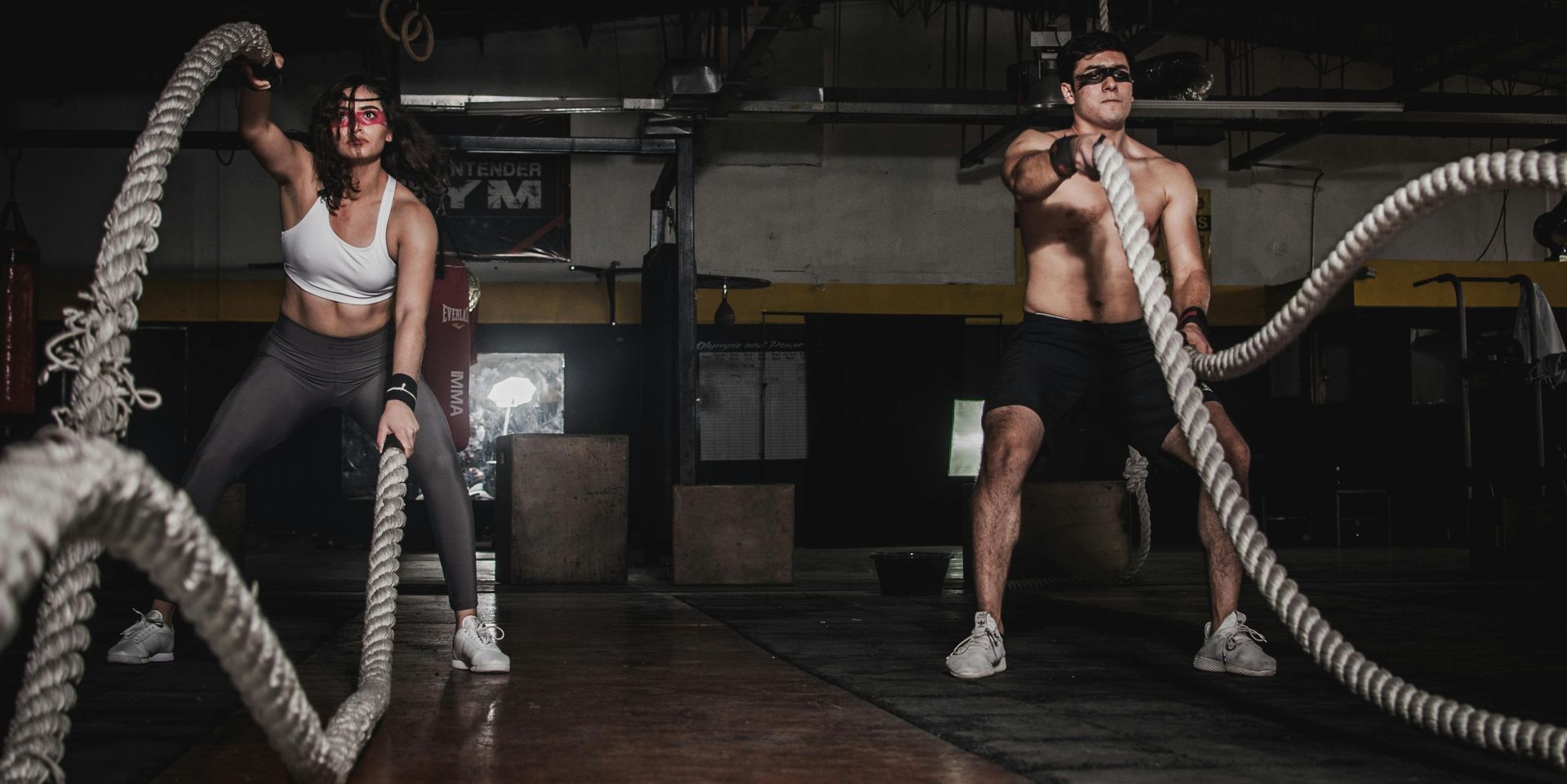
Welcome to ActiveLifeLine.com, your ultimate destination for all things health and fitness. Today, we dive deep into a crucial aspect of fitness that often gets overshadowed by the more aesthetic-driven goals: building raw power and functional strength. In this comprehensive guide, we'll explore scientifically-backed workouts designed to amplify your strength, improve your functional capacity, and push your physical limits to new heights. Whether you're an athlete, a fitness enthusiast, or someone looking to enhance their overall physical capabilities, this blog is your roadmap to achieving unparalleled strength and performance.
The Importance of Raw Power and Functional Strength
Understanding Raw Power
Raw power refers to the maximum amount of force that muscles can exert in a single effort. It's a crucial component of overall athletic performance and everyday functional capacity. Developing raw power enhances your ability to perform high-intensity activities, from lifting heavy weights to explosive movements like sprinting and jumping.
The Role of Functional Strength
Functional strength, on the other hand, is the ability to perform everyday activities with ease and efficiency. It involves multiple muscle groups working together in coordinated movements. Functional strength is not just about lifting heavy objects; it's about moving better, preventing injuries, and improving overall quality of life.
Benefits of Prioritizing Strength
- Injury Prevention: Stronger muscles and joints are less prone to injuries.
- Enhanced Performance: Improved strength translates to better performance in sports and daily activities.
- Increased Metabolic Rate: Muscle tissue burns more calories than fat, even at rest, aiding in weight management.
- Improved Posture and Balance: Strengthening core and stabilizer muscles enhances posture and balance.
Science-Backed Workouts to Amplify Raw Power
The Fundamentals of Power Training
Power training involves exercises that enhance the ability to exert maximum force in the shortest amount of time. Here are key components:
- Compound Movements: Exercises like squats, deadlifts, and bench presses engage multiple muscle groups and joints, providing a solid foundation for building power.
- Plyometrics: These explosive movements, such as box jumps and burpees, enhance the neuromuscular system, improving the speed and efficiency of muscle contractions.
- Olympic Lifting: Exercises like the clean and jerk or snatch develop explosive strength and coordination.
Sample Power-Building Workout Routine
Warm-Up (10-15 minutes)
- Dynamic stretches: Leg swings, arm circles
- Light cardio: Jump rope or brisk walking
Workout
- Barbell Squats (4 sets of 6-8 reps)
- Focus on maintaining proper form with a straight back and knees tracking over the toes.
- Deadlifts (4 sets of 6-8 reps)
- Engage your core and keep the bar close to your body.
- Bench Press (4 sets of 6-8 reps)
- Use a full range of motion and control the weight on the way down.
- Box Jumps (3 sets of 10 reps)
- Aim for an explosive takeoff and soft landing.
- Kettlebell Swings (3 sets of 15 reps)
- Drive the hips forward to generate momentum.
Cool-Down (10 minutes)
- Static stretches focusing on major muscle groups
- Deep breathing exercises to relax the muscles
Building Functional Strength for Real-Life Performance
Principles of Functional Training
Functional training focuses on movements that mimic real-life activities. The goal is to enhance the body's ability to work as a cohesive unit. Key principles include:
- Movement Patterns: Training should include pushing, pulling, squatting, hinging, and rotational movements.
- Balance and Stability: Incorporating exercises that challenge balance and core stability.
- Varied Equipment: Utilizing kettlebells, medicine balls, resistance bands, and bodyweight exercises.
Sample Functional Strength Workout Routine
Warm-Up (10-15 minutes)
- Dynamic stretches: Walking lunges, high knees
- Mobility drills: Hip openers, thoracic spine rotations
Workout
- Goblet Squats (3 sets of 12-15 reps)
- Hold a kettlebell at chest level and squat down, keeping the torso upright.
- TRX Rows (3 sets of 10-12 reps)
- Use bodyweight for resistance, pulling the chest towards the handles.
- Single-Leg Deadlifts (3 sets of 10 reps per leg)
- Focus on maintaining balance and engaging the core.
- Medicine Ball Slams (3 sets of 15 reps)
- Explosively slam the ball into the ground using the entire body.
- Plank Variations (3 sets of 1-minute holds)
- Include side planks and plank with shoulder taps for added challenge.
Cool-Down (10 minutes)
- Static stretches focusing on major muscle groups
- Foam rolling to release muscle tension
Nutrition for Strength Gains
Macronutrients and Micronutrients
To maximize strength gains, a well-rounded diet is essential. Key components include:
- Protein: Essential for muscle repair and growth. Aim for 1.6 to 2.2 grams of protein per kilogram of body weight per day.
- Carbohydrates: Provide energy for intense workouts. Focus on complex carbs like whole grains, fruits, and vegetables.
- Fats: Support hormone production and overall health. Include sources like avocados, nuts, and olive oil.
- Vitamins and Minerals: Ensure adequate intake of vitamins and minerals, particularly calcium and vitamin D for bone health, and magnesium and potassium for muscle function.
Hydration
Proper hydration is crucial for optimal performance and recovery. Aim to drink at least 2-3 liters of water per day, and more if you're engaging in intense physical activity.
Recovery Strategies for Optimal Performance
Importance of Recovery
Recovery is where the magic happens. During rest, the body repairs and strengthens itself, making it crucial for continued progress.
Effective Recovery Techniques
- Sleep: Aim for 7-9 hours of quality sleep per night to facilitate muscle repair and growth.
- Active Recovery: Engage in low-intensity activities like walking or yoga to promote blood flow and reduce muscle stiffness.
- Stretching and Mobility: Regular stretching and mobility work help maintain flexibility and prevent injuries.
- Nutrition: Post-workout nutrition should include a mix of protein and carbohydrates to replenish glycogen stores and support muscle repair.
Conclusion
Building raw power and functional strength is a transformative journey that extends beyond the gym. It enhances your physical capabilities, reduces injury risk, and improves overall quality of life. By incorporating scientifically-backed training routines, maintaining a balanced diet, and prioritizing recovery, you can unleash your full potential and achieve new heights in your fitness journey.
At ActiveLifeLine.com, we are committed to providing you with the latest insights and expert advice to support your health and fitness goals. Stay tuned for more comprehensive guides and resources to help you lead a stronger, healthier, and more active life
Core Sculpting Series: Carve Out a Rock-Solid Core with Specialized Exercises Targeting All Aspects of Abdominal Strength and Definition for a Strong, Stable Center
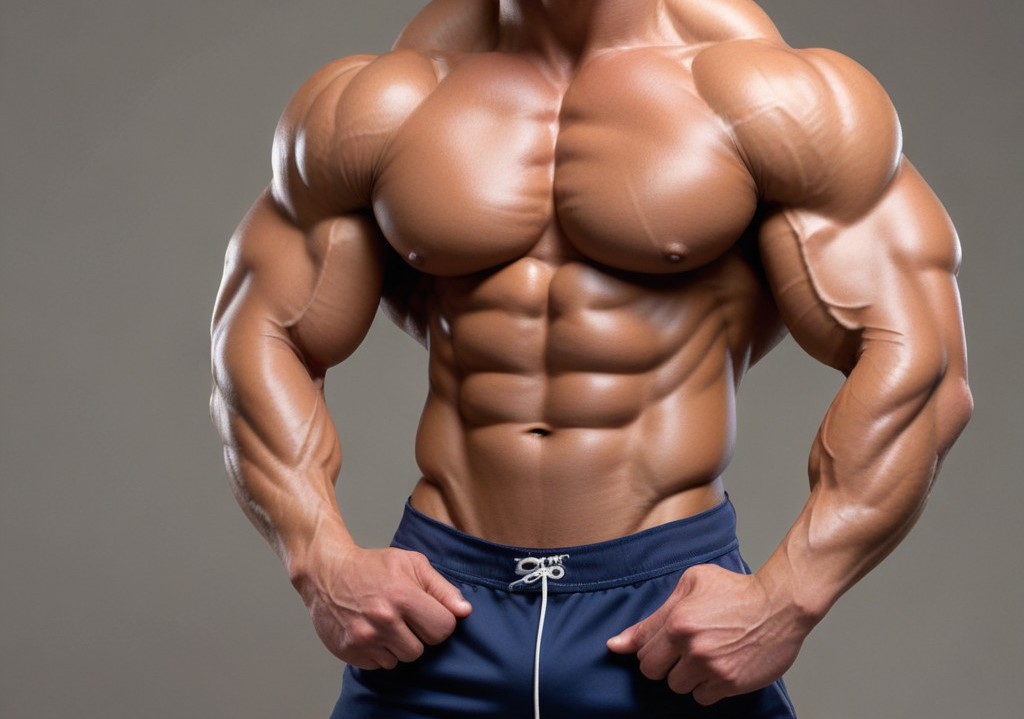
Welcome to ActiveLifeLine.com, your go-to resource for health and fitness insights. Today, we're diving into the Core Sculpting Series, a comprehensive guide designed to help you carve out a rock-solid core. This series focuses on specialized exercises that target all aspects of abdominal strength and definition, ensuring a strong and stable center. Whether you're a beginner or an advanced fitness enthusiast, this guide provides the scientifically-backed techniques you need to build a powerful core.
The Importance of a Strong Core
Why Core Strength Matters
A strong core is the foundation of a well-rounded fitness regimen. It plays a crucial role in virtually every movement you perform, from daily activities to intense workouts. Core muscles include not only the abs but also the lower back, hips, and pelvis. Strengthening these muscles enhances balance, stability, and overall performance while reducing the risk of injury.
Benefits of Core Training
- Improved Posture: A strong core supports the spine, helping you maintain proper posture and reduce back pain.
- Enhanced Athletic Performance: Core strength is essential for sports and exercises that require power and endurance.
- Injury Prevention: A stable core helps prevent injuries by providing better control over your body's movements.
- Better Functional Movement: Core muscles are involved in nearly every motion, from bending and lifting to twisting and reaching.
Anatomy of the Core Muscles
Understanding the core's anatomy is vital to effectively target all its aspects. The core comprises several key muscle groups:
- Rectus Abdominis: Often referred to as the "six-pack" muscles, these are the most visible abdominal muscles, running vertically along the front of the abdomen.
- Transverse Abdominis: Located deep within the abdomen, these muscles act like a corset, stabilizing the spine and pelvis.
- Internal and External Obliques: These muscles run along the sides of the abdomen and are responsible for rotational movements and side bending.
- Erector Spinae: These muscles extend along the spine and are crucial for maintaining an upright posture and supporting the lower back.
- Hip Flexors: Including the iliopsoas, these muscles connect the lower back to the hips and are vital for hip movement and stability.
Core Sculpting Workouts
The Fundamentals of Core Training
Effective core training should incorporate exercises that target all muscle groups in the core, ensuring balanced strength and stability. Here are some foundational principles:
- Variety: Include a mix of exercises that engage different core muscles from various angles.
- Progression: Gradually increase the intensity and complexity of exercises as your strength improves.
- Consistency: Regular training is key to achieving and maintaining a strong core.
Sample Core Sculpting Workout Routine
Warm-Up (5-10 minutes)
- Dynamic Stretches: Leg swings, arm circles
- Light Cardio: Jumping jacks, brisk walking
Workout
- Plank (3 sets of 30-60 seconds)
- Maintain a straight line from head to heels, engaging the core throughout.
- Russian Twists (3 sets of 15 reps per side)
- Sit with knees bent, lean back slightly, and twist the torso side to side, holding a weight or medicine ball.
- Bicycle Crunches (3 sets of 20 reps per side)
- Lie on your back, alternate bringing opposite elbow to knee in a cycling motion.
- Hanging Leg Raises (3 sets of 12 reps)
- Hang from a pull-up bar, lift legs towards your chest, keeping them straight or slightly bent.
- Side Plank (3 sets of 30-45 seconds per side)
- Lie on one side, lift the hips off the ground, and hold the position.
Cool-Down (5-10 minutes)
- Static Stretches: Focus on the core and lower back
- Deep Breathing: Relax and decompress the muscles
Nutrition for a Sculpted Core
Macronutrients and Micronutrients
Achieving a well-defined core requires not just targeted exercises but also proper nutrition. Key dietary components include:
- Protein: Essential for muscle repair and growth. Include lean sources like chicken, fish, beans, and tofu.
- Carbohydrates: Provide energy for your workouts. Opt for complex carbs such as whole grains, fruits, and vegetables.
- Fats: Healthy fats are crucial for overall health. Include avocados, nuts, seeds, and olive oil in your diet.
- Vitamins and Minerals: Ensure you're getting adequate vitamins and minerals, especially those that support muscle function and recovery like magnesium and potassium.
Hydration
Staying hydrated is vital for optimal muscle function and recovery. Aim to drink at least 2-3 liters of water daily, adjusting for activity level and climate.
Recovery Strategies for Core Training
Importance of Recovery
Recovery is where your muscles repair and grow stronger. Neglecting recovery can lead to overtraining and injuries, undermining your progress.
Effective Recovery Techniques
- Sleep: Aim for 7-9 hours of quality sleep per night to support muscle recovery and overall health.
- Active Recovery: Engage in low-intensity activities like walking or yoga to promote blood flow and reduce muscle stiffness.
- Stretching and Mobility: Regular stretching and mobility exercises help maintain flexibility and prevent injuries.
- Nutrition: Post-workout nutrition should include a balance of protein and carbohydrates to support muscle repair and glycogen replenishment.
Conclusion
Carving out a rock-solid core requires a multifaceted approach that includes targeted exercises, proper nutrition, and effective recovery strategies. By incorporating the Core Sculpting Series into your fitness regimen, you can achieve a strong, stable center that enhances your overall performance and quality of life.
At ActiveLifeLine.com, we are dedicated to providing you with expert advice and scientifically-backed information to help you achieve your health and fitness goals. Stay tuned for more comprehensive guides and resources designed to support your journey to a healthier, stronger you
Total Body Tune-Up: Experience a Comprehensive Fitness Overhaul with Workouts that Engage Every Muscle Group, Enhancing Flexibility, Balance, and Overall Functional Fitnes
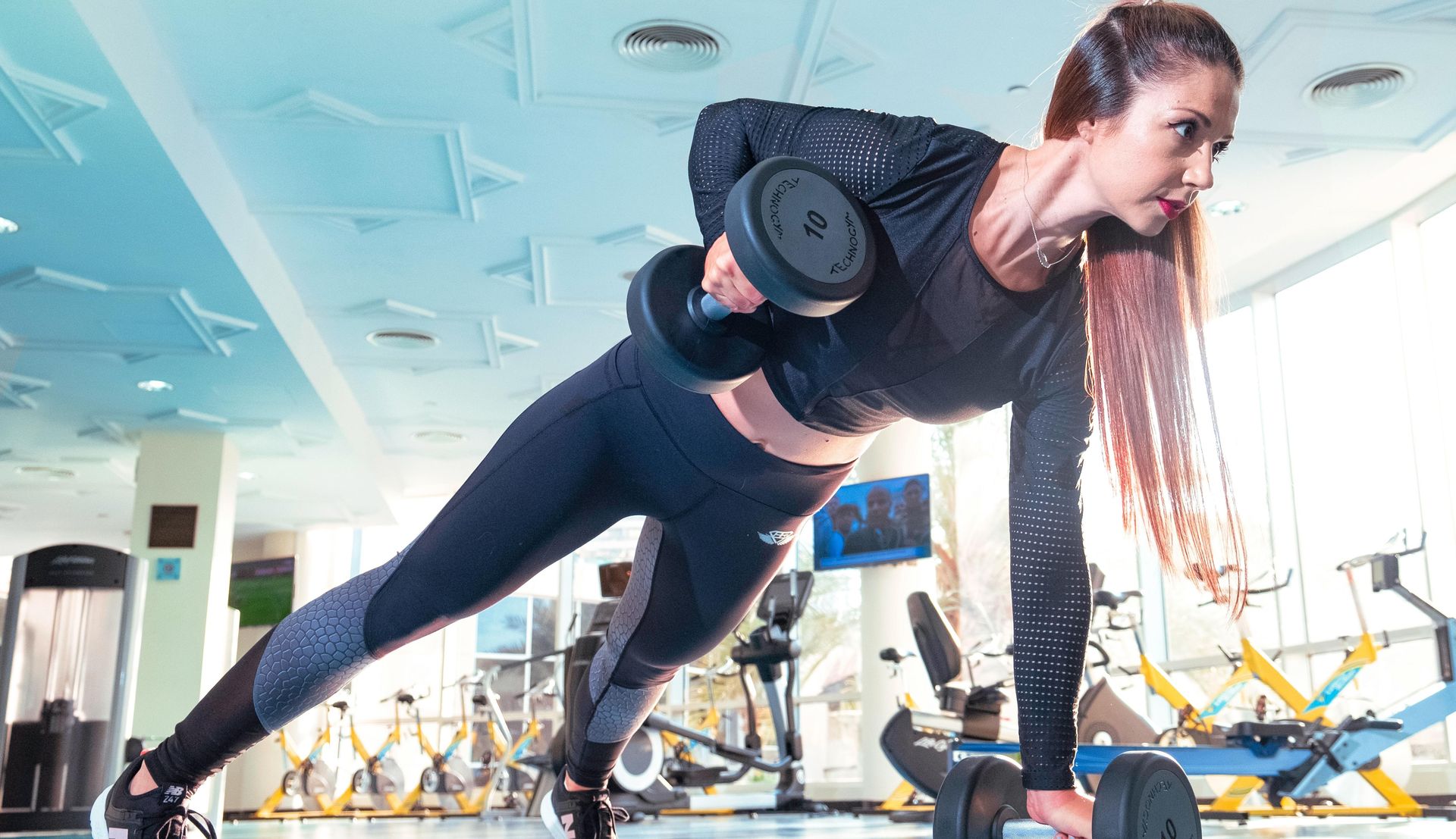
Welcome to ActiveLifeLine.com, your premier source for health and fitness insights. Today, we introduce the "Total Body Tune-Up," a holistic fitness program designed to engage every muscle group, enhance flexibility, improve balance, and boost overall functional fitness. Whether you're a novice or a seasoned athlete, this guide provides the scientifically-backed strategies you need for a comprehensive fitness overhaul.
The Importance of Comprehensive Fitness
Holistic Approach to Fitness
A well-rounded fitness routine addresses multiple aspects of physical health, including strength, endurance, flexibility, and balance. By engaging various muscle groups and focusing on overall functionality, you can achieve a more balanced and effective workout regimen.
Benefits of Total Body Workouts
- Improved Muscle Balance: Engaging all muscle groups prevents imbalances that can lead to injuries and postural issues.
- Enhanced Flexibility: Regularly incorporating flexibility exercises helps maintain a full range of motion and reduces stiffness.
- Better Balance and Stability: Focusing on balance exercises strengthens stabilizing muscles, reducing the risk of falls and improving coordination.
- Increased Functional Fitness: Functional exercises mimic everyday movements, making daily activities easier and more efficient.
Anatomy of a Total Body Workout
A total body workout involves exercises that target multiple muscle groups, ensuring a balanced and comprehensive approach. Here are the key components:
- Warm-Up: Prepare your body for exercise, increase blood flow, and reduce the risk of injury.
- Strength Training: Build muscle mass and strength through resistance exercises.
- Cardio: Improve cardiovascular health and endurance.
- Flexibility and Balance: Enhance range of motion and stability through targeted exercises.
- Cool-Down: Gradually bring your heart rate down and stretch muscles to aid recovery.
Sample Total Body Tune-Up Workout Routine
Warm-Up (5-10 minutes)
- Dynamic Stretches: Arm circles, leg swings
- Light Cardio: Jumping jacks, brisk walking
Strength Training (30 minutes)
- Squats (3 sets of 12 reps)
- Engage your core and maintain a straight back, lowering your body until thighs are parallel to the ground.
- Push-Ups (3 sets of 12 reps)
- Keep your body in a straight line from head to heels, lowering your chest to the ground.
- Bent-Over Rows (3 sets of 12 reps)
- With a slight bend in your knees and a straight back, pull weights towards your waist.
- Lunges (3 sets of 12 reps per leg)
- Step forward, lowering your back knee towards the ground while keeping your front knee over your ankle.
- Plank (3 sets of 30-60 seconds)
- Hold your body in a straight line from head to heels, engaging your core.
Cardio (20 minutes)
- Interval Training: Alternate between 1 minute of high-intensity activity (such as sprinting or fast cycling) and 1 minute of low-intensity recovery (such as walking or slow cycling).
Flexibility and Balance (10 minutes)
- Standing Quad Stretch (Hold for 30 seconds per leg)
- Pull one foot towards your glutes, keeping knees together and hips forward.
- Hamstring Stretch (Hold for 30 seconds per leg)
- Extend one leg in front of you, hinge at the hips, and reach towards your toes.
- Single-Leg Balance (Hold for 30 seconds per leg)
- Stand on one leg, keeping the other foot off the ground and maintaining balance.
Cool-Down (5-10 minutes)
- Static Stretches: Focus on major muscle groups, holding each stretch for 20-30 seconds.
- Deep Breathing: Relax and decompress muscles with deep, slow breaths.
Nutrition for Total Body Fitness
Macronutrients and Micronutrients
Proper nutrition fuels your workouts and aids recovery. Focus on:
- Protein: Essential for muscle repair and growth. Include lean meats, fish, beans, and nuts.
- Carbohydrates: Provide energy for intense workouts. Opt for whole grains, fruits, and vegetables.
- Fats: Necessary for overall health. Include sources like avocados, olive oil, and nuts.
- Vitamins and Minerals: Ensure adequate intake, particularly of calcium, vitamin D, and magnesium, which are crucial for muscle function and bone health.
Hydration
Staying hydrated is crucial for peak performance and recovery. Aim to drink at least 2-3 liters of water daily, increasing intake during intense physical activity.
Recovery Strategies for Optimal Performance
Importance of Recovery
Recovery allows your body to repair and strengthen, preventing overtraining and injuries. Effective recovery strategies include:
- Sleep: Aim for 7-9 hours of quality sleep each night to support muscle repair and overall health.
- Active Recovery: Engage in low-intensity activities like walking or yoga to promote blood flow and reduce muscle stiffness.
- Stretching and Mobility: Regular stretching and mobility work help maintain flexibility and prevent injuries.
- Nutrition: Post-workout nutrition should include a mix of protein and carbohydrates to replenish glycogen stores and support muscle repair.
Conclusion
The Total Body Tune-Up program is designed to provide a comprehensive approach to fitness, engaging every muscle group and enhancing flexibility, balance, and overall functional fitness. By incorporating a balanced routine that includes strength training, cardio, flexibility, and balance exercises, along with proper nutrition and recovery strategies, you can achieve a well-rounded fitness regimen that supports all aspects of your physical health.
At ActiveLifeLine.com, we are dedicated to providing you with expert advice and scientifically-backed information to help you reach your health and fitness goals. Stay tuned for more comprehensive guides and resources designed to support your journey to a healthier, stronger, and more active you.
Athletic Edge: Elevate Your Athletic Performance with Cutting-Edge Workouts Focused on Agility, Speed, Explosiveness, and Sport-Specific Training Techniques
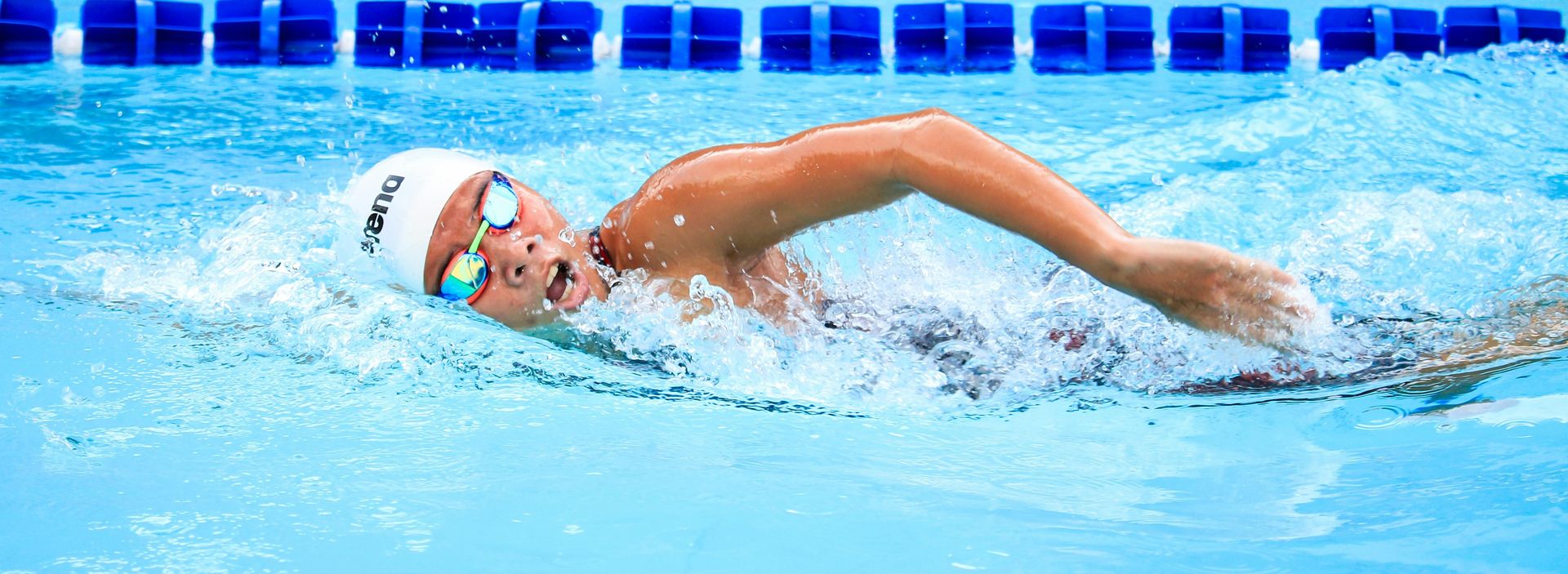
Welcome to ActiveLifeLine.com, your ultimate resource for health and fitness. Today, we're introducing "Athletic Edge," a comprehensive program designed to elevate your athletic performance. This guide focuses on cutting-edge workouts that enhance agility, speed, explosiveness, and sport-specific skills. Whether you're a competitive athlete or a fitness enthusiast looking to boost your performance, this scientifically-backed program will help you reach new heights.
The Importance of Athletic Performance Training
Why Focus on Agility, Speed, and Explosiveness?
Improving agility, speed, and explosiveness is crucial for athletes across all sports. These attributes allow for quick directional changes, rapid acceleration, and powerful movements, which are essential for peak performance. Sport-specific training tailors workouts to the demands of particular sports, ensuring that athletes develop the necessary skills and conditioning for optimal performance.
Benefits of Athletic Performance Training
- Enhanced Agility: Improved ability to change direction quickly and efficiently.
- Increased Speed: Greater overall speed and acceleration for better performance in various sports.
- Greater Explosiveness: Enhanced power output for more dynamic and impactful movements.
- Sport-Specific Skills: Tailored training that targets the unique demands of individual sports.
Anatomy of Athletic Performance
Understanding the key components of athletic performance helps in designing effective training programs. The main elements include:
- Agility: The ability to move quickly and change direction with precision.
- Speed: The capacity to cover a distance in the shortest time possible.
- Explosiveness: The ability to exert a maximal amount of force in a short period.
- Endurance: Sustaining high levels of performance over longer periods.
- Coordination: Harmonious functioning of body movements for smooth and efficient performance.
Sample Athletic Edge Workout Routine
Warm-Up (10-15 minutes)
- Dynamic Stretches: High knees, butt kicks, leg swings
- Movement Drills: Light jogging, side shuffles, carioca
Agility Training (20 minutes)
- Ladder Drills (3 sets)
- Perform various patterns such as in-and-out, lateral runs, and icky shuffle through an agility ladder.
- Cone Drills (3 sets)
- Set up cones in different patterns and perform drills like T-drills, L-drills, and shuttle runs.
Speed Training (20 minutes)
- Sprints (5 sets of 40 meters)
- Perform all-out sprints with full recovery between sets.
- Hill Sprints (4 sets of 30 meters)
- Sprint uphill to build power and speed, focusing on driving knees up and pushing off the ground forcefully.
Explosiveness Training (20 minutes)
- Box Jumps (3 sets of 10 reps)
- Jump onto a box, focusing on explosive power and a soft landing.
- Medicine Ball Slams (3 sets of 12 reps)
- Use a heavy medicine ball, lift it overhead, and slam it into the ground with maximum force.
- Plyometric Push-Ups (3 sets of 10 reps)
- Push off the ground with enough force to lift your hands into the air.
Sport-Specific Drills (20 minutes)
Tailor this section based on the sport you play. For example:
- Basketball: Dribbling drills, shooting practice, defensive slides
- Soccer: Ball control drills, passing accuracy, sprinting with ball
- Tennis: Serve practice, lateral movement drills, hitting volleys
Cool-Down (10-15 minutes)
- Static Stretches: Focus on major muscle groups, holding each stretch for 20-30 seconds.
- Foam Rolling: Roll out major muscle groups to release tension and aid recovery.
Nutrition for Peak Athletic Performance
Macronutrients and Micronutrients
Optimal nutrition is essential for athletic performance. Focus on:
- Protein: Supports muscle repair and growth. Include lean meats, dairy, beans, and nuts.
- Carbohydrates: Provide the primary energy source for high-intensity training. Choose whole grains, fruits, and vegetables.
- Fats: Necessary for overall health and energy. Include healthy fats like avocados, olive oil, and fatty fish.
- Hydration: Proper hydration is crucial for performance and recovery. Aim to drink at least 3 liters of water daily, adjusting for activity level and climate.
Pre- and Post-Workout Nutrition
- Pre-Workout: Consume a balanced meal with carbs and protein about 2-3 hours before training. A snack 30-60 minutes before can provide an extra energy boost.
- Post-Workout: Focus on protein and carbs to aid recovery and replenish glycogen stores. A protein shake with a banana is an excellent option.
Recovery Strategies for Optimal Performance
Importance of Recovery
Recovery is essential to prevent overtraining and injuries, and to allow the body to repair and strengthen. Key recovery strategies include:
- Sleep: Aim for 7-9 hours of quality sleep each night to support recovery and overall health.
- Active Recovery: Engage in low-intensity activities like walking or yoga to promote blood flow and reduce muscle stiffness.
- Stretching and Mobility: Incorporate regular stretching and mobility exercises to maintain flexibility and prevent injuries.
- Proper Nutrition: Ensure you are getting enough protein, carbohydrates, and healthy fats to support muscle repair and energy replenishment.
Conclusion
The Athletic Edge program is designed to elevate your athletic performance through a comprehensive approach that includes agility, speed, explosiveness, and sport-specific training. By incorporating these cutting-edge workouts into your routine, you can achieve new levels of performance and skill in your chosen sport.
At ActiveLifeLine.com, we are committed to providing you with expert advice and scientifically-backed information to help you achieve your health and fitness goals. Stay tuned for more comprehensive guides and resources designed to support your journey to becoming a stronger, faster, and more agile athlete
Bodyweight: Harness the Power of Your Own Body with Equipment-Free Workouts for Anytime, Anywhere Fitness
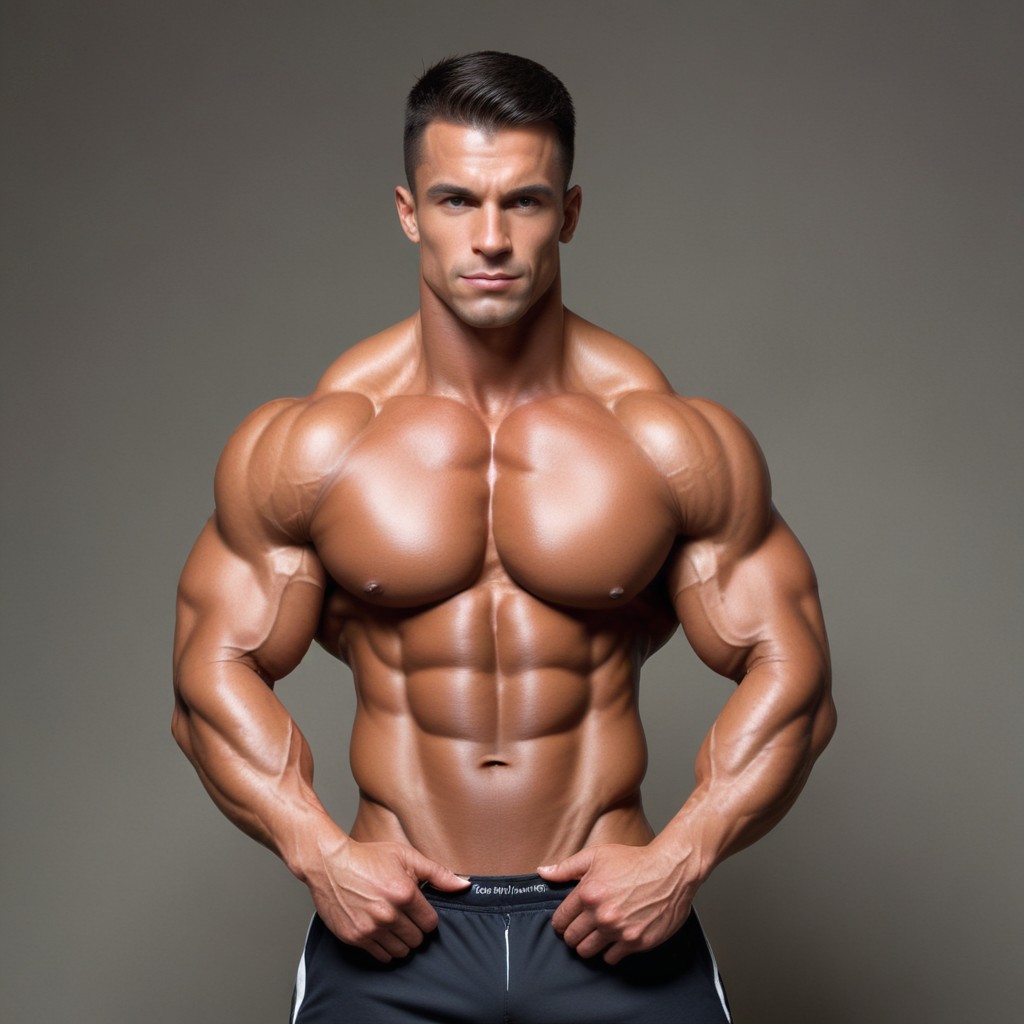
Welcome to ActiveLifeLine.com, your trusted source for health and fitness insights. Today, we delve into the world of bodyweight training—an incredibly effective, versatile, and convenient approach to fitness. This guide will show you how to harness the power of your own body through equipment-free workouts that deliver exceptional results, perfect for fitness at any time and any place.
The Benefits of Bodyweight Training
Why Choose Bodyweight Workouts?
Bodyweight training is an excellent fitness approach for several reasons:
- Accessibility: No need for a gym membership or expensive equipment. You can do these workouts anywhere—at home, in the park, or even while traveling.
- Scalability: Suitable for all fitness levels, bodyweight exercises can be easily modified to increase or decrease intensity.
- Functional Fitness: These workouts improve overall functional fitness, enhancing strength, flexibility, balance, and endurance.
- Time Efficiency: With no equipment setup, bodyweight workouts can be short and effective, fitting easily into a busy schedule.
Scientifically-Backed Benefits
- Improved Muscle Strength and Endurance: Studies show that bodyweight exercises like push-ups, squats, and planks effectively build muscle strength and endurance.
- Enhanced Flexibility and Mobility: Dynamic movements in bodyweight training help improve flexibility and joint mobility.
- Cardiovascular Health: Incorporating high-intensity bodyweight exercises like burpees and mountain climbers can significantly boost cardiovascular fitness.
- Injury Prevention: Strengthening muscles through bodyweight exercises supports joint stability and reduces the risk of injuries.
Essential Components of Bodyweight Workouts
Warm-Up (5-10 minutes)
- Dynamic Stretches: Arm circles, leg swings, and torso twists.
- Light Cardio: Jumping jacks, high knees, or a light jog in place.
Sample Full-Body Bodyweight Workout Routine
Upper Body
- Push-Ups (3 sets of 12 reps)
- Engage your core and maintain a straight line from head to heels. Lower your body until your chest nearly touches the ground.
- Tricep Dips (3 sets of 15 reps)
- Use a stable surface like a chair. Lower your body by bending your elbows, then push back up to the starting position.
- Plank Shoulder Taps (3 sets of 20 taps)
- From a plank position, tap each shoulder with the opposite hand while maintaining a stable core.
Lower Body
- Squats (3 sets of 15 reps)
- Stand with feet shoulder-width apart, lower your body as if sitting back into a chair, then return to standing.
- Lunges (3 sets of 12 reps per leg)
- Step forward with one leg, lowering your hips until both knees are bent at about a 90-degree angle.
- Glute Bridges (3 sets of 15 reps)
- Lie on your back with knees bent and feet flat on the floor. Lift your hips towards the ceiling, squeezing your glutes at the top.
Core
- Plank (3 sets of 60 seconds)
- Hold a plank position, ensuring your body forms a straight line from head to heels.
- Bicycle Crunches (3 sets of 20 reps per side)
- Lie on your back and alternate bringing opposite elbow to knee in a pedaling motion.
- Leg Raises (3 sets of 15 reps)
- Lie flat on your back and raise your legs towards the ceiling, keeping them straight.
Cool-Down (5-10 minutes)
- Static Stretches: Focus on the major muscle groups used during the workout, holding each stretch for 20-30 seconds.
- Deep Breathing: Incorporate deep breathing exercises to help relax and lower your heart rate.
Tips for Effective Bodyweight Training
- Focus on Form: Proper form is crucial to prevent injuries and maximize the effectiveness of each exercise. Pay attention to your body's alignment and engage the correct muscles.
- Progressive Overload: Gradually increase the difficulty of your workouts by adding more reps, sets, or incorporating more challenging variations of exercises.
- Consistency: Regular workouts are key to seeing improvements. Aim for at least 3-4 bodyweight training sessions per week.
- Rest and Recovery: Allow your muscles time to recover by incorporating rest days into your routine. Listen to your body and avoid overtraining.
Nutrition for Optimal Bodyweight Training
Macronutrients and Micronutrients
Fueling your body with the right nutrients is essential for performance and recovery:
- Protein: Supports muscle repair and growth. Include sources like lean meats, fish, beans, and nuts.
- Carbohydrates: Provide energy for your workouts. Choose complex carbs like whole grains, fruits, and vegetables.
- Fats: Necessary for overall health and energy. Incorporate healthy fats like avocados, olive oil, and nuts.
- Hydration: Stay hydrated to maintain peak performance. Drink at least 2-3 liters of water daily, adjusting for your activity level and climate.
Pre- and Post-Workout Nutrition
- Pre-Workout: Consume a balanced meal with carbs and protein 2-3 hours before exercise. A small snack 30-60 minutes prior can also help boost energy.
- Post-Workout: Focus on protein and carbs to aid recovery and replenish glycogen stores. A protein shake with a banana or a serving of Greek yogurt with fruit is ideal.
Conclusion
Bodyweight training is a powerful and convenient way to achieve exceptional fitness results without the need for equipment. By incorporating these exercises into your routine, you can enhance strength, flexibility, balance, and overall functional fitness anytime, anywhere.
At ActiveLifeLine.com, we are dedicated to providing you with expert advice and scientifically-backed information to help you reach your health and fitness goals. Stay tuned for more comprehensive guides and resources designed to support your journey to a healthier, stronger, and more active you.
Starting Line - (Beginner): Begin Your Fitness Journey with Confidence and Clarity
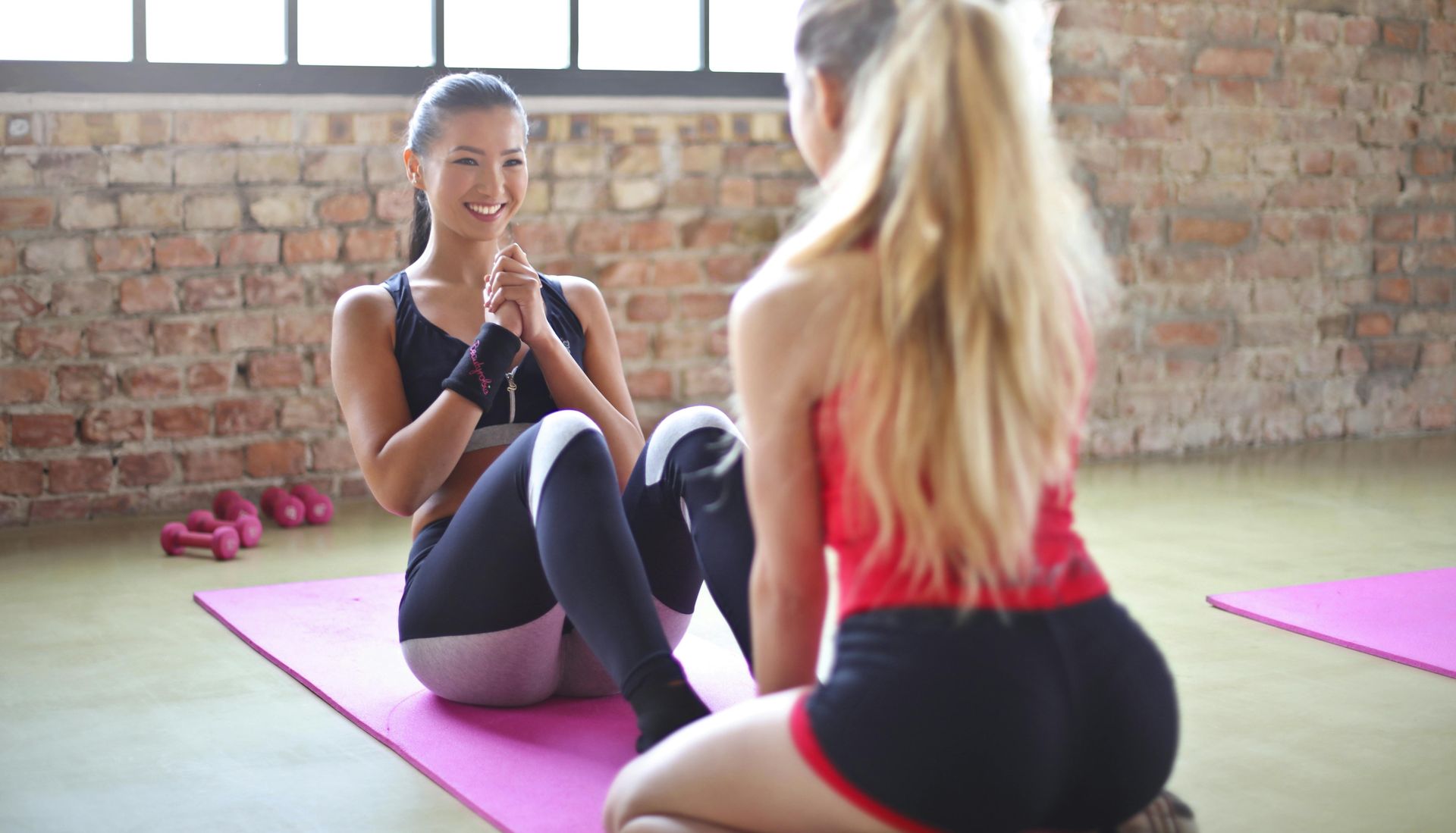
Welcome to ActiveLifeLine.com, your trusted resource for all things health and fitness. Embarking on a fitness journey can be both exciting and daunting, especially for beginners. Our "Starting Line" program is designed to provide you with the confidence and clarity you need to start your fitness journey on the right foot. This beginner-friendly guide offers a perfect foundation for a lifelong commitment to health and wellness.
The Importance of a Beginner-Friendly Fitness Routine
Why Start with Beginner Workouts?
Starting with beginner workouts is crucial for several reasons:
- Prevents Injuries: Gradual progression helps in building strength and endurance without overwhelming the body.
- Builds Confidence: Achievable goals and milestones keep motivation high and foster a positive mindset.
- Establishes Good Habits: Laying a strong foundation ensures that proper form and technique are prioritized from the start.
- Increases Consistency: Beginner workouts are designed to be manageable, promoting regular exercise habits.
Scientifically-Backed Benefits
- Improved Cardiovascular Health: Regular physical activity strengthens the heart and improves circulation, reducing the risk of heart disease.
- Enhanced Muscular Strength and Endurance: Progressive resistance training builds muscle strength and endurance, supporting daily activities and overall health.
- Better Flexibility and Mobility: Stretching and mobility exercises enhance the range of motion and reduce the risk of injuries.
- Mental Health Benefits: Exercise is known to reduce stress, anxiety, and depression, promoting overall mental well-being.
Essential Components of a Beginner Fitness Routine
Warm-Up (5-10 minutes)
A proper warm-up prepares your body for exercise, increases blood flow to muscles, and reduces the risk of injury. Here’s a simple warm-up routine:
- Dynamic Stretches: Arm circles, leg swings, and torso twists.
- Light Cardio: Marching in place, brisk walking, or gentle jogging.
Sample Beginner Workout Routine
Upper Body
- Wall Push-Ups (3 sets of 10 reps)
- Stand facing a wall, place your hands on the wall at shoulder height, and perform a push-up motion.
- Bicep Curls with Water Bottles (3 sets of 12 reps)
- Use water bottles or light weights, curl them towards your shoulders while keeping elbows close to your body.
- Arm Circles (3 sets of 15 reps each direction)
- Extend your arms to the sides and make small circles, gradually increasing the size.
Lower Body
- Bodyweight Squats (3 sets of 10 reps)
- Stand with feet shoulder-width apart, lower your body as if sitting in a chair, and return to standing.
- Standing Leg Lifts (3 sets of 12 reps per leg)
- Stand straight, lift one leg to the side without tilting your torso, and then return to the starting position.
- Calf Raises (3 sets of 15 reps)
- Stand with feet hip-width apart, rise onto the balls of your feet, and then lower back down.
Core
- Seated Knee Tucks (3 sets of 10 reps)
- Sit on a chair or the floor, lean back slightly, and bring your knees towards your chest.
- Bird Dogs (3 sets of 12 reps per side)
- On all fours, extend one arm and the opposite leg simultaneously, then return to the starting position.
- Plank (3 sets of 15-30 seconds)
- Hold a plank position, ensuring your body forms a straight line from head to heels.
Cool-Down (5-10 minutes)
A proper cool-down helps reduce muscle soreness and improve flexibility. Here’s a simple cool-down routine:
- Static Stretches: Focus on major muscle groups, holding each stretch for 20-30 seconds.
- Deep Breathing: Incorporate deep breathing exercises to help relax and lower your heart rate.
Tips for Starting Your Fitness Journey
- Set Realistic Goals: Start with small, achievable goals to build momentum and confidence.
- Prioritize Form: Focus on proper form and technique to prevent injuries and maximize effectiveness.
- Stay Consistent: Regular exercise is key to progress. Aim for at least 3-4 sessions per week.
- Listen to Your Body: Pay attention to your body’s signals and rest when needed to avoid overtraining.
Nutrition for Beginners
Macronutrients and Micronutrients
Proper nutrition is essential for supporting your fitness journey. Focus on a balanced diet that includes:
- Protein: Essential for muscle repair and growth. Include lean meats, fish, beans, and nuts.
- Carbohydrates: Provide energy for your workouts. Choose complex carbs like whole grains, fruits, and vegetables.
- Fats: Necessary for overall health and energy. Incorporate healthy fats like avocados, olive oil, and nuts.
- Hydration: Stay hydrated by drinking at least 2-3 liters of water daily, adjusting for activity level and climate.
Pre- and Post-Workout Nutrition
- Pre-Workout: Consume a balanced meal with carbs and protein 2-3 hours before exercise. A small snack 30-60 minutes prior can also help boost energy.
- Post-Workout: Focus on protein and carbs to aid recovery and replenish glycogen stores. A protein shake with a banana or a serving of Greek yogurt with fruit is ideal.
Conclusion
Starting your fitness journey with the right foundation is crucial for long-term success. The "Starting Line" program is designed to help beginners build confidence, establish good habits, and achieve their health and fitness goals. By following this beginner-friendly routine, you can embark on a lifelong commitment to health and wellness.
At ActiveLifeLine.com, we are dedicated to providing you with expert advice and scientifically-backed information to help you on your journey. Stay tuned for more comprehensive guides and resources designed to support your path to a healthier, stronger, and more active you
Homestyle Fitness: Achieve Your Fitness Goals from the Comfort of Your Own Home
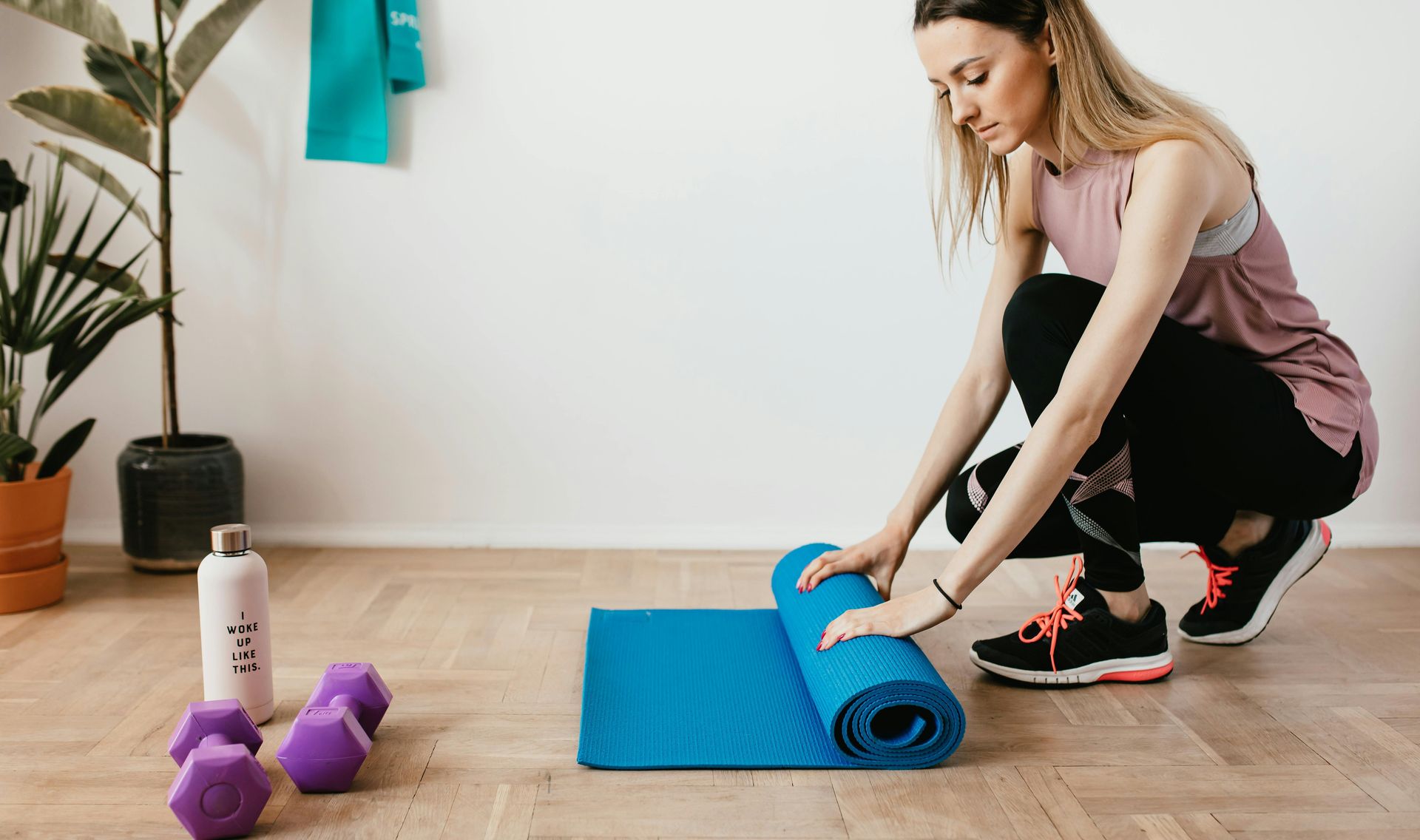
Welcome to ActiveLifeLine.com, your go-to resource for health and fitness insights. In today's busy world, finding time to hit the gym can be challenging. That’s why we’re excited to introduce "Homestyle Fitness," a comprehensive guide to achieving your fitness goals from the comfort of your own home. This program is designed to maximize results using minimal equipment and space, making it perfect for anyone looking to stay fit without the need for a gym membership.
The Benefits of Homestyle Fitness
Why Choose Home Workouts?
Home workouts offer numerous advantages:
- Convenience: Exercise at any time that fits your schedule without the need to commute.
- Cost-Effective: Save money on gym memberships and expensive equipment.
- Privacy: Work out in the comfort and privacy of your own home.
- Flexibility: Adapt your workouts to suit your personal needs and preferences.
Scientifically-Backed Benefits
- Improved Adherence: Studies show that people who work out at home are more likely to stick to their fitness routines.
- Customization: Home workouts can be tailored to your fitness level and goals, making them highly effective.
- Time Efficiency: Short, intense workouts can be just as beneficial as longer sessions at the gym, especially with minimal setup time.
- Mental Health: Exercising at home can reduce stress and improve mental health, as it eliminates many barriers to regular physical activity.
Essential Components of Homestyle Fitness
Warm-Up (5-10 minutes)
A proper warm-up is essential to prepare your body for exercise and reduce the risk of injury. Here’s a simple warm-up routine:
- Dynamic Stretches: Arm circles, leg swings, and torso twists.
- Light Cardio: Marching in place, jumping jacks, or a brisk walk around the house.
Sample Full-Body Home Workout Routine
Upper Body
- Push-Ups (3 sets of 10-15 reps)
- Engage your core and maintain a straight line from head to heels. Lower your body until your chest nearly touches the ground.
- Chair Dips (3 sets of 10-15 reps)
- Use a sturdy chair. Lower your body by bending your elbows, then push back up to the starting position.
- Bent-Over Rows with Water Bottles (3 sets of 12 reps per arm)
- Bend at the waist with a flat back, hold water bottles, and pull them towards your torso.
Lower Body
- Bodyweight Squats (3 sets of 15 reps)
- Stand with feet shoulder-width apart, lower your body as if sitting back into a chair, then return to standing.
- Lunges (3 sets of 12 reps per leg)
- Step forward with one leg, lowering your hips until both knees are bent at about a 90-degree angle.
- Glute Bridges (3 sets of 15 reps)
- Lie on your back with knees bent and feet flat on the floor. Lift your hips towards the ceiling, squeezing your glutes at the top.
Core
- Plank (3 sets of 30-60 seconds)
- Hold a plank position, ensuring your body forms a straight line from head to heels.
- Russian Twists (3 sets of 20 reps)
- Sit on the floor with your knees bent, lean back slightly, and twist your torso from side to side, holding a water bottle or light weight.
- Leg Raises (3 sets of 15 reps)
- Lie flat on your back and raise your legs towards the ceiling, keeping them straight.
Cool-Down (5-10 minutes)
A proper cool-down helps to reduce muscle soreness and improve flexibility. Here’s a simple cool-down routine:
- Static Stretches: Focus on the major muscle groups used during the workout, holding each stretch for 20-30 seconds.
- Deep Breathing: Incorporate deep breathing exercises to help relax and lower your heart rate.
Maximizing Results with Minimal Equipment
Essential Home Fitness Equipment
- Resistance Bands: Versatile and portable, these can be used for a variety of exercises to add resistance and increase intensity.
- Dumbbells or Water Bottles: Light weights can help in strength training. Water bottles are a great alternative if you don’t have dumbbells.
- Yoga Mat: Provides a comfortable surface for floor exercises and stretches.
- Chair or Sturdy Surface: Useful for exercises like tricep dips and step-ups.
Tips for Effective Home Workouts
- Set a Schedule: Consistency is key. Schedule your workouts just like any other important activity.
- Create a Dedicated Space: Designate an area in your home for exercise to keep distractions at bay.
- Stay Motivated: Keep track of your progress, set achievable goals, and reward yourself for milestones.
- Focus on Form: Proper form is crucial to prevent injuries and maximize the effectiveness of your workouts.
Nutrition for Optimal Home Fitness
Macronutrients and Micronutrients
Proper nutrition is essential to support your fitness journey. Focus on a balanced diet that includes:
- Protein: Supports muscle repair and growth. Include sources like lean meats, fish, beans, and nuts.
- Carbohydrates: Provide energy for your workouts. Choose complex carbs like whole grains, fruits, and vegetables.
- Fats: Necessary for overall health and energy. Incorporate healthy fats like avocados, olive oil, and nuts.
- Hydration: Stay hydrated by drinking at least 2-3 liters of water daily, adjusting for your activity level and climate.
Pre- and Post-Workout Nutrition
- Pre-Workout: Consume a balanced meal with carbs and protein 2-3 hours before exercise. A small snack 30-60 minutes prior can also help boost energy.
- Post-Workout: Focus on protein and carbs to aid recovery and replenish glycogen stores. A protein shake with a banana or a serving of Greek yogurt with fruit is ideal.
Conclusion
Homestyle fitness offers a convenient and effective way to achieve your fitness goals without the need for a gym. By incorporating these exercises into your routine, you can enhance strength, flexibility, and overall functional fitness from the comfort of your home.
At ActiveLifeLine.com, we are committed to providing you with expert advice and scientifically-backed information to help you reach your health and fitness goals. Stay tuned for more comprehensive guides and resources designed to support your journey to a healthier, stronger, and more active you.
Star Fitness Secrets: Unlock the Fitness Secrets of the Stars
Welcome to ActiveLifeLine.com, your premier destination for health and fitness insights. Today, we unveil the secrets behind the incredible physiques of Hollywood’s top celebrities. Discover exclusive workouts inspired by celebrity trainers and tailored diet plans that deliver red-carpet results. Get ready to unlock the fitness secrets of the stars and incorporate them into your own fitness journey.
1. Chris Hemsworth
Workout Plan
Chris Hemsworth, best known for his role as Thor, follows a rigorous training regimen that combines strength training, functional fitness, and high-intensity interval training (HIIT).
Weightlifting Routine
- Dumbbell Rows — 4 sets of 15 repetitions
- Dumbbell Bench Press — 4 sets of 15 repetitions
- Dumbbell Bicep Curls — 4 sets of 15 repetitions
- Dumbbell Bent-Over Rear Flys — 4 sets of 15 repetitions
- Barbell Shrugs — 4 sets of 12 repetitions
- Barbell Wrist Curls — 3 sets of 20 repetitions
- Reverse Barbell Wrist Curls — 3 sets of 20 repetitions
Bodyweight Circuit
- Pull-ups — 3 sets of 15 repetitions
- Sit-ups — 3 sets of 20 repetitions
- Push-ups — 3 sets of 15 repetitions
- Burpees — 5 sets of 10 repetitions
- Tricep Dips — 4 sets of 10 repetitions
- Walking Lunges — 4 sets of 20 repetitions
- Standing Calf Raises — 3 sets of 20 repetitions
- Bodyweight Squats — 3 sets of 15 repetitions
- Front Box Jumps — 3 sets of 10 repetitions
- Hollow Outs — 5 sets of 10 repetitions
- Sit-Throughs — Timed
- Plank with Leg Lift — Timed
Iron Circuit (Heavy)
- Barbell Squats — 3 sets of 15 repetitions
- Barbell Bench Press — 3 sets of 5 repetitions
- Standing Military Press — 3 sets of 8 repetitions
- Barbell Deadlifts — 3 sets of 5 repetitions
- Hammer Strength Chest Press — 4 sets of 15 repetitions
- Hammer Curls — 3 sets of 5 repetitions
Diet Plan
|
Day |
Time |
Meal |
Description |
|
Monday |
7:00 AM - 9:00 AM |
Breakfast |
Green protein shake |
|
Monday |
10:00 AM |
Mid-Morning Snack (Optional) |
Yogurt bowl with berries, chia seeds, almonds, and honey |
|
Monday |
12:00 PM |
Workout |
[Workout] |
|
Monday |
1:00 PM |
Post-Workout Recovery |
Post-workout shake (vegetable protein, ice water, BCAAs, 1g Vitamin C) |
|
Monday |
2:30 PM |
Lunch |
Grilled chicken (8oz), crispy sweet potatoes, rocket salad with seeds, nuts, and salted apple (lemon & olive oil dressing) |
|
Monday |
5:30 PM |
Afternoon Snack (Optional) |
Two rice crackers with Vegemite, tuna, and cherry tomatoes |
|
Monday |
7:00 PM |
Dinner |
White fish (8oz), grilled mushrooms, raw broccoli salad |
|
Monday |
9:00 PM |
Evening Snack (Optional) |
Half a small papaya with yogurt and berries; magnesium/zinc supplement |
|
Tuesday (Option 1) |
7:00 AM - 9:00 AM |
Breakfast |
Green protein shake |
|
Tuesday (Option 1) |
10:00 AM |
Mid-Morning Snack (Optional) |
Yogurt bowl with berries, chia seeds, almonds, and honey |
|
Tuesday (Option 1) |
12:00 PM |
Workout |
[Workout] |
|
Tuesday (Option 1) |
1:00 PM |
Post-Workout Recovery |
Post-workout shake (vegetable protein, ice water, BCAAs, 1g Vitamin C) |
|
Tuesday (Option 1) |
2:30 PM |
Lunch |
Grilled chicken (8oz), crispy sweet potatoes, rocket salad with seeds, nuts, and salted apple (lemon & olive oil dressing) |
|
Tuesday (Option 1) |
5:30 PM |
Afternoon Snack (Optional) |
Two rice crackers with Vegemite, tuna, and cherry tomatoes |
|
Tuesday (Option 1) |
7:00 PM |
Dinner |
White fish (8oz), grilled mushrooms, raw broccoli salad |
|
Tuesday (Option 1) |
9:00 PM |
Evening Snack (Optional) |
Half a small papaya with yogurt and berries; magnesium/zinc supplement |
|
Tuesday (Option 2) |
7:00 AM - 9:00 AM |
Breakfast |
Green protein shake |
|
Tuesday (Option 2) |
10:00 AM |
Mid-Morning Snack (Optional) |
Yogurt bowl with berries, chia seeds, almonds, and honey |
|
Tuesday (Option 2) |
12:00 PM |
Workout |
[Workout] |
|
Tuesday (Option 2) |
1:00 PM |
Post-Workout Recovery |
Post-workout shake (vegetable protein, ice water, BCAAs, 1g Vitamin C) |
|
Tuesday (Option 2) |
2:30 PM |
Lunch |
Eye fillet (fillet mignon) (8oz), grilled pumpkin salad with spinach, herbs, cucumber, and ½ cup steamed rice |
|
Tuesday (Option 2) |
5:30 PM |
Afternoon Snack (Optional) |
Chicken and vegetable soup with barley |
|
Tuesday (Option 2) |
7:00 PM |
Dinner |
White fish (8oz), leafy green salad with radicchio and balsamic dressing, side of roasted mixed cruciferous vegetables |
|
Tuesday (Option 2) |
9:00 PM |
Evening Snack (Optional) |
BCAAs with magnesium/zinc supplement |
|
Wednesday |
7:00 AM |
Breakfast |
Green protein shake |
|
Wednesday |
9:00 AM |
Mid-Morning Snack (Optional) |
Three scrambled eggs on a wrap with tomato salsa |
|
Wednesday |
11:00 AM |
Workout |
[Workout] |
|
Day |
Time |
Meal |
Description |
|
Wednesday |
12:00 PM |
Lunch |
Fresh tuna sashimi salad with leafy greens, avocado, walnuts, and ½ cup of sushi rice |
|
Wednesday |
3:00 PM |
Afternoon Snack (Optional) |
Homemade frozen green bar (spinach, cooked + frozen cauliflower, chia seeds, dates, spirulina, bee pollen, banana, almond flour, pumpkin seeds, cucumber) |
|
Wednesday |
6:30 PM |
Dinner |
Grilled lamb chops, cauliflower mash, grilled zucchini, roasted carrots |
|
Wednesday |
9:00 PM |
Evening Snack (Optional) |
Yogurt with honey; BCAAs with magnesium/zinc supplement |
|
Thursday |
8:00 AM |
Breakfast |
Almond banana shake with flax oil, bee pollen, sea salt, and vegetable protein |
|
Thursday |
10:00 AM |
Mid-Morning Snack (Optional) |
Two fried eggs on spelt bread with warm spinach |
|
Thursday |
12:00 PM |
Workout |
[Workout] |
|
Thursday |
1:00 PM |
Post-Workout Recovery |
Post-workout shake (vegetable protein, BCAAs) |
|
Thursday |
2:00 PM |
Lunch |
Grilled ribeye steak (6oz), grilled romaine and vegetable salad, ½ cup wild rice pilaf |
|
Thursday |
4:00 PM |
Afternoon Snack (Optional) |
Beef jerky snack with nuts and dried fruit |
|
Thursday |
7:00 PM |
Dinner |
Steamed snapper fish, tomato, onion, roasted brussels sprouts, small baked potato with Greek yogurt |
|
Thursday |
9:00 PM |
Evening Snack (Optional) |
BCAAs with magnesium/zinc supplement |
|
Friday |
8:00 AM |
Breakfast |
Raw cacao & frozen berry shake with coconut oil, chia seeds, dates, and vegetable protein |
|
Friday |
10:00 AM |
Mid-Morning Snack (Optional) |
Savory porridge with olive oil, parmesan, and two poached eggs |
|
Friday |
12:00 PM |
Workout |
[Workout] |
|
Friday |
1:00 PM |
Post-Workout Recovery |
Post-workout shake |
|
Friday |
2:00 PM |
Lunch |
Sesame chicken salad with leafy greens, sprouts, pickles, ½ cup steamed rice |
|
Friday |
5:00 PM |
Afternoon Snack (Optional) |
Homemade frozen green bar |
|
Friday |
7:00 PM |
Dinner |
Grilled mahi-mahi (8oz), grilled asparagus, roasted tomato, non-dairy Caesar salad |
|
Friday |
9:00 PM |
Evening Snack (Optional) |
BCAAs with magnesium/zinc supplement |
Chris’s diet focuses on high protein intake to support muscle growth, along with healthy fats and complex carbohydrates for sustained energy.
Sample Diet:
- Breakfast: Omelette with spinach, tomatoes, and feta cheese; whole-grain toast
- Lunch: Grilled chicken breast, quinoa, and mixed vegetables
- Snack: Greek yogurt with almonds and berries
- Dinner: Baked salmon, sweet potato, and steamed broccoli
- Post-Workout: Protein shake with banana and almond milk
2. Jennifer Aniston
Workout Plan
Jennifer Aniston maintains her ageless physique with a mix of yoga, cardio, and strength training.
Sample Workout:
- Warm-Up: 5-10 minutes of light cardio
- Yoga: 30 minutes of Vinyasa flow
- Strength Training:
- Dumbbell Squats: 3 sets of 15 reps
- Plank to Push-Up: 3 sets of 12 reps
- Bicep Curls: 3 sets of 15 reps
- Cardio: 20 minutes on the treadmill, alternating between jogging and incline walking
- Cool-Down: 5-10 minutes of stretching
Diet Plan
Jennifer’s diet is balanced and focuses on nutrient-dense foods, with an emphasis on hydration.
Sample Diet:
- Breakfast: Overnight oats with chia seeds, berries, and almond milk
- Lunch: Turkey burger with avocado, mixed greens, and a side of sweet potato fries
- Snack: Apple slices with almond butter
- Dinner: Grilled sea bass with a side of quinoa and steamed asparagus
- Hydration: 2-3 liters of water daily
3. Dwayne "The Rock" Johnson
Workout Plan
Dwayne Johnson's workouts are legendary for their intensity, focusing on heavy lifting and high volume.
workout plan
|
Day |
Muscle Group |
Exercises |
Sets x Reps |
|
Monday |
Legs |
Leg press |
4 x 20 reps |
|
Barbell walking lunges |
4 x 20 reps |
||
|
Single leg hack squat |
4 x 12 reps |
||
|
Barbell squats |
4 x 12 reps |
||
|
Romanian deadlift |
4 x 12 reps |
||
|
Seated leg curls |
3 x 20 reps |
||
|
Thigh abductor |
3 x 20 reps |
||
|
Tuesday |
Chest |
Dumbbell bench press |
4 x 20 reps |
|
Incline dumbbell press |
4 x 20 reps |
||
|
Flat bench cable flyes |
4 x 12 reps |
||
|
Machine flyes |
4 x 12 reps |
||
|
Decline barbell bench press (medium grip) |
4 x 12 reps |
||
|
Wednesday |
Back |
Barbell row |
4 x 20 reps |
|
One-arm dumbbell row (each arm) |
4 x 12 reps |
||
|
Face pulls |
4 x 12 reps |
||
|
Romanian deadlift |
4 x 12 reps |
||
|
Failure hyperextensions |
3 sets to failure |
||
|
Thursday |
Legs (Same as Day 1) |
Refer to exercises listed on Monday |
- |
|
Friday |
Shoulders |
Barbell overhead press |
4 x 12 reps |
|
Front dumbbell raise |
4 x 12 reps |
||
|
Side lateral raise |
4 x 12 reps |
||
|
Failure dumbbell shrug |
4 sets to failure |
||
|
Standing military press |
4 x 12 reps |
||
|
Rear delt cable raise |
4 x 12 reps |
||
|
Saturday |
Arms & Abs |
Failure incline hammer curls |
4 sets to failure |
|
Failure triceps pushdown |
4 sets to failure |
||
|
Bicep curls |
4 x 12 reps |
||
|
Skull crushers |
4 x 12 reps |
||
|
Hanging leg lifts |
4 sets to failure |
||
|
Rope crunches |
4 x 20 reps |
||
|
Russian twists |
4 x 20 reps |
The Rock’s Ultimate Diet Plan
Maintaining Dwayne "The Rock" Johnson's impressive physique is no small feat, and his rigorous diet is a crucial component of his fitness regime. The Rock’s diet, known for its immense caloric intake and legendary cheat days, is designed to fuel his intense workouts and sustain his massive frame. Here’s an in-depth look at what keeps The Rock rock-solid.
The Rock's 6,000-Calorie Daily Intake
The Rock's daily diet is a powerhouse, clocking in at around 6,000 calories spread over six meals. Though he used to consume even more during his wrestling days—between 6,000 to 8,000 calories per day—his current intake remains substantial. As Johnson himself says about cheat meals, “Don’t cheat yourself, treat yourself.”
Meal Breakdown
1. Breakfast Johnson kicks off his day with a hearty breakfast featuring a bowl of oatmeal topped with berries and nuts. This meal is complemented by buffalo meat and eggs, providing a robust mix of protein and healthy fats to fuel his morning.
2. Second Breakfast Post-morning workout, The Rock refuels with a meal rich in chicken and rice or another fast-digesting carbohydrate to aid recovery and digestion. This helps replenish the energy expended during his intense training sessions.
3. Lunch A typical lunch for The Rock consists of a protein-packed combination of chicken, buffalo, or salmon paired with rice and a side of greens. This meal ensures a balance of proteins, carbs, and essential nutrients.
4. Second Lunch The second lunch mirrors his first, with The Rock alternating between chicken, buffalo, and salmon to keep his protein intake varied. This repetitive yet effective meal plan helps maintain his muscle mass and energy levels.
5. Dinner Dinner is similar to his lunches, reinforcing the intake of protein, carbs, and vegetables. This consistent nutrition approach aids in muscle recovery and growth while keeping his metabolism active.
6. Supper To cap off his day, Johnson indulges in a final meal comprising protein, carbs, and greens. This extra meal ensures he packs in the necessary calories to sustain his muscle mass and overall energy needs.
Hydration: A Key Component
Hydration is another critical aspect of The Rock’s regimen. He drinks between 8 to 11 liters of water daily, ensuring he remains hydrated throughout his workouts and daily activities.
Conclusion
Adopting The Rock’s diet plan requires dedication and a significant appetite, but it's clear that this well-structured, high-calorie intake is a cornerstone of his fitness success. From hearty breakfasts to protein-packed suppers, every meal is crafted to support his demanding workout routine and maintain his impressive physique.
For those inspired by The Rock’s diet, remember to consult with a nutritionist or dietitian to tailor a plan that suits your individual needs and goals. Whether you aim to build muscle, improve endurance, or simply eat healthier, Dwayne Johnson’s disciplined approach to eating is a testament to the power of nutrition in achieving fitness greatness
4. Scarlett Johansson
Workout Plan
Scarlett Johansson, known for her role as Black Widow, follows a varied training routine that includes strength training, gymnastics, and martial arts.
Sample Workout:
- Warm-Up: 5-10 minutes of dynamic stretches
- Strength Training:
- Deadlifts: 4 sets of 10 reps
- Overhead Press: 4 sets of 10 reps
- Bulgarian Split Squats: 3 sets of 12 reps per leg
- Gymnastics:
- Handstand Holds: 3 sets of 30 seconds
- Rings Rows: 3 sets of 12 reps
- Martial Arts:
- 30 minutes of kickboxing or MMA training
- Cool-Down: 5-10 minutes of static stretching
Diet Plan
Scarlett’s diet emphasizes clean eating with plenty of protein, healthy fats, and vegetables.
Sample Diet:
- Breakfast: Smoothie with spinach, avocado, protein powder, and almond milk
- Lunch: Grilled turkey breast with quinoa and roasted vegetables
- Snack: Carrot sticks with hummus
- Dinner: Grilled salmon with a side of brown rice and sautéed spinach
- Post-Workout: Protein shake with berries and water
5. Zac Efron
Workout Plan
Zac Efron’s fitness routine, especially for his role in Baywatch, focuses on circuit training and HIIT.
Sample Workout:
- Warm-Up: 5-10 minutes of jump rope
- Circuit Training:
- Pull-Ups: 3 sets of 15 reps
- Dumbbell Bench Press: 3 sets of 15 reps
- Weighted Squats: 3 sets of 15 reps
- Russian Twists: 3 sets of 20 reps
- HIIT:
- 20 seconds of sprinting followed by 40 seconds of rest, repeated for 20 minutes
- Cool-Down: 5-10 minutes of stretching
Diet Plan
Zac follows a diet rich in lean proteins and complex carbohydrates while minimizing processed foods.
Sample Diet:
- Breakfast: Egg white omelette with spinach and tomatoes, whole-grain toast
- Lunch: Grilled chicken salad with mixed greens, cherry tomatoes, and avocado
- Snack: Protein bar and an apple
- Dinner: Lean beef stir-fry with vegetables and brown rice
- Post-Workout: Protein shake with almond milk and a scoop of peanut butter
6. Gal Gadot
Workout Plan
Gal Gadot’s training for Wonder Woman involved a mix of strength training, high-intensity cardio, and functional movements.
Sample Workout:
- Warm-Up: 5-10 minutes of rowing
- Strength Training:
- Deadlifts: 4 sets of 12 reps
- Weighted Lunges: 4 sets of 12 reps per leg
- Push-Ups: 4 sets of 15 reps
- Functional Training:
- TRX Rows: 3 sets of 15 reps
- Kettlebell Swings: 3 sets of 20 reps
- Cardio: 20 minutes of interval training on the treadmill
- Cool-Down: 5-10 minutes of static stretching
Diet Plan
Gal’s diet is balanced with a focus on whole foods, adequate protein, and hydration.
Sample Diet:
- Breakfast: Whole-grain toast with avocado and poached eggs
- Lunch: Grilled salmon with quinoa and mixed vegetables
- Snack: Fresh fruit and a handful of nuts
- Dinner: Chicken stir-fry with broccoli, bell peppers, and brown rice
- Hydration: Plenty of water throughout the day
7. Michael B. Jordan
Workout Plan
Michael B. Jordan’s training for roles like Creed focuses on boxing, strength training, and conditioning.
Sample Workout:
- Warm-Up: 10 minutes of jump rope
- Boxing Training:
- 3 rounds of shadowboxing (3 minutes each)
- 3 rounds of heavy bag work (3 minutes each)
- 3 rounds of mitt work (3 minutes each)
- Strength Training:
- Bench Press: 4 sets of 10 reps
- Squats: 4 sets of 10 reps
- Bent-Over Rows: 4 sets of 10 reps
- Conditioning:
- Sprints: 8 rounds of 30 seconds sprint, 1-minute walk
- Cool-Down: 5-10 minutes of stretching
Diet Plan
Michael’s diet includes high-protein foods, healthy fats, and complex carbohydrates.
Sample Diet:
- Breakfast: Protein smoothie with spinach, banana, protein powder, and almond milk
- Lunch: Grilled chicken breast with brown rice and mixed vegetables
- Snack: Greek yogurt with honey and nuts
- Dinner: Lean beef with quinoa and steamed broccoli
- Post-Workout: Protein shake with a banana
8. Brie Larson
Workout Plan
Brie Larson’s preparation for Captain Marvel included strength training, functional movements, and core workouts.
Sample Workout:
- Warm-Up: 5-10 minutes of dynamic stretches
- Strength Training:
- Deadlifts: 4 sets of 8 reps
- Military Press: 4 sets of 8 reps
- Pull-Ups: 4 sets of 10 reps
- Functional Movements:
- Kettlebell Swings: 3 sets of 15 reps
- Box Jumps: 3 sets of 15 reps
- Core Work:
- Plank: 3 sets of 1 minute
- Russian Twists: 3 sets of 20 reps
- Cool-Down: 5-10 minutes of stretching
Diet Plan
Brie’s diet focuses on lean proteins, complex carbohydrates, and plenty of vegetables.
Sample Diet:
- Breakfast: Greek yogurt with granola and fresh berries
- Lunch: Quinoa salad with chickpeas, cucumbers, tomatoes, and feta cheese
- Snack: Protein bar and a piece of fruit
- Dinner: Grilled shrimp with whole grain pasta and a side of roasted vegetables
- Post-Workout: Smoothie with protein powder, spinach, and almond milk
9. Henry Cavill (SUPERMAN)
Workout Plan
Henry Cavill’s training for Superman involves heavy lifting, functional training, and cardio.
Sample Workout:
- Warm-Up: 10 minutes of light cardio
- Strength Training:
- Deadlifts: 4 sets of 10 reps
- Bench Press: 4 sets of 10 reps
- Pull-Ups: 4 sets of 10 reps
- Shoulder Press: 4 sets of 10 reps
- Functional Training:
- Kettlebell Swings: 3 sets of 20 reps
- Sled Pushes: 3 sets of 30 seconds
- Cardio: 20 minutes of interval training on the treadmill
- Cool-Down: 5-10 minutes of stretching
Diet Plan
Henry’s diet includes high protein, moderate carbs, and healthy fats to support his intense training regimen.
Sample Diet:
- Breakfast: Omelette with mushrooms, spinach, and cheese; whole grain toast
- Lunch: Grilled chicken with sweet potato and green beans
- Snack: Protein shake with almond milk and a handful of nuts
- Dinner: Baked salmon with brown rice and steamed broccoli
- Post-Workout: Protein shake with a banana
10. Margot Robbie
Workout Plan
Margot Robbie’s fitness routine includes a mix of Pilates, cardio, and strength training.
Sample Workout:
- Warm-Up: 5-10 minutes of light cardio
- Pilates:
- 30 minutes of core-focused Pilates exercises
- Strength Training:
- Dumbbell Lunges: 3 sets of 15 reps per leg
- Push-Ups: 3 sets of 15 reps
- Dumbbell Rows: 3 sets of 15 reps per arm
- Cardio:
- 20 minutes of interval training on the treadmill
- Cool-Down: 5-10 minutes of stretching
Diet Plan
Margot’s diet focuses on fresh, unprocessed foods with plenty of vegetables and lean proteins.
Sample Diet:
- Breakfast: Smoothie with spinach, banana, protein powder, and almond milk
- Lunch: Grilled chicken salad with mixed greens, cherry tomatoes, and avocado
- Snack: Carrot sticks with hummus
- Dinner: Grilled fish with a side of quinoa and roasted vegetables
- Hydration: Adequate water intake throughout the day
Conclusion
Unlocking the fitness secrets of Hollywood's elite can provide powerful inspiration and practical strategies for your own fitness journey. At ActiveLifeLine.com, we are dedicated to bringing you scientifically-validated insights and expert advice to help you achieve your health and wellness goals. Whether you're training at home or in the gym, the workouts and diet plans of these celebrities offer valuable guidance for anyone looking to get fit and stay healthy.
Stay tuned for more exclusive content and fitness tips from ActiveLifeLine.com, and start your journey to red-carpet-worthy results today!
Chest Workout: Build a Strong, Chiseled Chest
Welcome to another feature article at ActiveLifeLine.com, where we're all about helping you build strength and confidence through fitness. Today, we’re focusing on one of the most popular areas of fitness: developing a strong, chiseled chest. Whether you're aiming to enhance your physique, improve posture, or simply gain strength, this guide will walk you through targeted exercises specifically designed to sculpt and strengthen your pectoral muscles.
Understanding the Chest Muscles
The chest muscles, or pectorals, are primarily composed of two muscles:
- Pectoralis Major: The larger muscle that fans out across the chest from the shoulder to the breastbone.
- Pectoralis Minor: A smaller muscle that sits underneath the pectoralis major, extending from the ribs to the scapula.
These muscles are crucial for various movements involving the shoulders and arms, including pressing actions and bringing the arms across the body.
Targeted Chest Exercises
To achieve a well-rounded chest workout, it's important to target the upper, middle, and lower sections of the chest. Below, we will break down the exercises by these areas to ensure all parts of the chest are effectively worked.
Upper Chest Workout
Focusing on the upper chest can help create a fuller look and is essential for overall chest development.
- Incline Bench Press:
- Target Area: Upper pectoral muscles.
- Execution: Perform this exercise on an incline bench (set at about 45 degrees). Using a barbell or dumbbells, press upwards and focus on squeezing the chest at the top of the movement.
- Reps/Sets: 4 sets of 8-12 reps.
- Incline Dumbbell Fly:
- Target Area: Upper chest fibers.
- Execution: Lie on an incline bench with a dumbbell in each hand. Extend your arms above your chest and slowly lower them in a wide arc until you feel a stretch, then bring them back to the starting position.
- Reps/Sets: 3 sets of 10-12 reps.
Middle Chest Workout
The middle chest is crucial for overall mass and depth, providing that classic chest appearance.
- Flat Bench Press:
- Target Area: Middle part of the pectoral muscles.
- Execution: Lying flat on a bench, press a barbell from the chest up to full extension. Keep the movements steady and controlled.
- Reps/Sets: 4 sets of 8-10 reps.
- Chest Dips:
- Target Area: Lower and middle chest areas.
- Execution: Use parallel bars and lean forward to place more emphasis on the chest. Lower your body until the elbows are at a 90-degree angle, then push back up.
- Reps/Sets: 3 sets of 8-10 reps.
Lower Chest Workout
Targeting the lower chest helps in achieving a full, rounded look and aids in overall chest definition.
- Decline Bench Press:
- Target Area: Lower pectoral muscles.
- Execution: Performed on a decline bench, press the weight from the chest upwards. Ensure you do not lock your elbows at the top.
- Reps/Sets: 4 sets of 8-12 reps.
- Cable Crossovers (Low to High):
- Target Area: Lower chest fibers.
- Execution: Set the cable machine at the lowest setting. Using the handles, pull the cables diagonally upwards and across your body, focusing on squeezing the chest.
- Reps/Sets: 3 sets of 10-12 reps.
Creating a Comprehensive Chest Workout Plan
To maximize growth and strength in your chest, it’s recommended to combine exercises targeting all areas of the chest within a single workout. Here's a sample weekly chest workout plan:
- Monday:
- Warm-up: 10 minutes of dynamic stretching or light cardio.
- Incline Bench Press: 4 sets of 8-12 reps.
- Flat Bench Press: 4 sets of 8-10 reps.
- Chest Dips: 3 sets of 8-10 reps.
- Thursday:
- Warm-up: 10 minutes of dynamic stretching or light cardio.
- Decline Bench Press: 4 sets of 8-12 reps.
- Incline Dumbbell Fly: 3 sets of 10-12 reps.
- Cable Crossovers: 3 sets of 10-12 reps.
If you're focusing on your upper chest on Monday, here's a workout plan that targets this area effectively. The upper chest can be particularly stubborn to develop, so emphasizing incline movements and variations that place more stress on the upper pectoral fibers will be key.
Monday: Upper Chest Workout
1. Incline Barbell Bench Press
- Purpose: Focuses on the upper part of the pectoral muscles.
- Execution: Set an incline bench to about 45 degrees. Lie back and plant your feet firmly on the ground. Grip the barbell with hands slightly wider than shoulder-width. Unrack the bar, lower it to the upper part of your chest, and press it up explosively.
- Sets/Reps: 4 sets of 6-8 reps.
- Form Tips: Keep your back slightly arched, and ensure the bar path remains vertical. Engage your core and glutes throughout the movement.
2. Incline Dumbbell Press
- Purpose: Increases range of motion and targets the upper chest from slightly different angles.
- Execution: Lie on an incline bench with a dumbbell in each hand. Start with the weights just above your shoulders. Press the dumbbells up until your arms are extended, and bring them together at the top before lowering them back down slowly.
- Sets/Reps: 4 sets of 8-10 reps.
- Form Tips: Don’t let the dumbbells touch at the top to keep tension on the chest. Move the weights in a controlled manner, focusing on the muscle contraction.
3. Incline Dumbbell Fly
- Purpose: Stretches the chest muscles and isolates the upper chest.
- Execution: With a dumbbell in each hand, lie back on an incline bench. With a slight bend in your elbows, lower the weights in an arc until you feel a stretch in your chest, then bring them back to the starting position.
- Sets/Reps: 3 sets of 10-12 reps.
- Form Tips: Keep your elbows fixed in a slightly bent position; avoid bending them during the lift or you’ll shift the focus away from your chest.
4. Low to High Cable Fly
- Purpose: Targets the lower portion of the upper chest, enhancing definition.
- Execution: Set the pulleys on the lowest setting. Stand between them with your back to the machine, holding a handle in each hand. With a slight bend in your elbows and a step forward for stability, bring your hands upward and together in front of your chest.
- Sets/Reps: 3 sets of 12-15 reps.
- Form Tips: Keep your chest up and core tight. Focus on using your chest to pull the weights rather than your arms.
5. Chest Dips (Focused on Upper Chest)
- Purpose: Enhances the chest’s overall development with a focus on the upper area.
- Execution: Use parallel bars and lean forward significantly as you dip. Lower your body until your shoulders are just below your elbows, then push back up.
- Sets/Reps: 3 sets of 8-10 reps.
- Form Tips: Leaning forward shifts more of the work to the chest. Avoid going too low, as it might stress your shoulders.
6. Incline Push-Up
- Purpose: A finishing move that uses bodyweight to further fatigue the upper chest.
- Execution: Place your hands on an elevated surface like a bench or step. Perform a push-up, maintaining a straight line from your head to your heels.
- Sets/Reps: 3 sets to failure.
- Form Tips: Keep your elbows slightly tucked in to emphasize chest involvement. Your body should be angled downwards to shift the focus to the upper chest.
Workout Tips:
- Warm-up properly: Begin with 5-10 minutes of light cardio followed by dynamic stretching focused on the upper body to prep your muscles.
- Control your tempo: Use a 2:1:2 tempo (two seconds down, one-second pause, two seconds up) to increase time under tension.
- Rest adequately: Allow 60-90 seconds of rest between sets to optimize strength recovery without letting your heart rate drop too low.
Implementing these exercises with the correct form and workout structure will help you build a stronger, more defined upper chest
Conclusion
Building a strong, chiseled chest requires consistency, effort, and a well-structured workout plan that targets all areas of the chest. By incorporating a variety of exercises that focus on the upper, middle, and lower chest, you can achieve impressive results and a powerful upper body. Remember to focus on form and gradually increase the intensity of your workouts to prevent injuries and promote optimal muscle growth.
Stay tuned to ActiveLifeLine.com for more expert advice and inspiration to guide you on your fitness journey. Here's to a stronger, healthier you!
Back Builder Basics: Strengthen and Sculpt Your Back with Foundational Exercises
Welcome to ActiveLifeLine.com, your go-to source for reliable health and fitness information. In today's post, we delve into "Back Builder Basics"—a comprehensive guide to strengthening and sculpting your back with foundational exercises that enhance posture, stability, and overall upper body strength.
Why Focus on Back Strength?
A strong back is crucial for overall physical health. The muscles in your back support your spine, which is central to your body's structure and function. A well-conditioned back can:
- Improve Posture: Good posture reduces the strain on muscles and ligaments, decreasing the risk of back pain.
- Enhance Stability: A strong back contributes to a stable core, which is vital for balance and coordination.
- Prevent Injuries: Strengthening your back muscles helps protect against injuries, particularly those related to lifting and other physical activities.
- Boost Performance: Whether you're an athlete or just leading an active lifestyle, a strong back enhances your overall physical performance.
Anatomy of the Back
Understanding the anatomy of your back helps in targeting the right muscles with appropriate exercises. The primary muscles include:

- Latissimus Dorsi (Lats): These large muscles are located on either side of your back and are responsible for movements such as pulling and lifting.
- Trapezius (Traps): These muscles extend from your neck to your mid-back and play a key role in shoulder movement and stability.
- Rhomboids: Located between your shoulder blades, these muscles retract the scapulae and support upper back posture.
- Erector Spinae: This group of muscles runs along your spine and is essential for extending and stabilizing the spine.
- Teres Major and Minor: These muscles assist in shoulder rotation and stability.
Back Muscle Exercises and Their Targets
Understanding the specific muscles of the back and how to effectively target them with exercises can significantly improve your training outcomes. Here's a breakdown of major back muscles, their functions, and the exercises that best activate them:
1. Trapezius
- Function: Moves, rotates, and stabilizes the scapula (shoulder blade).
- Exercises:
- Barbell/Dumbbell Shrugs: Focuses on the upper trapezius.
- Deadlifts: Engages the entire trapezius muscle.
2. Latissimus Dorsi
- Function: Adduction, extension, and internal rotation of the shoulder.
- Exercises:
- Pull-Ups: Excellent for overall lat development.
- Lat Pulldowns: Focuses on the width of the lats.
3. Rhomboids
- Function: Retracts the scapula, bringing it closer to the spine.
- Exercises:
- T-Bar Rows: Effectively targets the rhomboids.
- Dumbbell Bent-Over Rows: Engages both the rhomboids and the middle trapezius.
4. Teres Major
- Function: Assists in adduction and internal rotation of the arm.
- Exercises:
- Lat Pulldowns: Activates both the latissimus dorsi and the teres major.
- Dumbbell Rows: Emphasizes the teres major when pulling the weight back.
5. Teres Minor
- Function: External rotation of the shoulder.
- Exercises:
- Face Pulls with External Rotation: Enhances shoulder stability and targets the teres minor.
- Side-Lying Shoulder External Rotation: Isolates the teres minor for focused strengthening.
6. Rear Deltoid
- Function: Extension and external rotation of the shoulder.
- Exercises:
- Face Pulls: Engages the rear deltoids along with the upper back muscles.
- Reverse Flys: Specifically targets the rear delts for improved shoulder definition and posture.
These exercises, when incorporated into a balanced workout routine, can help build a strong, well-defined back, supporting better posture, improved performance, and overall muscle symmetry.
Foundational Back Exercises
To effectively strengthen and sculpt your back, incorporate the following foundational exercises into your fitness routine:
1. Pull-Ups
Benefits: Pull-ups are excellent for developing the lats and upper back muscles. They also engage the biceps and core.
How to Perform:
- Grip a pull-up bar with palms facing away, hands shoulder-width apart.
- Hang with arms fully extended.
- Pull yourself up until your chin is above the bar.
- Lower yourself back to the starting position with control.
- Aim for 3 sets of 8-12 repetitions.
2. Bent-Over Rows
Benefits: This exercise targets the middle back, including the rhomboids and traps, as well as the lats.
How to Perform:
- Hold a barbell or dumbbells with palms facing down.
- Bend at the hips, keeping your back straight and knees slightly bent.
- Pull the weight towards your lower chest, squeezing your shoulder blades together.
- Lower the weight back down with control.
- Aim for 3 sets of 10-15 repetitions.
3. Deadlifts
Benefits: Deadlifts are a full-body exercise that primarily targets the erector spinae, along with the glutes, hamstrings, and core.
How to Perform:
- Stand with feet hip-width apart, barbell in front.
- Bend at the hips and knees, gripping the bar with hands just outside your knees.
- Keep your back straight and lift the bar by extending your hips and knees.
- Lower the bar back to the ground with control.
- Aim for 3 sets of 6-10 repetitions.
4. Lat Pulldowns
Benefits: This machine-based exercise focuses on the lats and upper back, similar to pull-ups but easier to modify for different strength levels.
How to Perform:
- Sit at a lat pulldown machine, grip the bar wider than shoulder-width.
- Pull the bar down to your upper chest, squeezing your shoulder blades together.
- Slowly return to the starting position.
- Aim for 3 sets of 10-15 repetitions.
5. Face Pulls
Benefits: Face pulls target the traps and rear deltoids, enhancing shoulder stability and posture.
How to Perform:
- Attach a rope to a high pulley on a cable machine.
- Grip the rope with both hands, palms facing each other.
- Pull the rope towards your face, keeping elbows high and flaring outwards.
- Slowly return to the starting position.
- Aim for 3 sets of 12-15 repetitions.
6. Hyperextensions
Benefits: Hyperextensions strengthen the erector spinae and help improve lower back stability.
How to Perform:
- Lie face down on a hyperextension bench, securing your feet.
- Cross your arms over your chest or place hands behind your head.
- Bend at the hips to lower your upper body towards the ground.
- Extend your back to return to the starting position.
- Aim for 3 sets of 12-15 repetitions.
Tips for Effective Back Training
- Warm-Up: Always start with a proper warm-up to prepare your muscles and joints for the workout.
- Focus on Form: Correct form is essential to prevent injuries and maximize the effectiveness of each exercise.
- Progress Gradually: Increase weights and intensity gradually to avoid overtraining and injuries.
- Incorporate Variety: Mix different exercises and variations to target all areas of your back.
- Rest and Recovery: Allow sufficient rest between workouts to let your muscles recover and grow.
which back workout effect which muscle area ?
The 8 Essential Back Exercises: Here’s a breakdown of eight fundamental exercises to enhance your back training regimen:
1. Deadlift
- Target Muscles: Erector spinae, traps, lats, glutes, and hamstrings.
- Description: The deadlift is a powerhouse move that involves lifting a loaded barbell off the ground to hip level, then lowering it back down. This exercise engages the entire posterior chain, providing comprehensive benefits to core strength and stability.
- Execution Tips: Keep your back flat and chest up throughout the lift. Drive through your heels and keep the bar close to your body to minimize strain on your lower back.
2. Pull-Ups
- Target Muscles: Latissimus dorsi, biceps, and middle traps.
- Description: Pull-ups are performed by hanging from a bar and pulling yourself up until your chin surpasses the bar.
- Execution Tips: Focus on pulling your elbows down and back to fully engage the lats, and avoid swinging your legs to maintain proper form.
3. Bent-Over Rows
- Target Muscles: Lats, middle and lower traps, rear deltoids.
- Description: Holding a barbell or dumbbells, bend over at about a 45-degree angle with a straight back, and row the weights towards your lower ribs.
- Execution Tips: Keep your elbows close to your body and squeeze your shoulder blades together at the top of the movement to maximize engagement.
4. T-Bar Row
- Target Muscles: Middle and upper traps, rhomboids, lats.
- Description: This row variation uses a T-bar machine or a barbell in a corner. The lifter pulls a loaded bar towards the chest, keeping the back at a constant angle.
- Execution Tips: Maintain a neutral spine and a braced core throughout the exercise to protect your lower back.
5. Lat Pull-Down
- Target Muscles: Latissimus dorsi, biceps, shoulders.
- Description: Performed on a machine, this exercise involves pulling a weighted bar down towards your upper chest.
- Execution Tips: Focus on squeezing your shoulder blades down and back as you pull the bar towards your chest. Avoid leaning too far back.
6. Single-Arm Dumbbell Row
- Target Muscles: Lats, biceps, and shoulders.
- Description: Using a bench for support, one knee and one hand are placed on the bench while the opposite hand rows a dumbbell upwards.
- Execution Tips: Keep your back parallel to the ground and pull the dumbbell straight up to your side, keeping your arm close to your body.
7. Back Extensions
- Target Muscles: Erector spinae, glutes, hamstrings.
- Description: Using a back extension bench, position your hips on the pad and cross your arms over your chest or place behind your head. Lower your upper body down then lift by extending your back.
- Execution Tips: Avoid overarching at the top; rise to a neutral spine position to focus the effort on your lower back.
8. Seated Cable Row
- Target Muscles: Lats, traps, rhomboids, and rear deltoids.
- Description: Sit on a bench with your feet on a footrest, pulling a weighted cable toward your waist.
- Execution Tips: Keep your back straight and core tight. Pull your shoulders back without jerking the weight, ensuring a controlled movement.
Conclusion: Incorporating these foundational back exercises into your fitness regimen will not only enhance the strength and appearance of your back but also improve your overall posture and stability. Remember, proper form is key to maximizing benefits and minimizing the risk of injury, so take your time to master each movement and consult with fitness professionals if you’re unsure about your technique.
Bicep Workouts: Define and Shape Your Arms with Specialized Exercises
Welcome to ActiveLifeLine.com, your ultimate resource for reliable and scientifically-backed health and fitness information. In this blog post, we'll guide you through specialized exercises that target the biceps, helping you achieve impressive results and sculpted arms. Whether you're a beginner or a seasoned fitness enthusiast, this comprehensive guide will provide you with the knowledge and techniques to define and shape your biceps effectively.
Understanding the Biceps
The biceps brachii, commonly known as the biceps, is a two-headed muscle located on the front of your upper arm. It consists of:
- Long Head: Located on the outer side of the arm, this head contributes to the peak of the biceps.
- Short Head: Located on the inner side, this head adds to the overall mass of the biceps.
The primary functions of the biceps are elbow flexion (bending the arm) and forearm supination (rotating the palm upwards). To effectively develop your biceps, it is essential to target both heads through a variety of exercises and angles.
Foundational Bicep Exercises
To define and shape your biceps, incorporate the following foundational exercises into your workout routine:
1. Barbell Curls
Benefits: Barbell curls are a classic exercise that effectively targets the entire biceps muscle, promoting overall growth and strength.
How to Perform:
- Stand with your feet shoulder-width apart, holding a barbell with an underhand grip (palms facing up).
- Keep your elbows close to your torso and curl the barbell upwards by contracting your biceps.
- Pause at the top, then slowly lower the barbell back to the starting position.
- Aim for 3 sets of 10-12 repetitions.
2. Dumbbell Hammer Curls
Benefits: Hammer curls emphasize the brachialis muscle, which lies beneath the biceps, adding thickness and strength to your arms.
How to Perform:
- Stand with your feet shoulder-width apart, holding a dumbbell in each hand with a neutral grip (palms facing each other).
- Keep your elbows close to your body and curl the dumbbells simultaneously.
- Pause at the top, then slowly lower the dumbbells back to the starting position.
- Aim for 3 sets of 10-12 repetitions.
3. Preacher Curls
Benefits: Preacher curls isolate the biceps, minimizing the involvement of other muscles and focusing the effort on your biceps.
How to Perform:
- Sit at a preacher bench, holding an EZ curl bar with an underhand grip.
- Rest your upper arms on the pad and curl the bar upwards, contracting your biceps.
- Pause at the top, then slowly lower the bar back to the starting position.
- Aim for 3 sets of 10-12 repetitions.
4. Concentration Curls
Benefits: Concentration curls provide excellent isolation for the biceps, helping to improve peak contraction and muscle definition.
How to Perform:
- Sit on a bench with your legs spread, holding a dumbbell in one hand.
- Rest your upper arm against your inner thigh and curl the dumbbell upwards, focusing on squeezing your biceps.
- Pause at the top, then slowly lower the dumbbell back to the starting position.
- Aim for 3 sets of 10-12 repetitions per arm.
5. Incline Dumbbell Curls
Benefits: Incline dumbbell curls stretch the biceps through a greater range of motion, enhancing muscle activation and growth.
How to Perform:
- Sit on an incline bench with a dumbbell in each hand, arms hanging down.
- Keep your elbows close to your body and curl the dumbbells simultaneously.
- Pause at the top, then slowly lower the dumbbells back to the starting position.
- Aim for 3 sets of 10-12 repetitions.
6. Cable Curls
Benefits: Cable curls provide continuous tension throughout the movement, maximizing muscle engagement and hypertrophy.
How to Perform:
- Attach a straight bar to a low pulley on a cable machine.
- Stand with your feet shoulder-width apart, holding the bar with an underhand grip.
- Keep your elbows close to your body and curl the bar upwards, contracting your biceps.
- Pause at the top, then slowly lower the bar back to the starting position.
- Aim for 3 sets of 10-12 repetitions.
Tips for Effective Bicep Training
- Warm-Up: Always begin with a proper warm-up to prepare your muscles and joints for the workout.
- Focus on Form: Proper form is crucial to prevent injuries and ensure maximum muscle activation.
- Progressive Overload: Gradually increase the weight and intensity of your workouts to continue making gains.
- Variety: Incorporate different exercises and angles to target all parts of the biceps.
- Rest and Recovery: Allow adequate rest between workouts to let your muscles recover and grow.
- Mind-Muscle Connection: Focus on the contraction of your biceps during each exercise to maximize effectiveness.
Top 8 Bicep Exercises for Maximum Definition:
1. Barbell Curl
- Target Muscle: Mainly the long and short head of the biceps.
- Description: Stand with your feet shoulder-width apart, holding a barbell with an underhand grip. Curl the weights while keeping your elbows close to your torso.
- Proper Form Tips: Avoid swinging the barbell; the movement should be smooth and controlled, focusing on isolating the biceps throughout the lift.
2. Hammer Curl
- Target Muscle: Biceps and brachialis.
- Description: With dumbbells in each hand and palms facing your body, curl the weights while keeping your elbows locked at your sides.
- Proper Form Tips: Keep your wrists straight and stable throughout the exercise to effectively target the biceps and brachialis.
3. Concentration Curl
- Target Muscle: Primarily the biceps.
- Description: Sit on the edge of a bench with your legs apart. Lean forward slightly, resting one arm against the same-side leg. Curl a dumbbell up, fully contracting the bicep.
- Proper Form Tips: Keep your upper arm stationary, focusing the movement entirely on the elbow joint to maximize bicep contraction.
4. Incline Dumbbell Curl
- Target Muscle: Mainly the long head of the biceps.
- Description: Lie back on an incline bench holding dumbbells in both hands. Let your arms hang back slightly and curl the weights.
- Proper Form Tips: Prevent your elbows from moving forward to keep the tension on the biceps, enhancing the stretch and contraction.
5. Preacher Curl
- Target Muscle: Biceps.
- Description: Using a preacher bench, place your upper arms on the padded surface and curl a barbell or dumbbell.
- Proper Form Tips: Ensure that you extend fully at the bottom and curl to the top without swinging the weights for maximum effect.
6. Cable Curl
- Target Muscle: Biceps.
- Description: Stand in front of a cable machine with a bar attached to the low pulley. Curl the bar while maintaining your elbows at your sides.
- Proper Form Tips: Keep your body steady, using only your forearms to pull the weight while your elbows remain fixed in place.
7. Chin-Up
- Target Muscle: Biceps and latissimus dorsi.
- Description: Hang from a pull-up bar with a shoulder-width, underhand grip. Pull yourself up until your chin is over the bar.
- Proper Form Tips: Focus on using your biceps to lift your body, minimizing momentum to engage the muscles effectively.
8. Reverse Grip Bent-Over Row
- Target Muscle: Biceps and back muscles.
- Description: Holding a barbell with an underhand grip, bend your knees slightly and lean forward by hinging at the hips. Pull the bar towards your lower stomach.
- Proper Form Tips: Keep your back straight and pull the bar using your arms more than your back, emphasizing bicep involvement.
Conclusion
Defining and shaping your biceps requires a combination of effective exercises, proper form, and consistency. By incorporating these foundational bicep exercises into your routine and following the tips provided, you can achieve impressive results and sculpted arms.
At ActiveLifeLine.com, we are dedicated to providing you with expert-backed health and fitness guidance. Stay tuned for more tips and strategies to help you lead an active, healthy lifestyle.
Shoulder Shapers: Enhance Your Shoulder Strength, Stability, and Aesthetics
Welcome to ActiveLifeLine.com, your premier destination for authoritative health and fitness information. In today’s blog, we explore “Shoulder Shapers”—workouts designed to enhance your shoulder strength, stability, and aesthetics. By incorporating these exercises into your fitness regimen, you can sculpt and define this crucial muscle group, leading to a well-balanced and powerful upper body.
The Importance of Shoulder Training
The shoulders are pivotal for a wide range of movements and overall upper body functionality. Strong, well-defined shoulders not only enhance your physique but also:
- Improve Functional Strength: Shoulders play a key role in daily activities and various sports, contributing to lifting, pushing, and pulling motions.
- Enhance Upper Body Stability: Strong shoulders stabilize the upper body, reducing the risk of injuries and improving posture.
- Increase Aesthetic Appeal: Well-developed shoulders create a broader, more athletic appearance, complementing other muscle groups such as the arms and chest.
Understanding Shoulder Anatomy
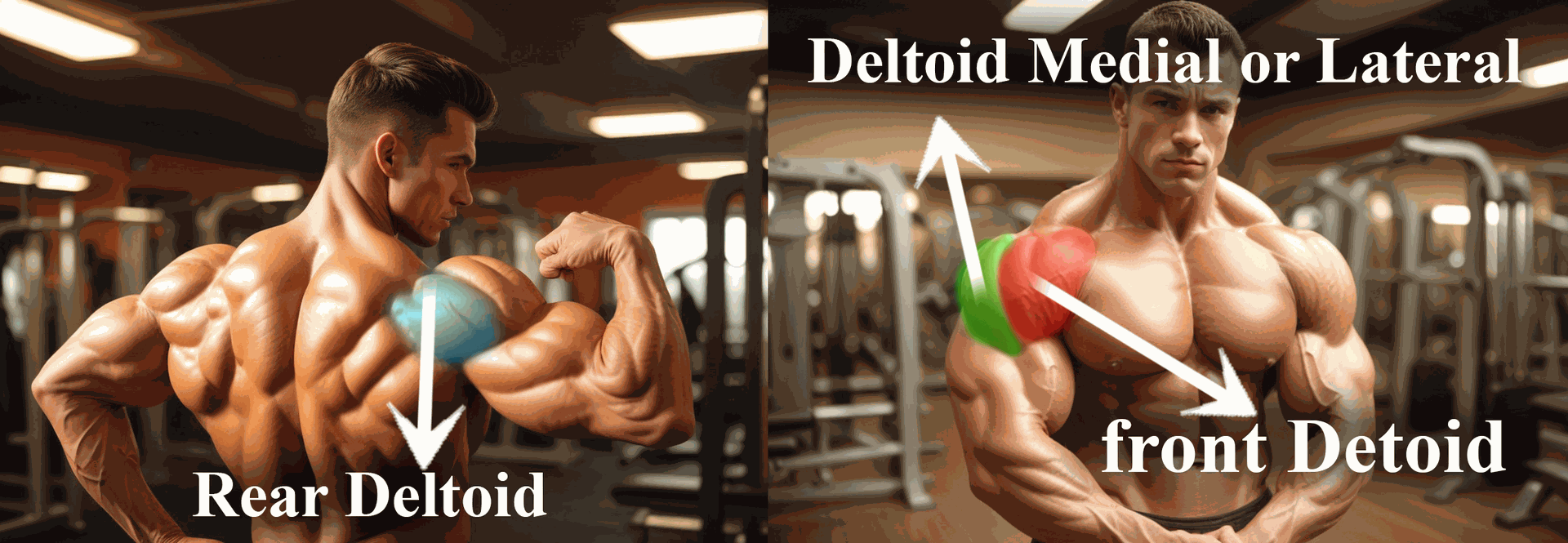
To effectively target your shoulders, it’s essential to understand the key muscles involved:
- Deltoids: The deltoids are the primary muscles of the shoulder, consisting of three distinct heads:
- Anterior Deltoid (Front): Involved in shoulder flexion and inward rotation.
- Lateral Deltoid (Side): Responsible for shoulder abduction.
- Posterior Deltoid (Rear): Assists in shoulder extension and outward rotation.
- Rotator Cuff: A group of muscles and tendons that stabilize the shoulder joint.
Foundational Shoulder Exercises
Incorporate these foundational exercises into your routine to build strength, stability, and definition in your shoulders:
1. Overhead Press
Benefits: The overhead press is a compound movement that targets all three heads of the deltoids, enhancing overall shoulder strength and stability.
How to Perform:
- Stand with feet shoulder-width apart, holding a barbell or dumbbells at shoulder height with palms facing forward.
- Press the weight overhead until your arms are fully extended.
- Slowly lower the weight back to shoulder height.
- Aim for 3 sets of 8-12 repetitions.
2. Lateral Raises
Benefits: Lateral raises specifically target the lateral deltoids, helping to build width and definition in the shoulders.
How to Perform:
- Stand with feet hip-width apart, holding a dumbbell in each hand at your sides.
- Raise your arms out to the sides until they are parallel with the floor.
- Slowly lower the weights back to the starting position.
- Aim for 3 sets of 10-15 repetitions.
3. Front Raises
Benefits: Front raises isolate the anterior deltoids, promoting strength and muscle growth in the front of the shoulders.
How to Perform:
- Stand with feet hip-width apart, holding a dumbbell in each hand at your sides.
- Raise one arm straight in front of you to shoulder height, keeping your palm facing down.
- Lower the weight back to the starting position and repeat with the other arm.
- Aim for 3 sets of 10-15 repetitions per arm.
4. Rear Delt Flyes
Benefits: Rear delt flyes target the posterior deltoids, improving shoulder balance and posture.
How to Perform:
- Bend at the hips with a slight bend in your knees, holding dumbbells with palms facing each other.
- Raise your arms out to the sides until they are parallel with the floor.
- Slowly lower the weights back to the starting position.
- Aim for 3 sets of 10-15 repetitions.
5. Arnold Press
Benefits: The Arnold press engages all three heads of the deltoids while incorporating a rotational movement, enhancing overall shoulder development.
How to Perform:
- Sit or stand with a dumbbell in each hand, palms facing your shoulders.
- Press the weights overhead while rotating your palms outward.
- Reverse the motion to return to the starting position.
- Aim for 3 sets of 8-12 repetitions.
6. Face Pulls
Benefits: Face pulls strengthen the rear deltoids and the rotator cuff, improving shoulder stability and preventing injuries.
How to Perform:
- Attach a rope to a high pulley on a cable machine.
- Grip the rope with both hands, palms facing each other.
- Pull the rope towards your face, keeping your elbows high and flaring outwards.
- Slowly return to the starting position.
- Aim for 3 sets of 12-15 repetitions.
Tips for Effective Shoulder Training
- Warm-Up Thoroughly: Begin with a proper warm-up to prepare your shoulder muscles and joints.
- Focus on Form: Proper technique is crucial to prevent injuries and ensure maximum muscle activation.
- Progress Gradually: Increase weights and intensity gradually to avoid overtraining and injuries.
- Incorporate Variety: Use different exercises and angles to target all parts of the shoulders.
- Rest and Recovery: Allow adequate rest between workouts to let your muscles recover and grow.
- Mind-Muscle Connection: Concentrate on the contraction of your shoulder muscles during each exercise to maximize effectiveness.
Top 8 Shoulder Exercises for Optimal Definition:
1. Barbell Overhead Press
- Target Muscle: Primarily targets the anterior and medial deltoids.
- Description: Standing with your feet shoulder-width apart, lift a barbell from your chest overhead, extending your arms fully.
- Proper Form Tips: Keep your core tight and push the bar in a straight line. Avoid arching your back excessively, maintaining solid core engagement throughout the motion.
2. Dumbbell Lateral Raise
- Target Muscle: Medial deltoids.
- Description: Stand with your feet hip-width apart, holding dumbbells at your sides. Lift the weights outward to the side, keeping a slight bend in the elbows, until arms are parallel with the floor.
- Proper Form Tips: Use a controlled motion without swinging the weights, focusing on the lateral deltoids. Keep your torso still, engaging your core to stabilize your posture.
3. Arnold Press
- Target Muscle: All heads of the deltoids, with emphasis on the front.
- Description: Start with dumbbells at shoulder height, palms facing you. As you press the dumbbells overhead, rotate your hands so that your palms face forward at the top of the movement.
- Proper Form Tips: Ensure a smooth rotation and maintain a steady, controlled pace. Keep your back straight and avoid using your legs to lift the weights.
4. Front Raise
- Target Muscle: Anterior deltoids.
- Description: Stand with dumbbells in front of your thighs and lift them straight in front of you to shoulder height, then lower back down slowly.
- Proper Form Tips: Maintain a slight bend in your elbows throughout the movement and keep your torso stationary to avoid momentum.
5. Reverse Pec Deck Fly
- Target Muscle: Posterior deltoids.
- Description: Use the pec deck machine backwards by sitting with your chest against the backrest. Grip the handles and pull them back until your arms are extended to your sides.
- Proper Form Tips: Focus on squeezing your shoulder blades together at the peak of the movement, ensuring the tension remains on your rear deltoids.
6. Seated Bent-Over Rear Delt Raise
- Target Muscle: Posterior deltoids.
- Description: Sit on the end of a bench, bending forward with your chest on your thighs. Holding dumbbells, lift them to the sides, maintaining a bent elbow posture.
- Proper Form Tips: Keep your neck in line with your spine, and lift the weights using your rear deltoids rather than your back.
7. Upright Row
- Target Muscle: Deltoids and traps.
- Description: Stand with your feet shoulder-width apart, holding a barbell or dumbbells in front of you. Lift straight up to your chin, keeping the weights close to your body.
- Proper Form Tips: Lead with your elbows and keep the bar close to your body to maximize engagement of the shoulders and minimize wrist strain.
8. Cable Face Pull
- Target Muscle: Posterior deltoids and upper trapezius.
- Description: Attach a rope to a high pulley and pull the weight towards your face, splitting the rope apart and moving your hands past your ears.
- Proper Form Tips: Focus on pulling with your rear deltoids and traps, squeezing at the back of the movement.
Conclusion
Enhancing your shoulder strength, stability, and aesthetics requires a strategic approach involving effective exercises, proper form, and consistency. By integrating these foundational shoulder exercises into your workout routine and following the provided tips, you can achieve well-defined and powerful shoulders.
At ActiveLifeLine.com, we are committed to delivering expert-backed health and fitness guidance. Stay tuned for more tips and strategies to help you lead an active, healthy lifestyle.
Leg Workouts: Develop Powerful, Well-Defined Legs
Welcome to ActiveLifeLine.com, your trusted source for expert-backed health and fitness information. In today’s blog, we explore effective leg workouts designed to develop powerful, well-defined legs by targeting the quadriceps, hamstrings, glutes, and calves. These exercises will help you build functional strength and enhance athletic performance.
The Importance of Leg Training
Strong legs are fundamental to overall fitness and play a crucial role in daily activities and athletic endeavors. Benefits of well-developed leg muscles include:
- Improved Functional Strength: Strong legs support essential movements such as walking, running, and jumping.
- Enhanced Athletic Performance: Athletes benefit from powerful legs, which contribute to speed, agility, and explosive power.
- Injury Prevention: Strengthening the muscles around the knees and hips can reduce the risk of injuries.
- Balanced Physique: Well-developed legs contribute to a balanced and aesthetically pleasing physique.
Understanding Leg Anatomy
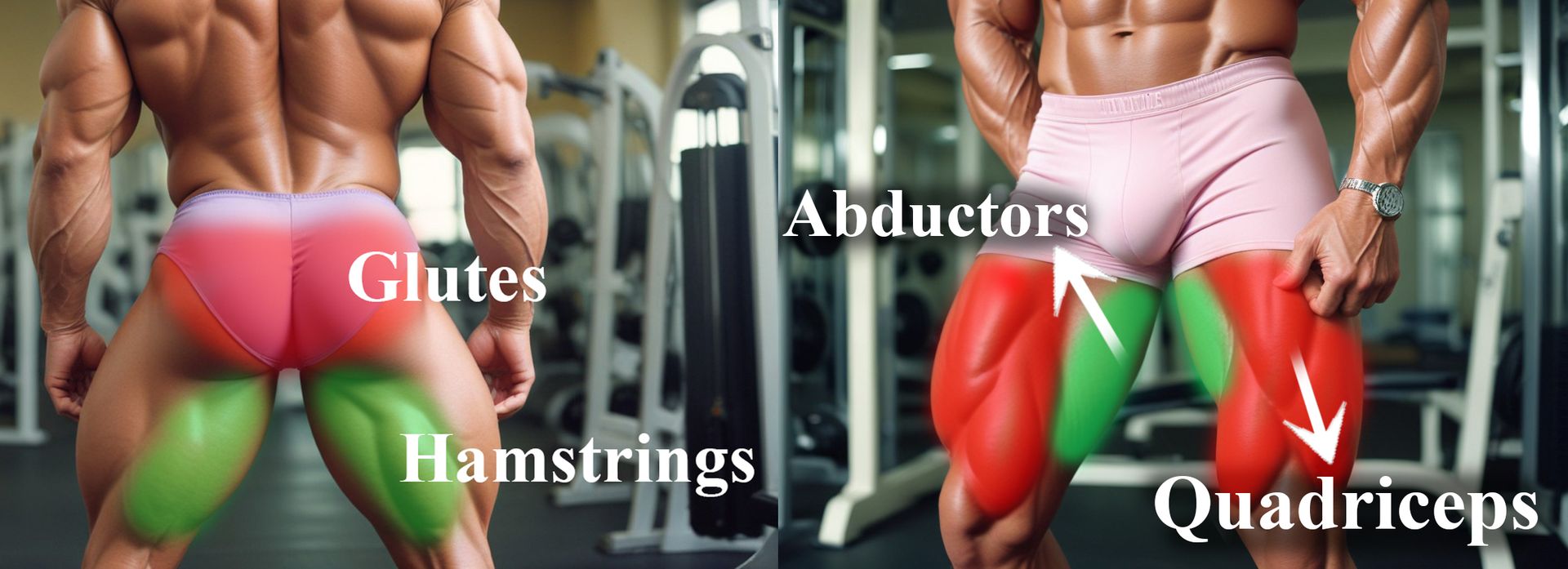
To effectively target your legs, it’s important to understand the key muscle groups involved:
- Quadriceps: Located at the front of the thigh, the quadriceps consist of four muscles responsible for knee extension.
- Hamstrings: Located at the back of the thigh, the hamstrings are crucial for knee flexion and hip extension.
- Glutes: The gluteal muscles, including the gluteus maximus, medius, and minimus, are essential for hip movement and stability.
- Calves: The calf muscles, including the gastrocnemius and soleus, are important for ankle and foot movements.
Foundational Leg Exercises
Incorporate the following exercises into your routine to build strength, definition, and functionality in your legs:
1. Squats
Benefits: Squats are a fundamental exercise that targets the quadriceps, hamstrings, and glutes, promoting overall lower body strength and stability.
How to Perform:
- Stand with feet shoulder-width apart, holding a barbell across your upper back or with dumbbells at your sides.
- Lower your body by bending your knees and hips, keeping your back straight and chest up.
- Descend until your thighs are parallel to the floor, then push through your heels to return to the starting position.
- Aim for 3 sets of 8-12 repetitions.
2. Deadlifts
Benefits: Deadlifts target the hamstrings, glutes, and lower back, enhancing posterior chain strength and stability.
How to Perform:
- Stand with feet hip-width apart, a barbell in front of you.
- Bend at the hips and knees to grip the barbell with hands just outside your knees.
- Keep your back straight and lift the bar by extending your hips and knees.
- Lower the bar back to the ground with control.
- Aim for 3 sets of 6-10 repetitions.
3. Lunges
Benefits: Lunges engage the quadriceps, hamstrings, and glutes, improving balance and unilateral strength.
How to Perform:
- Stand with feet hip-width apart, holding dumbbells at your sides.
- Step forward with one leg and lower your body until both knees are bent at 90 degrees.
- Push through the front heel to return to the starting position.
- Repeat on the other leg.
- Aim for 3 sets of 10-12 repetitions per leg.
4. Leg Press
Benefits: The leg press machine allows you to target the quadriceps, hamstrings, and glutes with controlled resistance, making it a great addition to your leg routine.
How to Perform:
- Sit on the leg press machine with your feet shoulder-width apart on the platform.
- Lower the platform by bending your knees towards your chest.
- Press the platform back up to the starting position without locking your knees.
- Aim for 3 sets of 10-15 repetitions.
5. Romanian Deadlifts
Benefits: Romanian deadlifts specifically target the hamstrings and glutes, promoting posterior chain strength and flexibility.
How to Perform:
- Stand with feet hip-width apart, holding a barbell or dumbbells in front of your thighs.
- Hinge at the hips, lowering the weight while keeping your back straight and knees slightly bent.
- Lower the weight until you feel a stretch in your hamstrings, then return to the starting position by extending your hips.
- Aim for 3 sets of 10-12 repetitions.
6. Calf Raises
Benefits: Calf raises focus on the gastrocnemius and soleus muscles, enhancing lower leg strength and definition.
How to Perform:
- Stand with the balls of your feet on the edge of a step or raised platform, holding dumbbells at your sides.
- Raise your heels as high as possible by contracting your calves.
- Lower your heels back down below the platform level for a full stretch.
- Aim for 3 sets of 15-20 repetitions.
Tips for Effective Leg Training
- Warm-Up Thoroughly: Begin with a proper warm-up to prepare your leg muscles and joints for the workout.
- Focus on Form: Proper technique is crucial to prevent injuries and ensure maximum muscle activation.
- Progress Gradually: Increase weights and intensity gradually to continue making gains without overtraining.
- Incorporate Variety: Use different exercises and angles to target all parts of the legs.
- Rest and Recovery: Allow adequate rest between workouts to let your muscles recover and grow.
- Mind-Muscle Connection: Concentrate on the contraction of your leg muscles during each exercise to maximize effectiveness.
Top 8 Leg Exercises for Optimal Lower Body Development:
1. Squats
- Target Muscles: Quadriceps, hamstrings, glutes, and core.
- Description: Stand with feet shoulder-width apart, toes slightly outward. Bend your knees and lower your body as if sitting in a chair, keeping your back straight and chest up.
- Proper Form Tips: Ensure your knees do not go over your toes and your thighs are parallel to the floor at the lowest point. Keep your weight on your heels and push up through your legs evenly to return to the starting position.
2. Lunges
- Target Muscles: Quadriceps, glutes, and hamstrings.
- Description: Step forward with one leg, lowering your hips until both knees are bent at about a 90-degree angle. The back knee should hover just above the ground.
- Proper Form Tips: Keep your upper body straight, shoulders back, and relaxed. Ensure your front knee is directly above your ankle, not pushed out too far.
3. Deadlifts
- Target Muscles: Hamstrings, glutes, lower back, and core.
- Description: With feet hip-width apart, bend at your hips to grip a barbell with both hands. Keep your back flat as you stand up with the barbell.
- Proper Form Tips: Drive the movement through your heels, keeping the bar close to your body as you rise. Ensure your back remains straight and the core engaged to protect your spine.
4. Leg Press
- Target Muscles: Quadriceps, hamstrings, and glutes.
- Description: Sit in a leg press machine with feet shoulder-width apart on the platform. Extend your legs until almost straight, then slowly return to the starting position.
- Proper Form Tips: Do not lock your knees at the top of the movement, and ensure your lower back remains in contact with the seat throughout the exercise.
5. Calf Raises
- Target Muscles: Calves.
- Description: Stand upright, push through the balls of your feet, and raise your heel until you are standing on your toes. Then lower slowly back to the start.
- Proper Form Tips: For best results, perform this exercise on a step or a platform to allow a greater range of motion. Use a wall or a rail for balance if needed.
6. Bulgarian Split Squats
- Target Muscles: Quadriceps and glutes, with a secondary focus on the hamstrings.
- Description: Stand a couple of feet from a bench, and place one foot on it behind you. Squat down by flexing knee and hip of your front leg.
- Proper Form Tips: Ensure your front knee stays above the ankle and does not jut out over your toes. Keep your torso upright and balance focused on the front leg.
7. Hamstring Curls
- Target Muscles: Hamstrings.
- Description: Lie face down on a leg curl machine, hooking your ankles under the padded lever. Flex your knees to pull the lever as far as possible.
- Proper Form Tips: Keep your hips firmly on the bench to prevent lifting off as you curl. Execute the movement slowly and with control.
8. Step-Ups
- Target Muscles: Glutes and quadriceps.
- Description: Place one foot on a bench or platform and step up until the leg is straight. Bring the other foot up to meet it, then step down and repeat.
- Proper Form Tips: Use a step high enough to create a 90-degree angle in your knee when you place your foot. Keep your chest up and your gaze forward throughout the exercise.
Conclusion
Developing powerful, well-defined legs requires a combination of effective exercises, proper form, and consistency. By integrating these foundational leg exercises into your workout routine and following the provided tips, you can enhance your leg strength, stability, and aesthetics, leading to improved functional strength and athletic performance.
At ActiveLifeLine.com, we are dedicated to providing you with expert-backed health and fitness guidance. Stay tuned for more tips and strategies to help you lead an active, healthy lifestyle.
Welcome to ActiveLifeLine.com, your premier source for reliable and expert-backed health and fitness information. Today, we're diving into the topic of "Triceps Toning." This blog will provide you with a comprehensive guide to targeted exercises that sculpt and define the triceps, often an overlooked muscle group in the upper arm. By incorporating these exercises into your routine, you can achieve toned, strong, and well-defined triceps.
Triceps Toning: Sculpt and Define Your Upper Arms
Understanding the Triceps
The triceps brachii, commonly referred to as the triceps, is a large muscle on the back of the upper arm. It consists of three heads:
- Long Head: Runs along the back of the arm and is involved in shoulder extension.
- Lateral Head: Located on the outer side of the arm and contributes to the muscle's overall mass and shape.
- Medial Head: Found on the inner side of the arm and is primarily active during all triceps exercises.
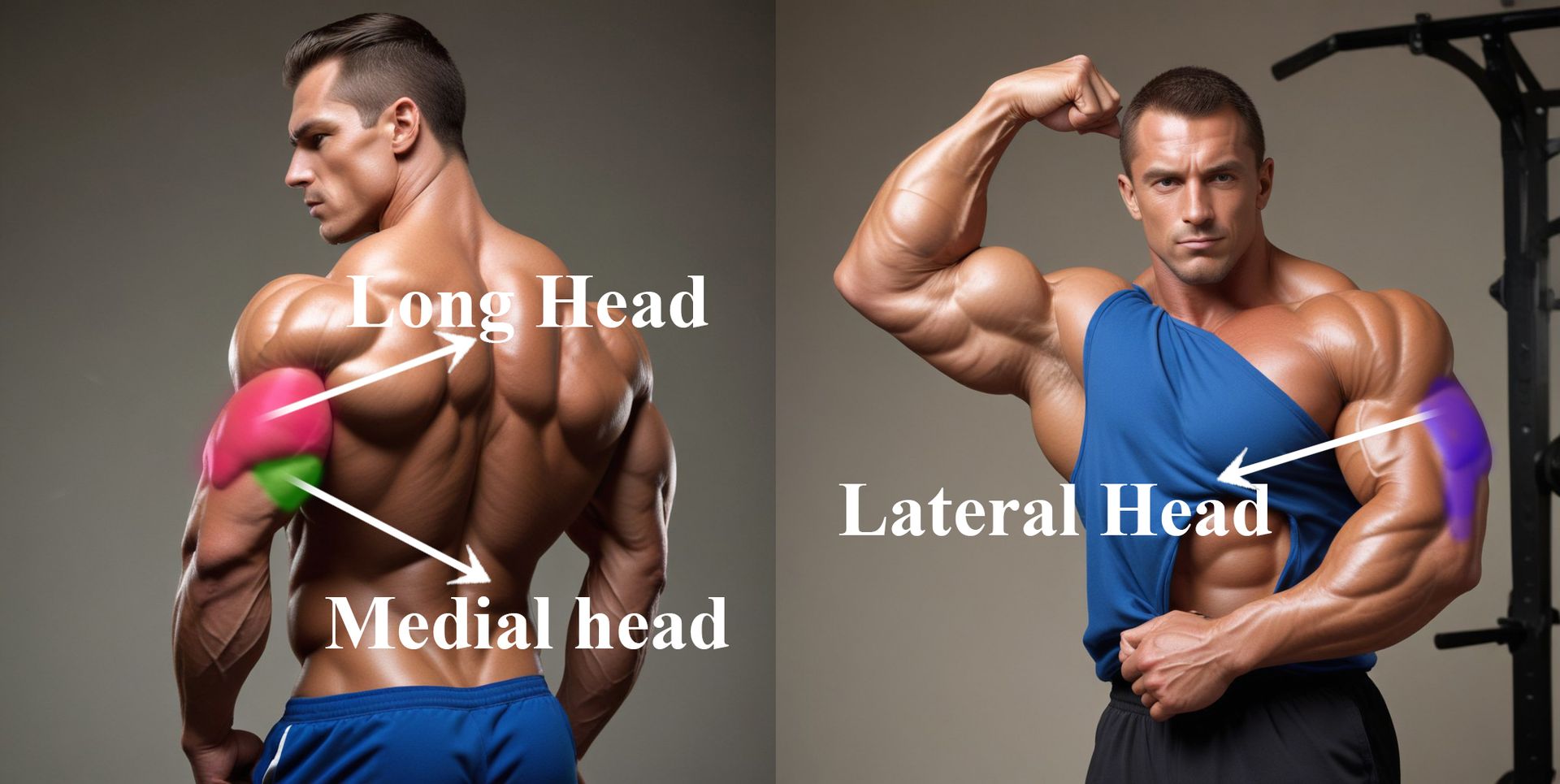
The primary function of the triceps is to extend the elbow, making it essential for pushing movements. Strengthening the triceps not only enhances arm aesthetics but also improves overall upper body strength and functionality.
Foundational Triceps Exercises
Incorporate the following exercises into your workout routine to effectively target and tone your triceps:
1. Tricep Dips
Benefits: Tricep dips are a bodyweight exercise that effectively targets all three heads of the triceps, promoting overall muscle development and strength.
How to Perform:
- Sit on the edge of a bench or chair, placing your hands beside your hips.
- Slide your hips off the bench, supporting your weight with your hands.
- Lower your body by bending your elbows until your upper arms are parallel to the floor.
- Push back up to the starting position by extending your elbows.
- Aim for 3 sets of 10-15 repetitions.
2. Close-Grip Bench Press
Benefits: The close-grip bench press emphasizes the triceps while also engaging the chest and shoulders, making it a compound movement for upper body strength.
How to Perform:
- Lie on a bench holding a barbell with a grip narrower than shoulder-width.
- Lower the barbell to your chest, keeping your elbows close to your body.
- Push the barbell back up to the starting position by extending your elbows.
- Aim for 3 sets of 8-12 repetitions.
3. Tricep Pushdowns
Benefits: Tricep pushdowns isolate the triceps, providing constant tension throughout the movement and promoting muscle growth.
How to Perform:
- Stand facing a cable machine with a high pulley, holding the bar or rope attachment with an overhand grip.
- Keep your elbows close to your body and push the bar down until your arms are fully extended.
- Slowly return to the starting position.
- Aim for 3 sets of 10-15 repetitions.
4. Overhead Tricep Extension
Benefits: Overhead tricep extensions stretch and target the long head of the triceps, enhancing muscle definition and flexibility.
How to Perform:
- Stand or sit with a dumbbell held in both hands, arms extended overhead.
- Lower the dumbbell behind your head by bending your elbows.
- Extend your arms to return to the starting position.
- Aim for 3 sets of 10-12 repetitions.
5. Skull Crushers
Benefits: Skull crushers specifically target the triceps, promoting muscle hypertrophy and definition.
How to Perform:
- Lie on a bench holding an EZ curl bar with a narrow grip.
- Lower the bar towards your forehead by bending your elbows.
- Extend your arms to return to the starting position.
- Aim for 3 sets of 10-12 repetitions.
6. Diamond Push-Ups
Benefits: Diamond push-ups engage the triceps more intensely than regular push-ups, enhancing strength and muscle tone.
How to Perform:
- Start in a push-up position with your hands close together, forming a diamond shape with your thumbs and index fingers.
- Lower your body by bending your elbows until your chest touches your hands.
- Push back up to the starting position.
- Aim for 3 sets of 8-12 repetitions.
Tips for Effective Triceps Training
- Warm-Up Thoroughly: Begin with a proper warm-up to prepare your muscles and joints for the workout.
- Focus on Form: Proper technique is crucial to prevent injuries and ensure maximum muscle activation.
- Progress Gradually: Increase weights and intensity gradually to avoid overtraining and injuries.
- Incorporate Variety: Use different exercises and angles to target all parts of the triceps.
- Rest and Recovery: Allow adequate rest between workouts to let your muscles recover and grow.
- Mind-Muscle Connection: Concentrate on the contraction of your triceps during each exercise to maximize effectiveness.
Top 8 Triceps Exercises for Optimal Toning:
1. Close-Grip Bench Press
- Target Muscles: Triceps, with secondary involvement of chest and shoulders.
- Description: Lie back on a bench, grip the barbell with hands closer than shoulder width, lower it to your chest, and then press it back up.
- Proper Form Tips: Keep your elbows close to your body to emphasize the triceps. Ensure the bar moves straight up and down. Engage your core throughout to stabilize your body.
2. Triceps Dips
- Target Muscles: Triceps.
- Description: On parallel bars or a bench, support yourself between the bars with your arms straight. Lower your body by bending your arms, then push back up to the starting position.
- Proper Form Tips: Keep your elbows pointed backwards and close to your body. Avoid dropping your shoulders below your elbows to prevent shoulder strain.
3. Overhead Triceps Extension
- Target Muscles: Triceps.
- Description: Stand or sit with a dumbbell held by both hands or a barbell behind your head, extend your arms to lift the weight overhead, and then lower back down.
- Proper Form Tips: Keep your elbows pointing forward and close to your head; move only your forearms. Your core should be tight to protect your spine.
4. Skull Crushers (Lying Triceps Extensions)
- Target Muscles: Triceps.
- Description: Lie on a bench with a barbell, and lower the bar towards your forehead by bending your elbows, then extend your arms to return to the start.
- Proper Form Tips: Perform the movement slowly to maintain control of the barbell. Keep your elbows locked in a fixed position and move only your forearms.
5. Triceps Kickbacks
- Target Muscles: Triceps.
- Description: Lean forward with a dumbbell in each hand, arms at your sides, then extend your arms back and up.
- Proper Form Tips: Keep your back straight and your upper arms stationary; only your forearms should move. Avoid swinging the weights.
6. Cable Pushdowns
- Target Muscles: Triceps.
- Description: Stand at a cable machine, grasp the bar or rope attachment, and push down until your arms are fully extended.
- Proper Form Tips: Keep your elbows pinned at your sides throughout the exercise to isolate the triceps.
7. Diamond Push-Ups
- Target Muscles: Triceps, chest, and shoulders.
- Description: Perform a push-up with your hands close together under your chest, forming a diamond shape with your thumbs and index fingers.
- Proper Form Tips: Keep your body straight from head to heels. Lower your body until your chest almost touches the floor.
8. Reverse Grip Pushdown
- Target Muscles: Triceps.
- Description: Using a cable machine, grasp the bar with an underhand grip and push down until your arms are fully extended.
- Proper Form Tips: Maintain a slight bend in your knees, and keep your core engaged. Ensure that your wrists remain neutral throughout the movement.
Conclusion
Sculpting and defining your triceps requires a combination of effective exercises, proper form, and consistency. By integrating these foundational triceps exercises into your workout routine and following the provided tips, you can achieve strong, well-defined upper arms.
At ActiveLifeLine.com, we are committed to providing you with expert-backed health and fitness guidance. Stay tuned for more tips and strategies to help you lead an active, healthy lifestyle.
Strengthen Your Grip: Wrist Workout Essentials
Welcome to ActiveLifeLine.com, your go-to source for expert-backed health and fitness information. Today, we delve into the importance of wrist strength and mobility with our comprehensive guide to effective wrist workouts. Strengthening your wrists can unlock new levels of performance and resilience, enhancing your overall fitness and reducing the risk of injury. Read on to discover essential exercises that will help you achieve strong, flexible wrists.
The Importance of Wrist Strength and Mobility
Wrist strength and mobility are crucial for various activities, from daily tasks to athletic performance. Benefits include:
- Improved Grip Strength: Strong wrists enhance your ability to hold and lift objects, essential for weightlifting and functional movements.
- Enhanced Performance: Athletes in sports like tennis, golf, and climbing benefit from increased wrist strength and flexibility.
- Injury Prevention: Strong and flexible wrists are less prone to strains, sprains, and repetitive stress injuries.
- Better Joint Health: Regular wrist exercises promote joint stability and overall wrist health.
Understanding Wrist Anatomy
To effectively target your wrists, it’s essential to understand the key structures involved:
- Bones: The wrist is comprised of eight small carpal bones connecting the hand to the forearm.
- Muscles: Several muscles, including the flexors and extensors, control wrist movement.
- Tendons and Ligaments: Tendons attach muscles to bones, while ligaments connect bones to each other, providing stability.
Foundational Wrist Exercises
Incorporate the following exercises into your routine to build strength, mobility, and resilience in your wrists:
1. Wrist Curls
Benefits: Wrist curls strengthen the wrist flexors, improving grip strength and forearm muscle definition.
How to Perform:
- Sit on a bench holding a dumbbell in each hand, palms facing up.
- Rest your forearms on your thighs, letting your wrists hang off the edge.
- Curl the dumbbells upwards by flexing your wrists.
- Slowly lower the weights back to the starting position.
- Aim for 3 sets of 12-15 repetitions.
2. Reverse Wrist Curls
Benefits: Reverse wrist curls target the wrist extensors, balancing the muscles of the forearm.
How to Perform:
- Sit on a bench holding a dumbbell in each hand, palms facing down.
- Rest your forearms on your thighs, letting your wrists hang off the edge.
- Curl the dumbbells upwards by extending your wrists.
- Slowly lower the weights back to the starting position.
- Aim for 3 sets of 12-15 repetitions.
3. Wrist Rotations
Benefits: Wrist rotations enhance wrist mobility and flexibility, crucial for various sports and daily activities.
How to Perform:
- Sit or stand holding a light dumbbell in each hand.
- Rotate your wrists in a circular motion, first clockwise and then counterclockwise.
- Perform for 30-60 seconds in each direction.
- Aim for 3 sets.
4. Farmer’s Walk
Benefits: The farmer’s walk is a full-body exercise that significantly improves grip strength and wrist stability.
How to Perform:
- Stand holding a heavy dumbbell or kettlebell in each hand.
- Walk a specified distance while maintaining a strong grip and upright posture.
- Turn around and walk back to the starting point.
- Aim for 3 sets of 30-60 seconds.
5. Plate Pinches
Benefits: Plate pinches specifically target the muscles involved in grip strength, enhancing overall wrist endurance.
How to Perform:
- Stand holding a weight plate in each hand between your thumb and fingers.
- Hold the plates for as long as possible, maintaining a firm grip.
- Aim for 3 sets of 30-60 seconds.
6. Pronation and Supination
Benefits: These exercises enhance wrist rotational strength and stability, important for activities requiring twisting motions.
How to Perform:
- Sit or stand holding a light dumbbell in each hand.
- Rotate your wrists so your palms face up (supination) and then down (pronation).
- Perform for 30-60 seconds.
- Aim for 3 sets.
Tips for Effective Wrist Training
- Warm-Up Thoroughly: Begin with a proper warm-up to prepare your wrist muscles and joints for the workout.
- Focus on Form: Proper technique is crucial to prevent injuries and ensure maximum muscle activation.
- Progress Gradually: Increase weights and intensity gradually to avoid overtraining and injuries.
- Incorporate Variety: Use different exercises and angles to target all parts of the wrists.
- Rest and Recovery: Allow adequate rest between workouts to let your muscles recover and grow.
- Mind-Muscle Connection: Concentrate on the contraction of your wrist muscles during each exercise to maximize effectiveness.
Why Wrist Strength Matters: Your wrists serve as a bridge between your hands and forearms, facilitating movements that range from basic to intricate. Whether you're lifting weights, practicing yoga, or even carrying groceries, having strong and flexible wrists can make all the difference in your daily life and fitness endeavors. Additionally, maintaining healthy wrists can help prevent injuries and alleviate discomfort associated with repetitive motions or poor ergonomics.
Top 8 Wrist Exercises for Optimal Strength and Mobility:
1. Wrist Curls
- Target Muscles: Forearm flexors.
- Description: Sit on a bench or chair with a dumbbell in each hand, palms facing up. Rest your forearms on your thighs with your wrists hanging off the knees. Curl the weights up by flexing your wrists, then lower them back down.
- Effect: Strengthens the muscles on the underside of the forearm, improving grip strength and wrist stability.
2. Reverse Wrist Curls
- Target Muscles: Forearm extensors.
- Description: Sit as you did for wrist curls, but with your palms facing down. Curl the weights up by extending your wrists upward, then lower them back down.
- Effect: Targets the muscles on the back of the forearm, promoting balanced muscle development and supporting wrist stability.
3. Wrist Extensions
- Target Muscles: Wrist extensors.
- Description: Sit or stand with your arms extended in front of you at shoulder height, palms facing down. Extend your wrists upward as far as possible, then lower them back down.
- Effect: Strengthens and stretches the wrist extensors, improving flexibility and reducing the risk of injury during activities like weightlifting or racquet sports.
4. Wrist Flexion Stretch
- Target Muscles: Wrist flexors.
- Description: Extend your arm in front of you with your palm facing up. Use your other hand to gently press your fingers towards your body until you feel a stretch in your wrist and forearm.
- Effect: Increases flexibility in the wrist flexors, alleviating tension and discomfort caused by repetitive movements or prolonged wrist positions.
5. Wrist Rotations
- Target Muscles: Forearm muscles and wrist stabilizers.
- Description: Hold a light dumbbell or a weighted object in one hand with your arm extended in front of you. Rotate your wrist in a circular motion, alternating between clockwise and counterclockwise rotations.
- Effect: Improves mobility and coordination in the wrist joint while strengthening the muscles responsible for rotational movements.
6. Finger Extensions
- Target Muscles: Finger extensors.
- Description: Place a rubber band around your fingers and thumb, then open your hand against the resistance of the band. Repeat for several reps.
- Effect: Strengthens the finger extensors, which play a vital role in grip strength and overall hand function.
7. Wrist Flexion Against Resistance
- Target Muscles: Wrist flexors.
- Description: Sit or stand with your forearm resting on a table, palm facing up. Hold a light dumbbell or a resistance band in your hand and flex your wrist upward against the resistance.
- Effect: Builds strength and endurance in the wrist flexors, enhancing grip strength and wrist stability.
8. Wrist Roller
- Target Muscles: Forearm muscles, wrist flexors, and extensors.
- Description: Hold a wrist roller device with both hands and roll the weight up and down by winding and unwinding the rope around the roller.
- Effect: Engages multiple forearm muscles simultaneously, promoting balanced muscle development and enhancing grip strength.
Correct Posture for Wrist Workouts: Maintaining proper posture is crucial during wrist exercises to prevent strain and maximize effectiveness. Sit or stand with your back straight, shoulders relaxed, and core engaged. Keep your wrists in a neutral position, avoiding excessive bending or twisting. Focus on controlled movements and maintain a steady breathing rhythm throughout your workout to optimize results and minimize the risk of injury.
Conclusion
Strengthening your grip and enhancing wrist mobility is essential for overall fitness and performance. By integrating these foundational wrist exercises into your workout routine and following the provided tips, you can achieve stronger, more resilient wrists.
Welcome to our comprehensive guide on creating effective workout routines that cater to various fitness levels and goals. Whether you're a beginner looking to get started or an experienced athlete aiming to optimize your performance, understanding the science behind workout design can significantly enhance your results. This blog will delve into the principles of exercise science, answer common questions, and provide you with the knowledge to build a personalized workout plan that aligns with your health and fitness objectives.
Why Is a Structured Workout Routine Important?
A structured workout routine is crucial for several reasons:
1. Consistency and Progression: Regular schedules help in forming habits, ensuring consistent progress. Structured plans incorporate progression, gradually increasing the intensity or volume to continue challenging your body.
2. Balance and Variety: Effective routines balance various fitness components, including strength, flexibility, and cardiovascular health, reducing the risk of overuse injuries and improving overall fitness.
3. Goal Orientation: Tailored routines align exercises to specific goals, whether it’s weight loss, muscle building, endurance enhancement, or general health improvement.
How Often Should You Change Your Workout Routine?
Adapting or changing your workout routine every 4-6 weeks is generally recommended to avoid plateaus and keep the workouts challenging. This change doesn’t need to be drastic; simple modifications like altering the weight, repetition range, or incorporating different exercises can be effective. This approach keeps the training program exciting and maintains motivation, while also ensuring that all muscle groups are targeted effectively.
What Are the Components of a Well-Rounded Workout Routine?
A well-rounded workout plan includes:
1. Warm-Up: A 5-10 minute period of light aerobic activity to increase heart rate and blood flow to muscles, reducing the risk of injury.
2. Resistance Training: Incorporates weight lifting or bodyweight exercises to improve muscle strength and endurance.
3. Cardiovascular Exercise: Activities like running, cycling, or swimming that increase heart rate and improve heart and lung health.
4. Flexibility and Mobility Work: Stretching or yoga to enhance joint range of motion and decrease muscle stiffness.
5. Cool-Down: Gradual reduction of intensity at the end of the workout to normalize body functions and promote recovery.
How Can You Tailor a Workout Plan to Specific Goals?
1. For Weight Loss: Emphasize cardiovascular exercises that burn a high number of calories, supplemented by strength training to maintain muscle mass.
2. For Muscle Gain: Focus on resistance training with progressive overload, prioritizing compound movements (like squats and bench presses) that recruit multiple muscle groups.
3. For Endurance: Incorporate prolonged sessions of cardiovascular exercises at a moderate intensity to build stamina.
What Role Does Nutrition Play in Workout Efficiency?
Nutrition is integral to workout efficiency. Consuming balanced macronutrients (proteins, fats, carbohydrates):
- Proteins rebuild and repair muscle tissues damaged during workouts.
- Carbohydrates provide energy to fuel different types of workouts.
- Fats are essential for long-term energy, especially for longer, moderate to low-intensity workouts.
Post-workout nutrition, particularly a mix of proteins and carbs, aids in recovery and muscle synthesis.
How Important Is Recovery in a Workout Routine?
Recovery is as critical as the workout itself. It allows for muscle repair, strength building, and reduces the risk of injury. Ensuring adequate rest days, getting sufficient sleep, and incorporating active recovery days where you engage in low-intensity activities like walking or gentle stretching can significantly improve performance and overall physical health.
Conclusion
Crafting an effective workout routine is a blend of science and personalization. By understanding and applying the principles of exercise science, you can create a program that not only meets your fitness goals but also keeps you engaged and motivated. Remember, the best workout plan is one that is sustainable and enjoyable for you. Stay consistent, listen to your body, and adjust as needed to keep your workouts effective and exciting.
This blog aims to educate your website visitors on how to create and sustain a workout routine that is scientifically grounded and tailored to their individual needs. By providing these insights, you help them make informed decisions about their fitness strategies.
Question and answers
Below are ten customer-centric questions about workout routines, reflecting common concerns and confusion often faced by individuals when planning their exercise regimens. Each question is followed by a scientifically-informed solution.
1. How can I start a workout routine if I've never exercised before?
- Solution: Start with simple, low-intensity activities such as walking, light jogging, or basic bodyweight exercises like squats, push-ups, and sit-ups. Gradually increase the duration and intensity as your fitness improves. The American Heart Association recommends at least 150 minutes of moderate-intensity aerobic activity or 75 minutes of vigorous activity per week for adults.
2. How do I know if my workout routine is effective in meeting my fitness goals?
- Solution: Track your progress by noting improvements in your strength, endurance, and physical measurements. If your goal is weight loss and you haven't seen progress in a few weeks, consider adjusting your diet and increasing the intensity or frequency of your workouts. For muscle gain, look for improvements in lift weights or muscle size.
3. In 10 days, how can I see changes in my body from my workout routine?**
- Solution: While significant physical transformations typically take longer than 10 days, you can start feeling better and see small changes, especially in terms of reduced bloating and improved muscle tone. Ensure your workout includes both cardio and strength training components, and maintain a nutritious diet to maximize results.
4. How can I maintain motivation for sticking to my workout routine?
- Solution: Set clear, achievable goals, keep a workout log, and mix up your exercises to keep the routine interesting. Also, consider working out with a friend to increase accountability. Regularly remind yourself of the benefits your workouts bring to your health and well-being.
5. How do I choose the right type of exercise for my workout routine?
- Solution: Select exercises based on your fitness goals; for weight loss, focus more on cardio-based activities like cycling or swimming, and for muscle strength, incorporate more weight training. Consulting a fitness professional can also provide personalized guidance tailored to your objectives.
6. How can I prevent injuries while exercising?
- Solution: Always warm up before and cool down after your workouts. Learn the proper form and techniques for each exercise, especially when lifting weights. Gradually increase the intensity of your workouts, and listen to your body, giving it time to rest and recover.
7. How do diet and hydration affect the effectiveness of my workout routine?
- Solution: Nutrition plays a crucial role in maximizing workout effectiveness. Eat balanced meals with adequate protein for muscle repair, carbohydrates for energy, and fats for longer-term fuel. Stay hydrated to maintain performance and recovery, as dehydration can impair your physical abilities and post-workout recovery.
8. How do I balance cardio and strength training in my workout routine?
- Solution: Depending on your fitness goals, a balanced workout routine might include 3 days of cardio and 2 days of strength training per week. If you’re short on time, consider high-intensity interval training (HIIT), which effectively combines cardio and strength elements.
9. How can I fit a workout routine into my busy schedule?
- Solution: Opt for shorter, more intense workouts like HIIT, which can be completed in about 30 minutes. Alternatively, incorporate physical activity into your daily routine, such as biking to work, taking the stairs, or doing short workout sessions during lunch breaks.
10. How do recovery days fit into my workout routine?
- Solution: Recovery days are essential to allow your muscles to repair and grow. Incorporate at least one to two rest days per week, depending on the intensity of your workouts. During recovery days, engage in light activities such as walking or yoga, which help maintain mobility without overstraining your muscles.
Each of these solutions is rooted in current exercise science, ensuring that the advice is not only practical but also optimized for health and safety.
